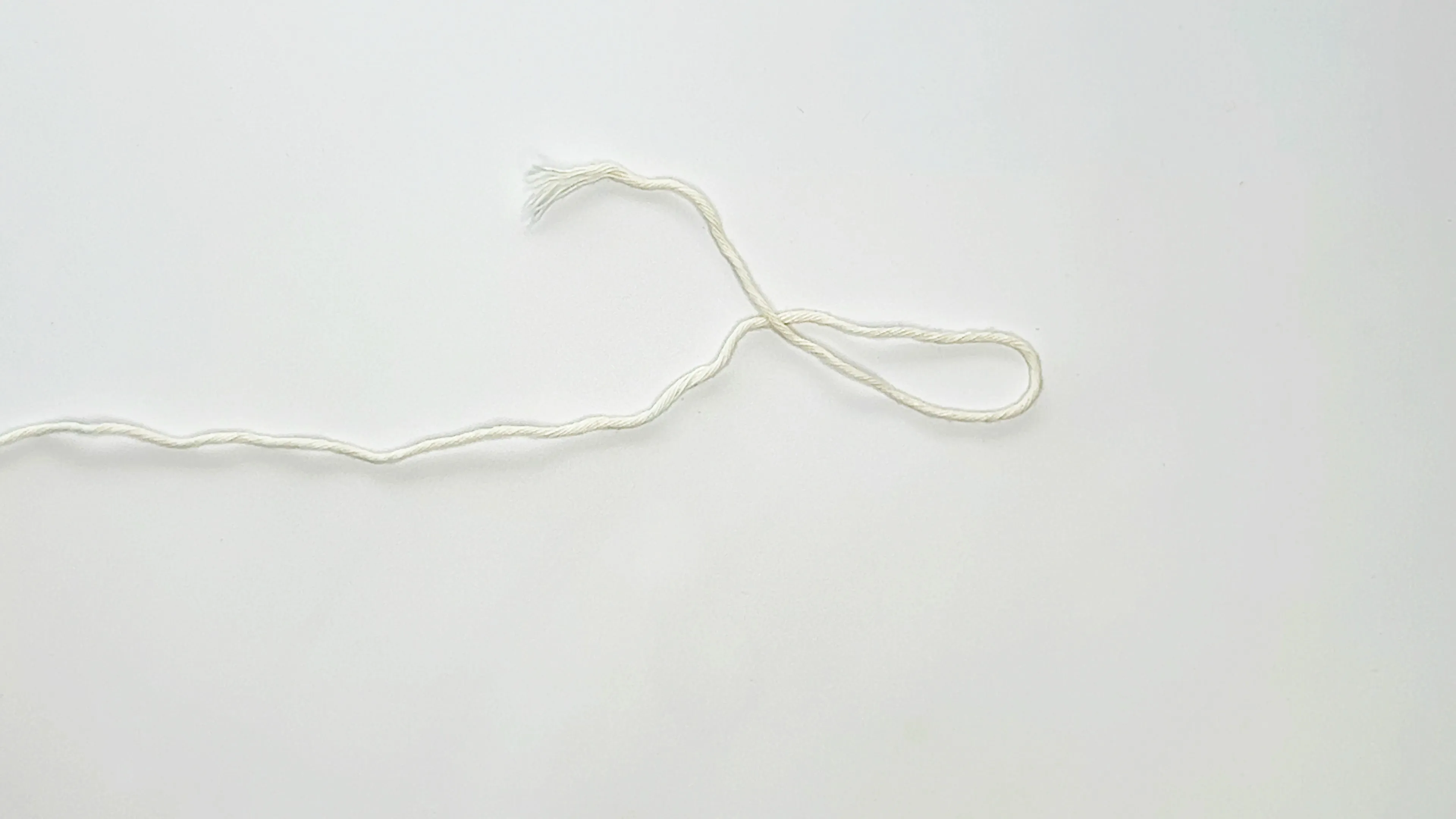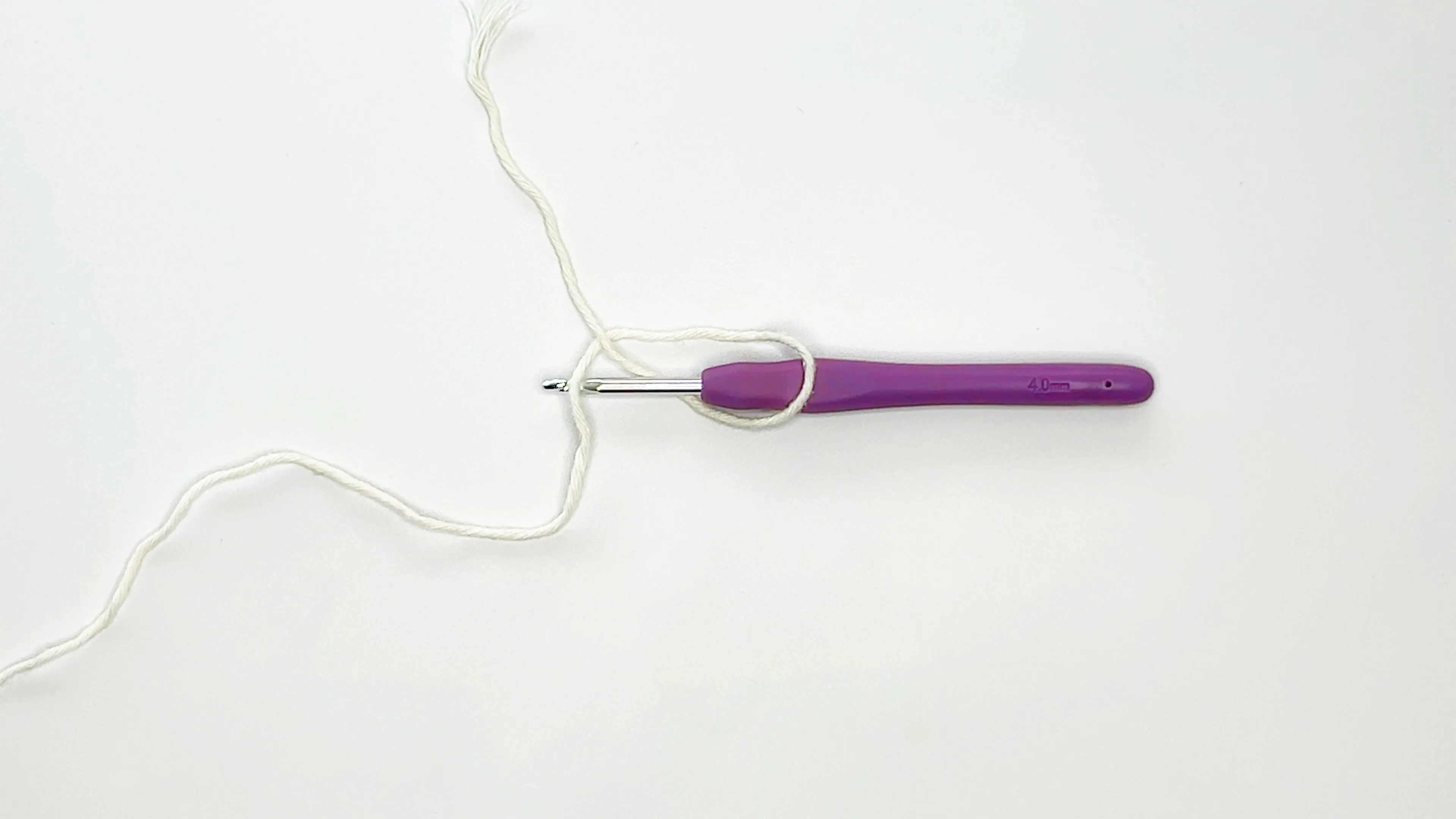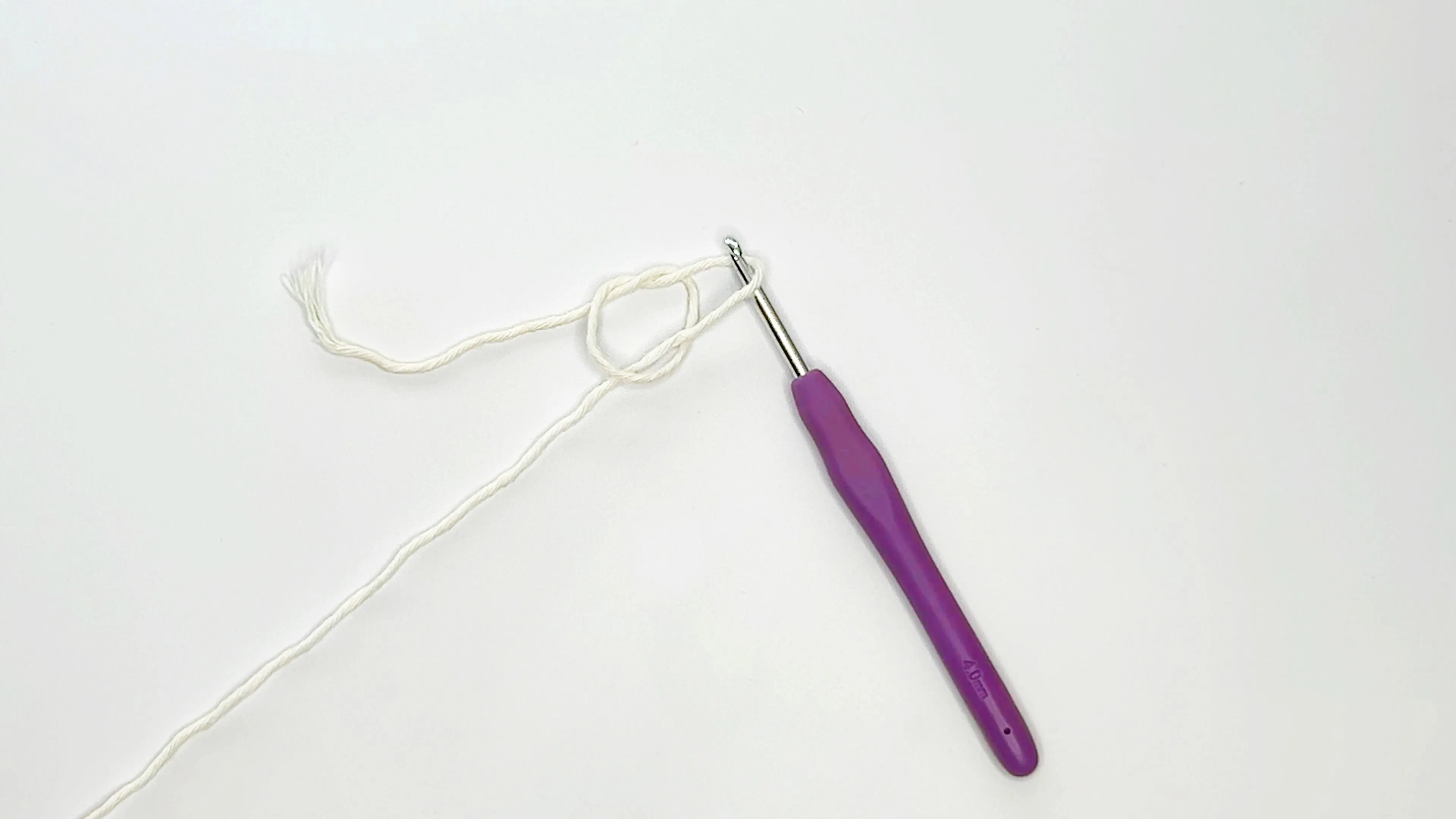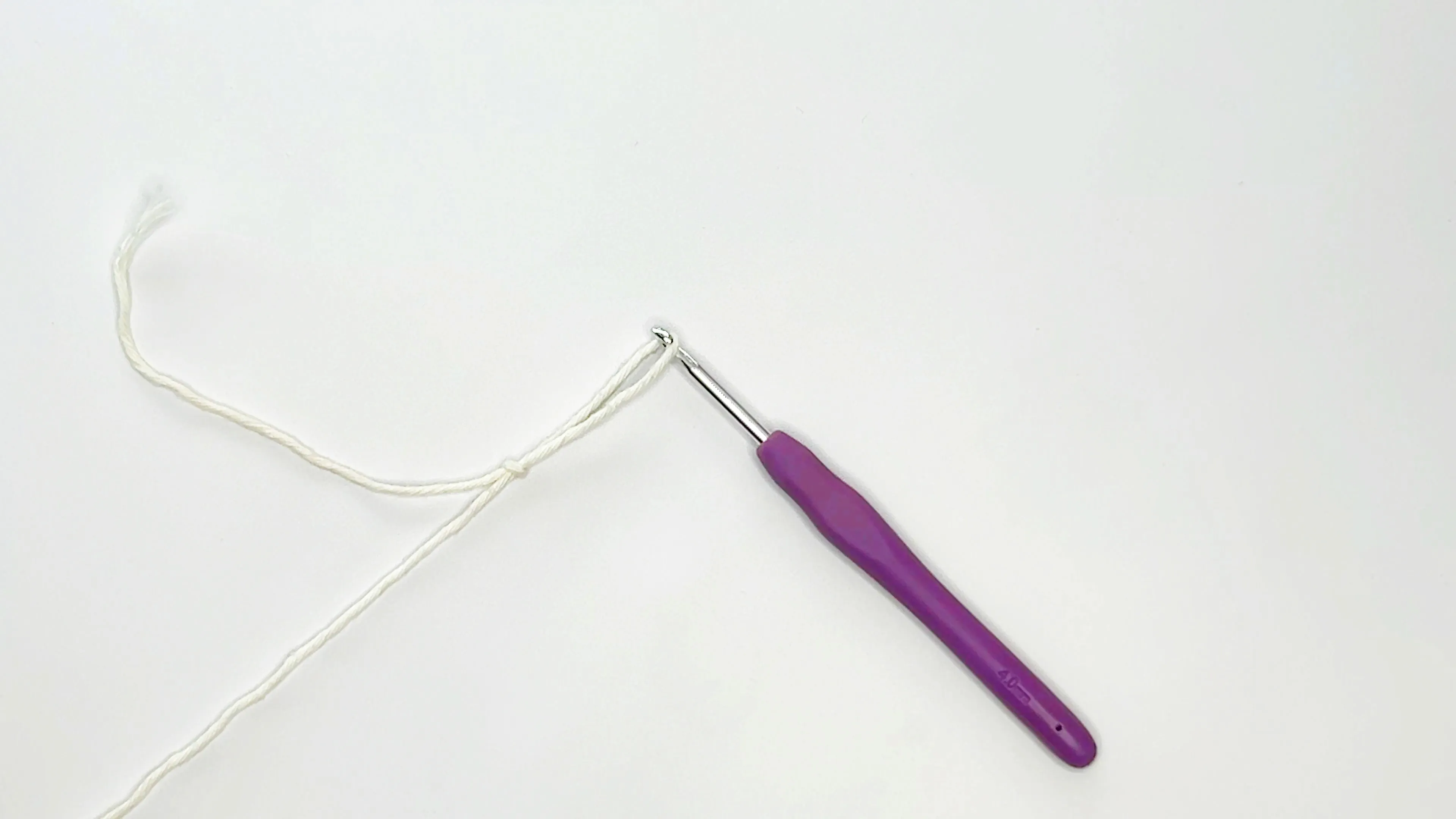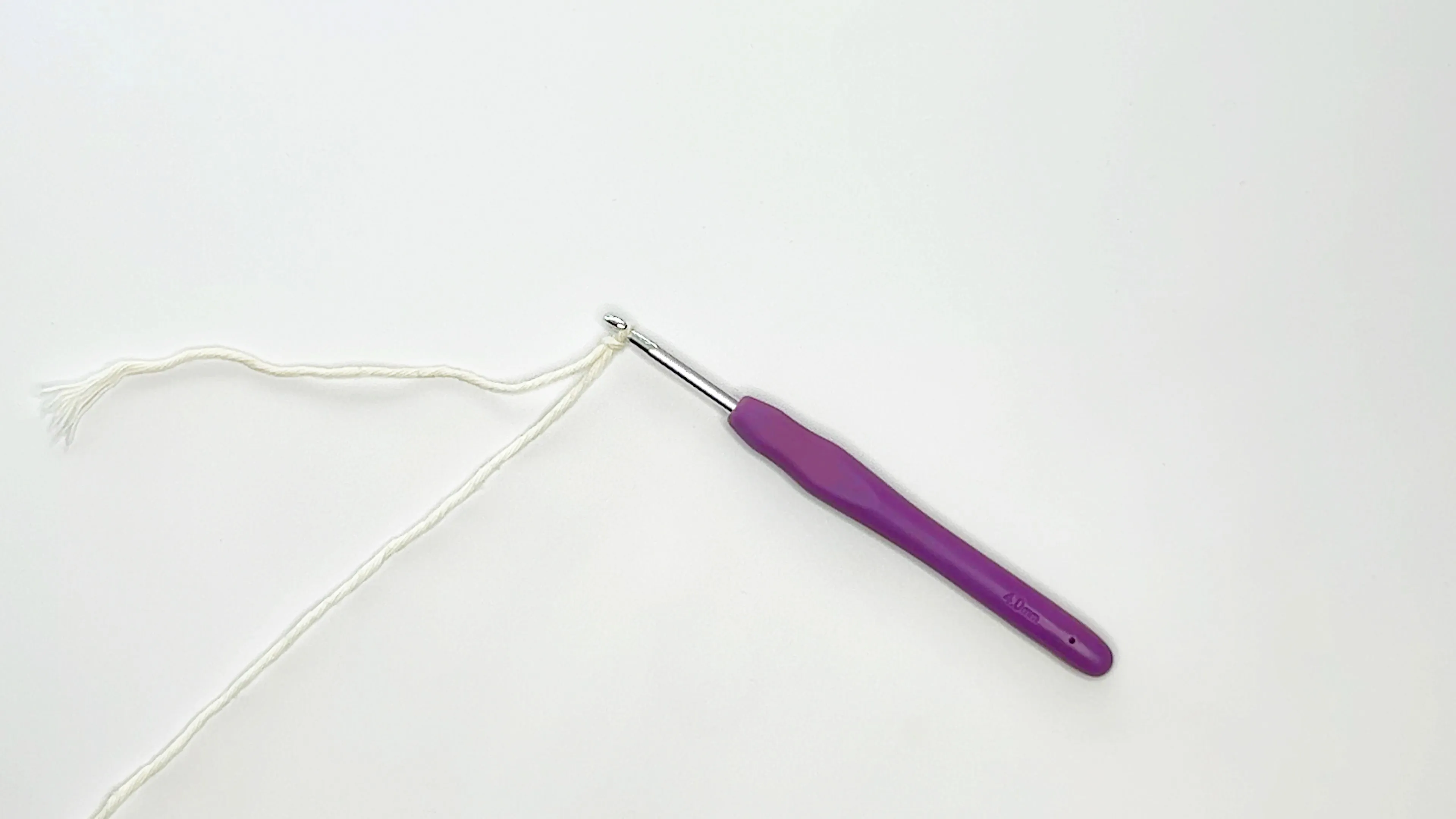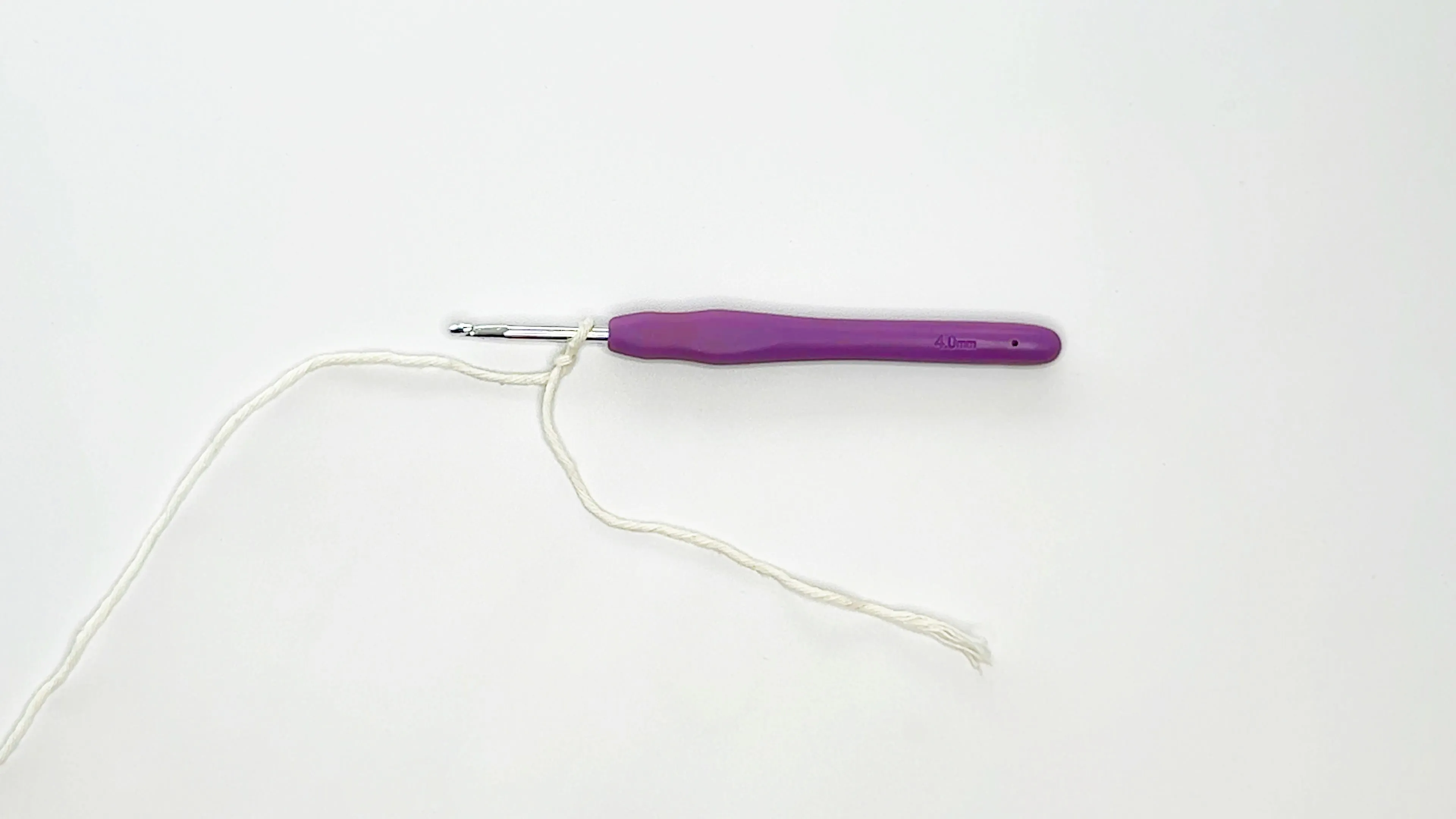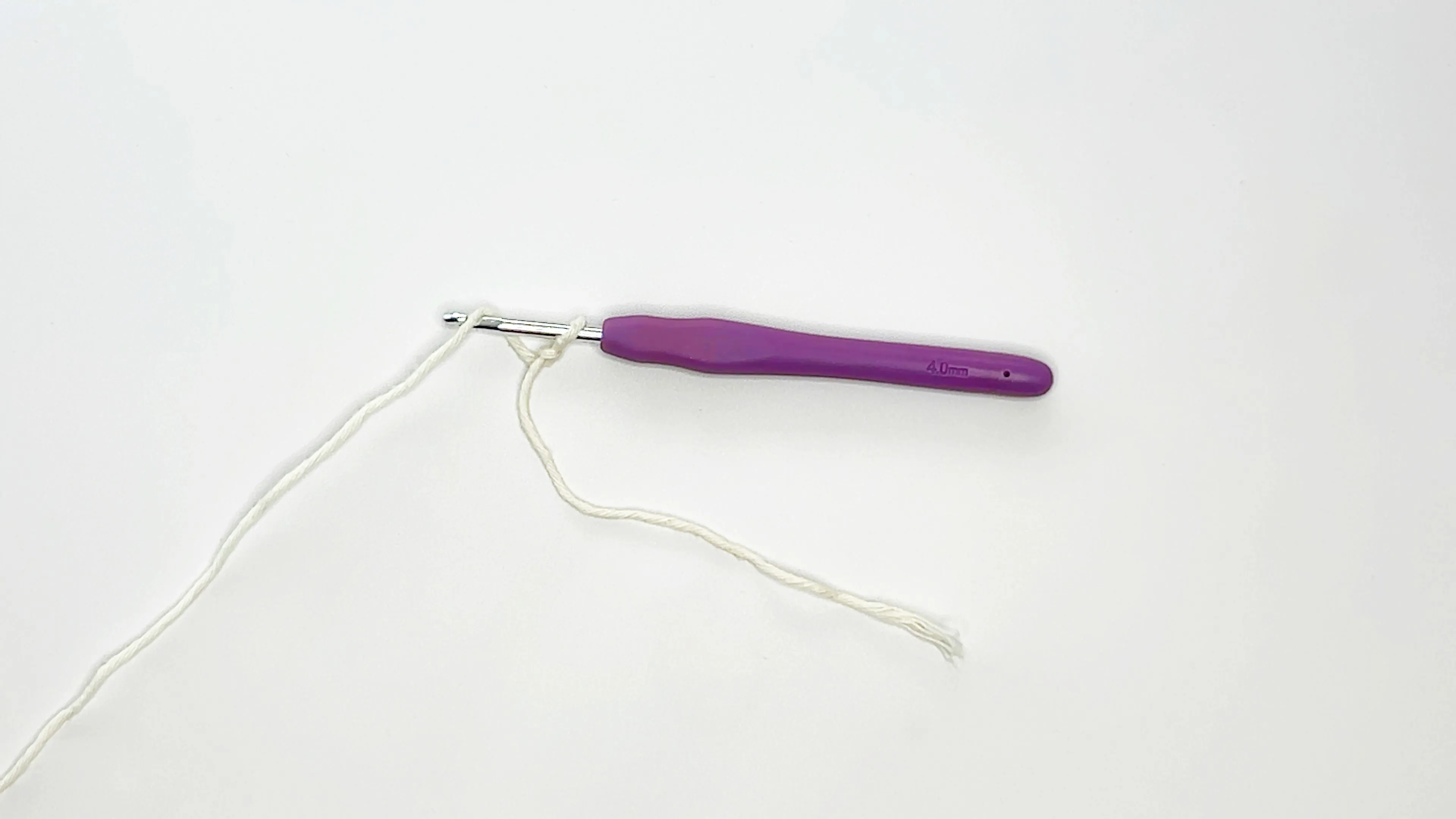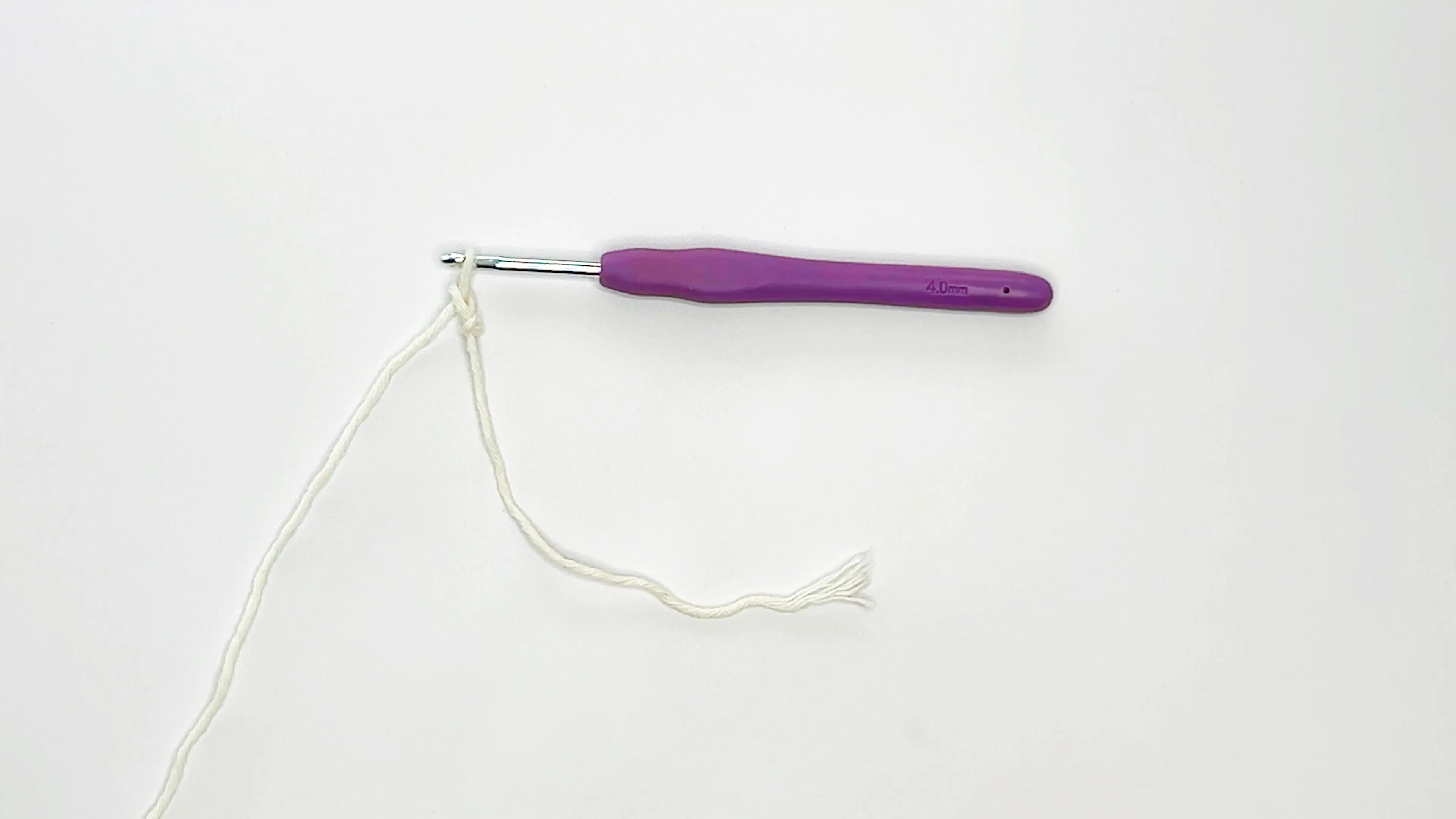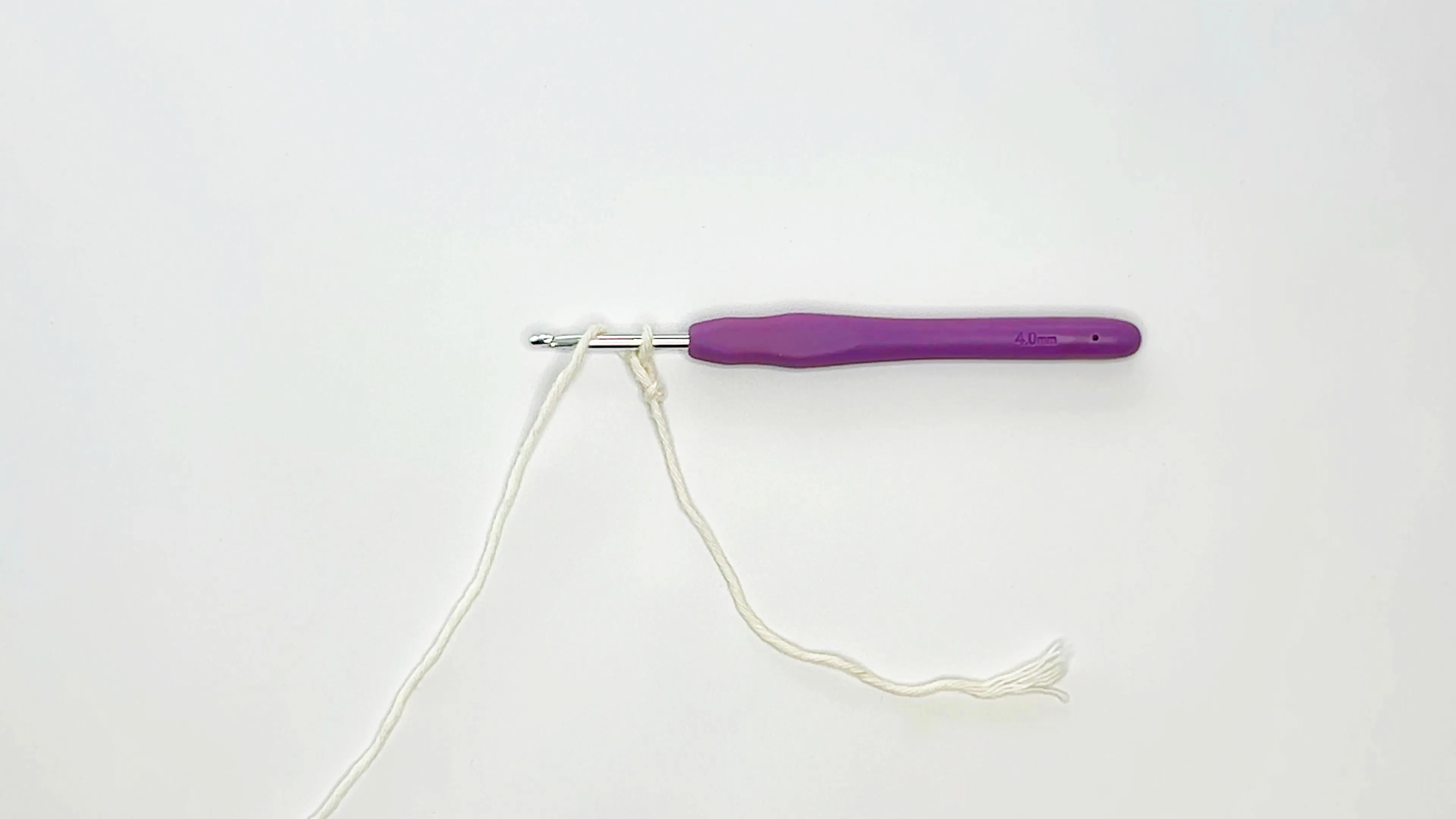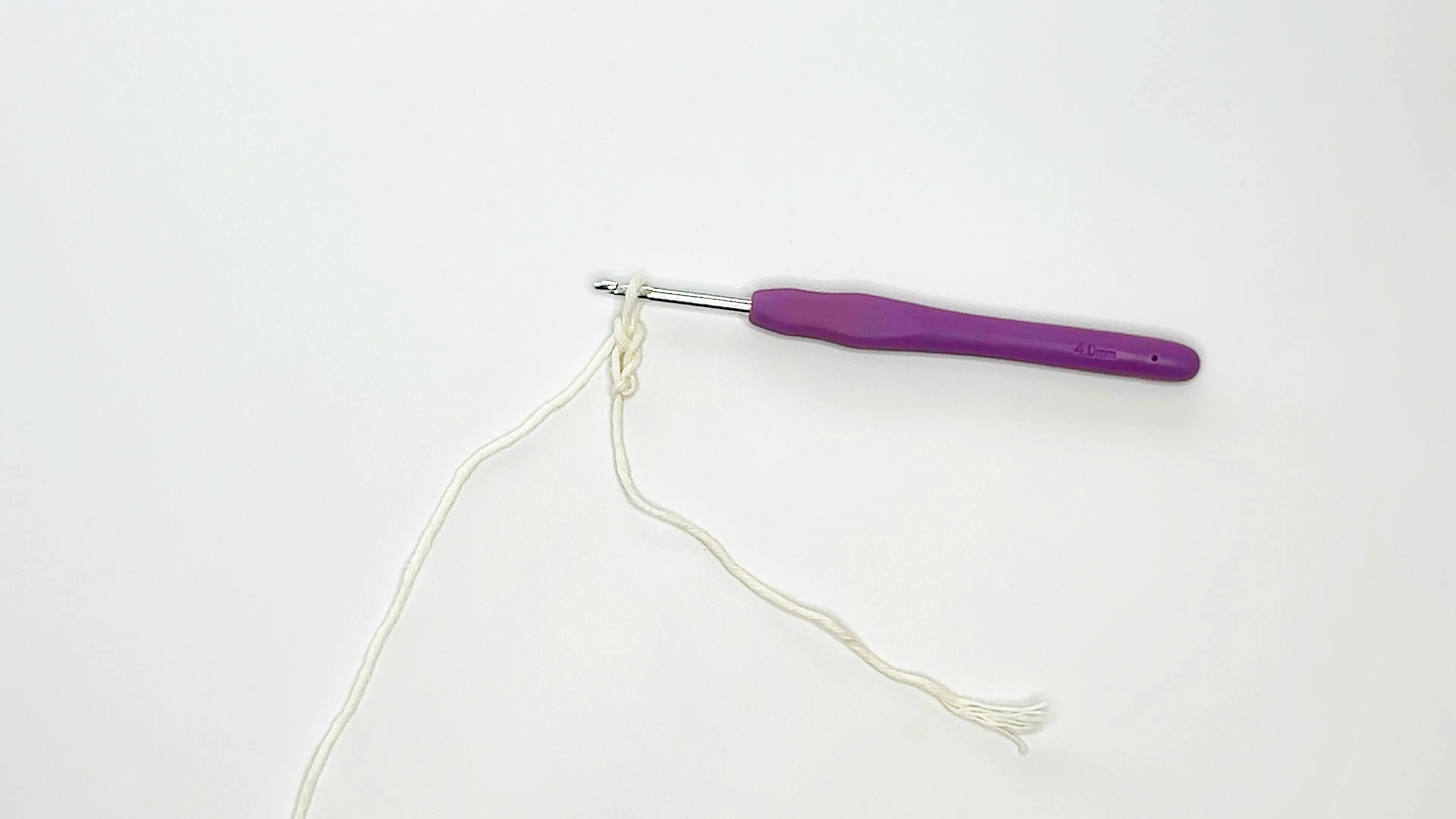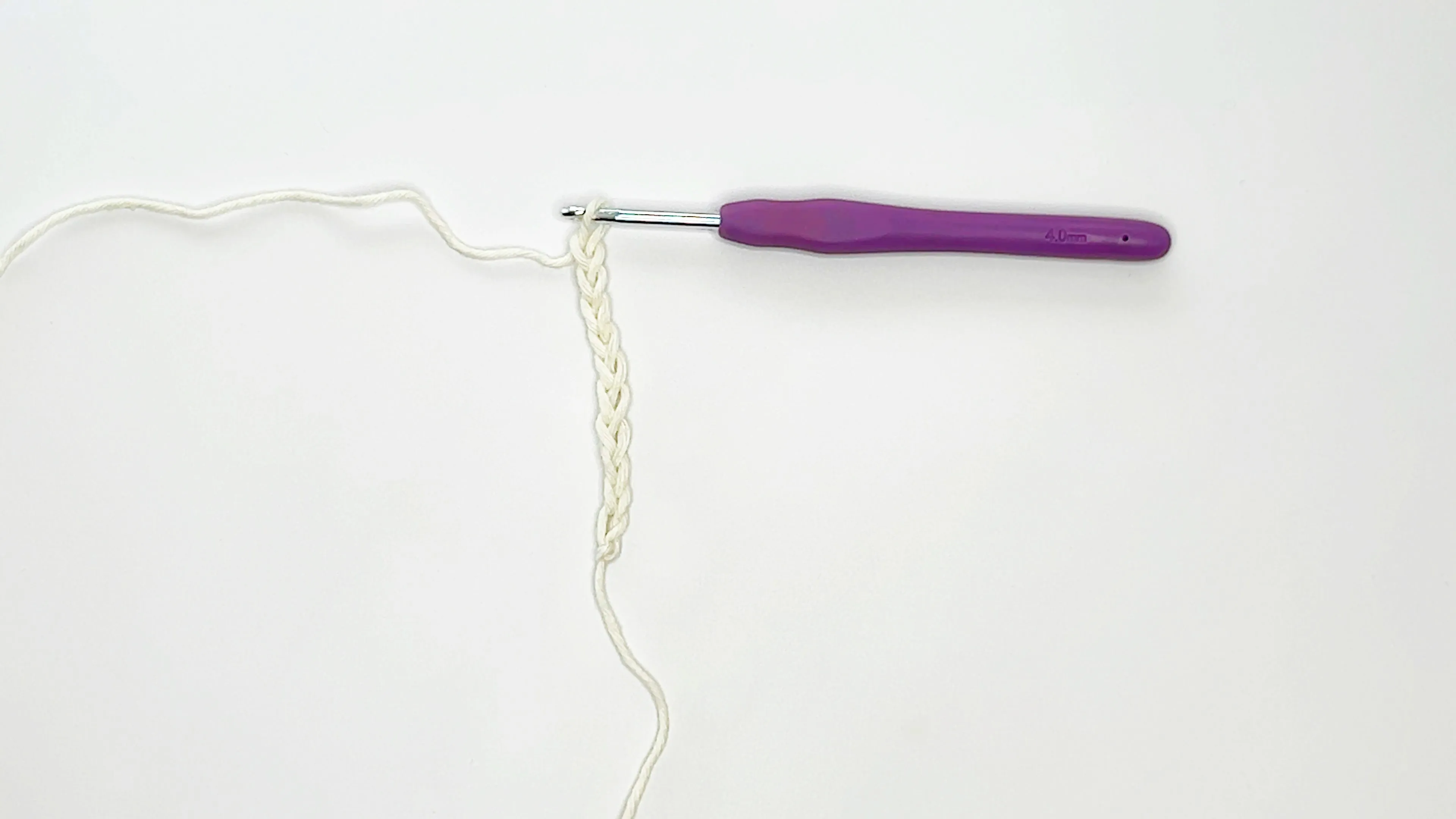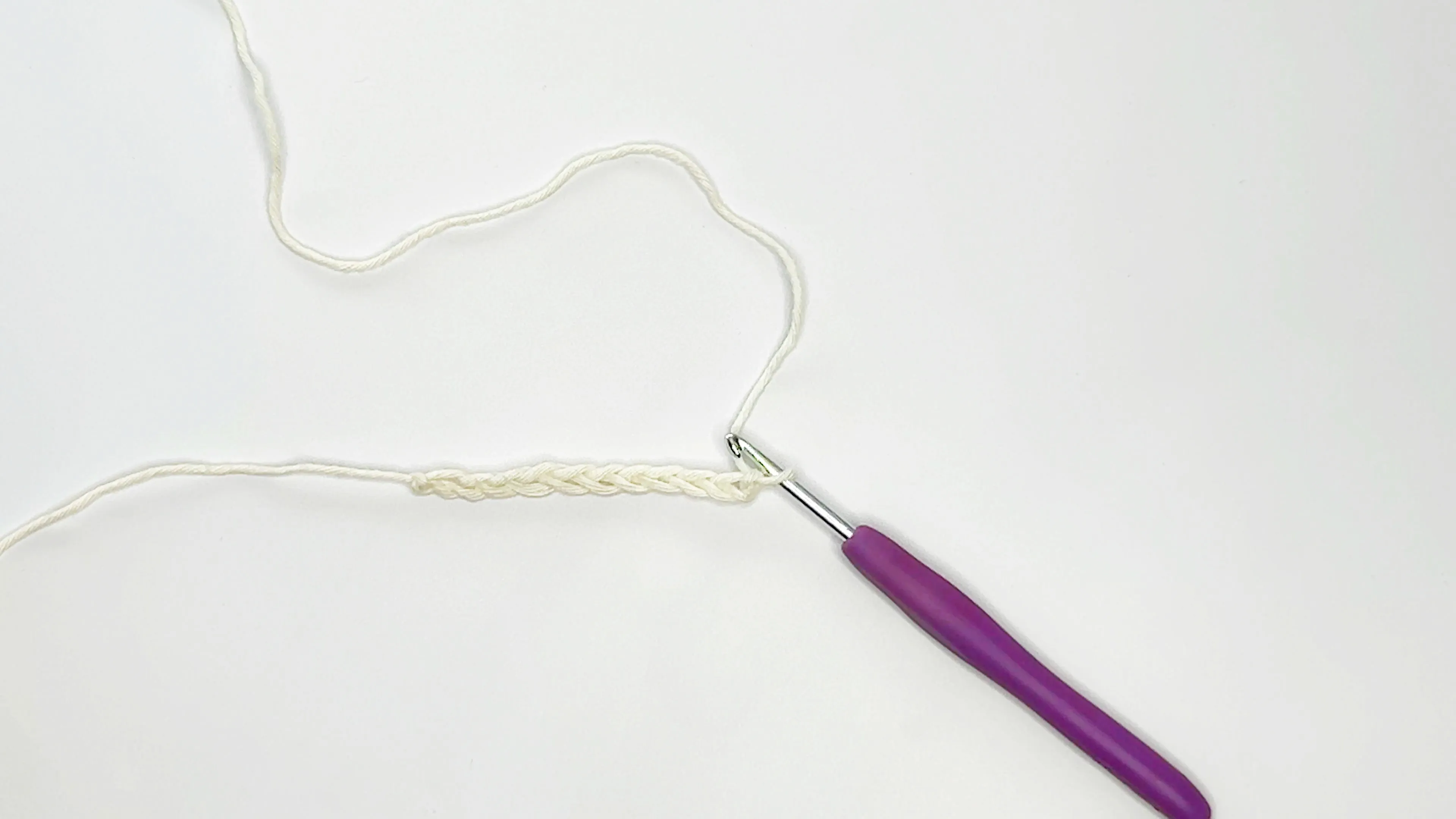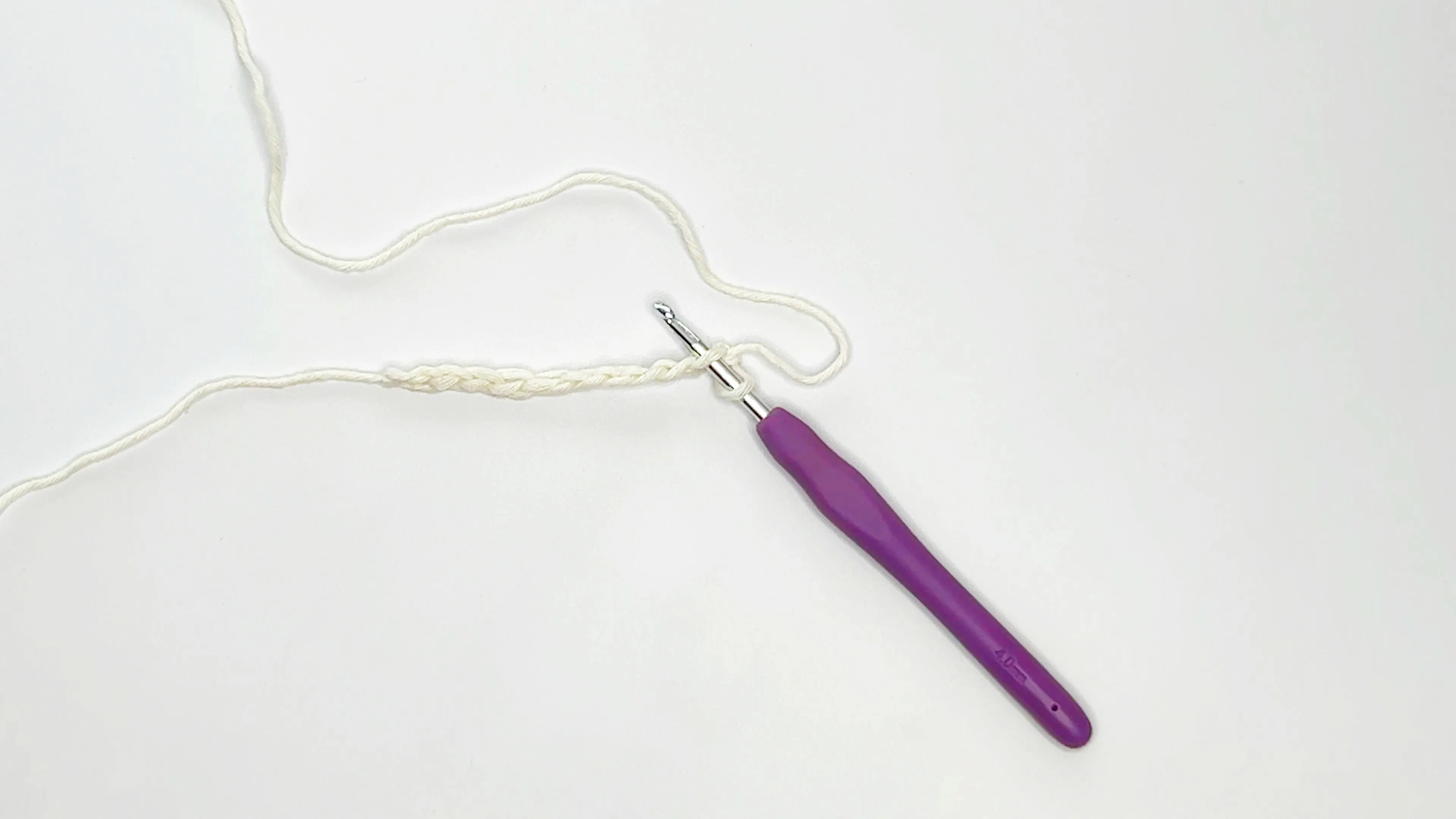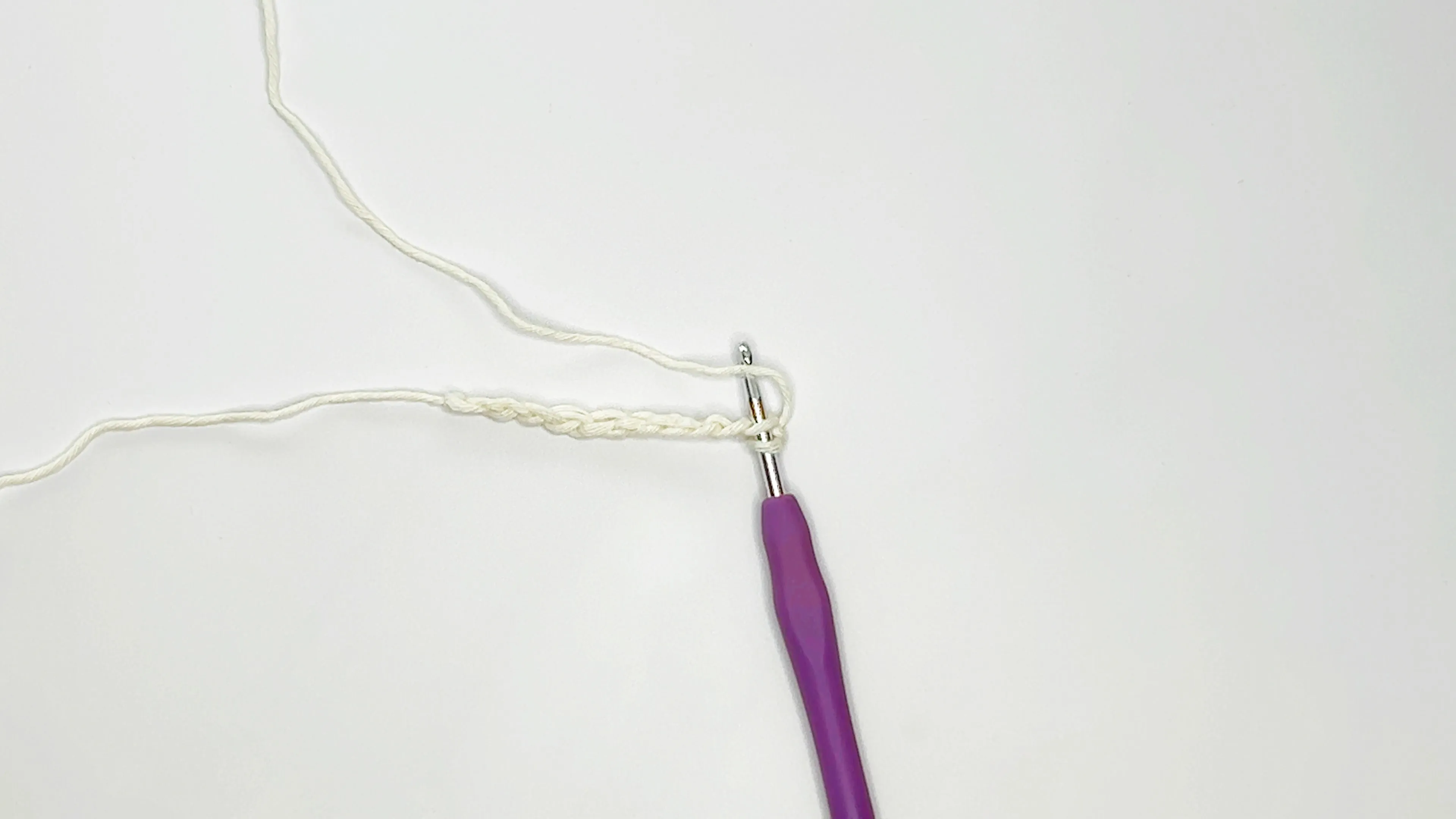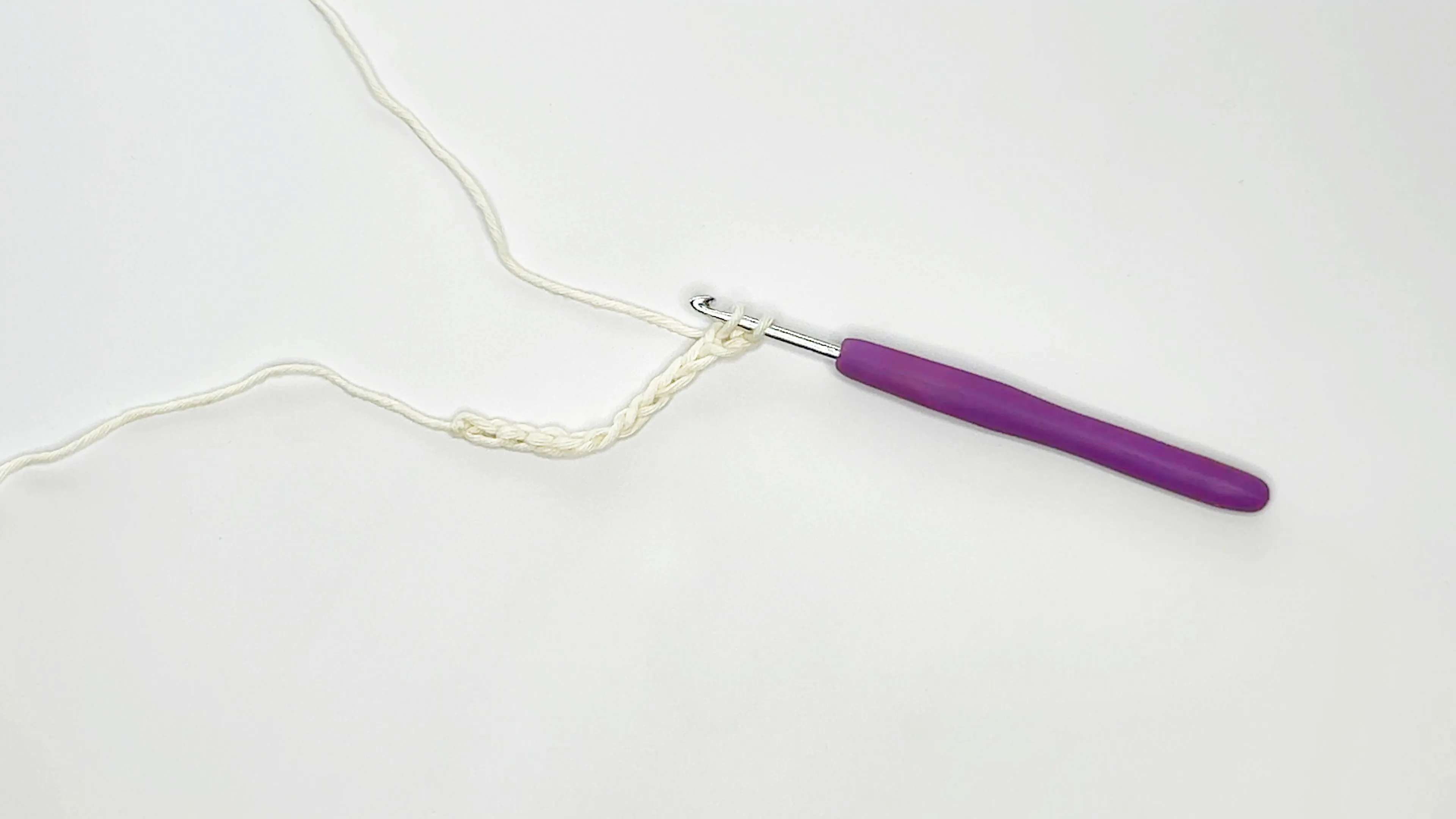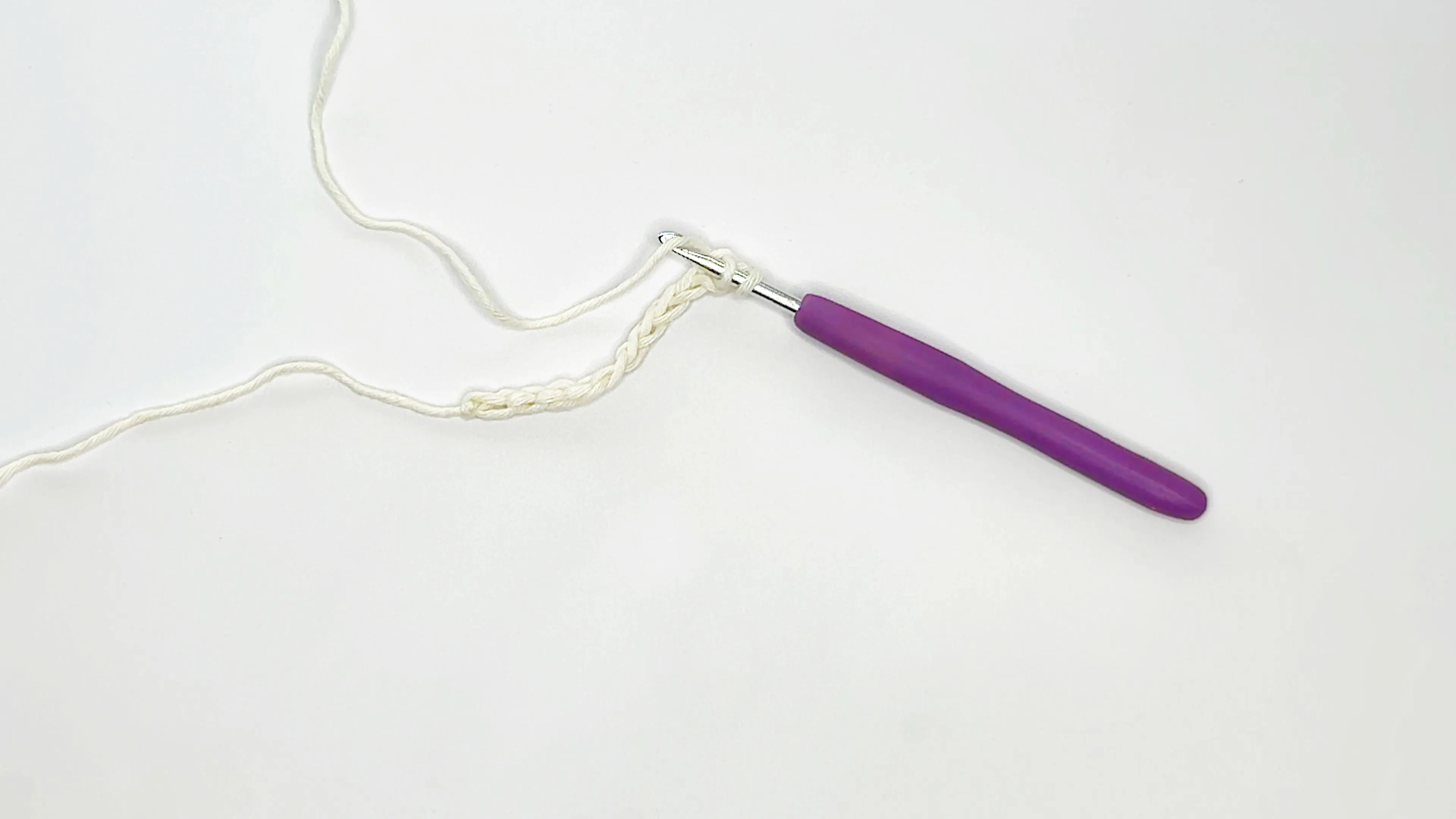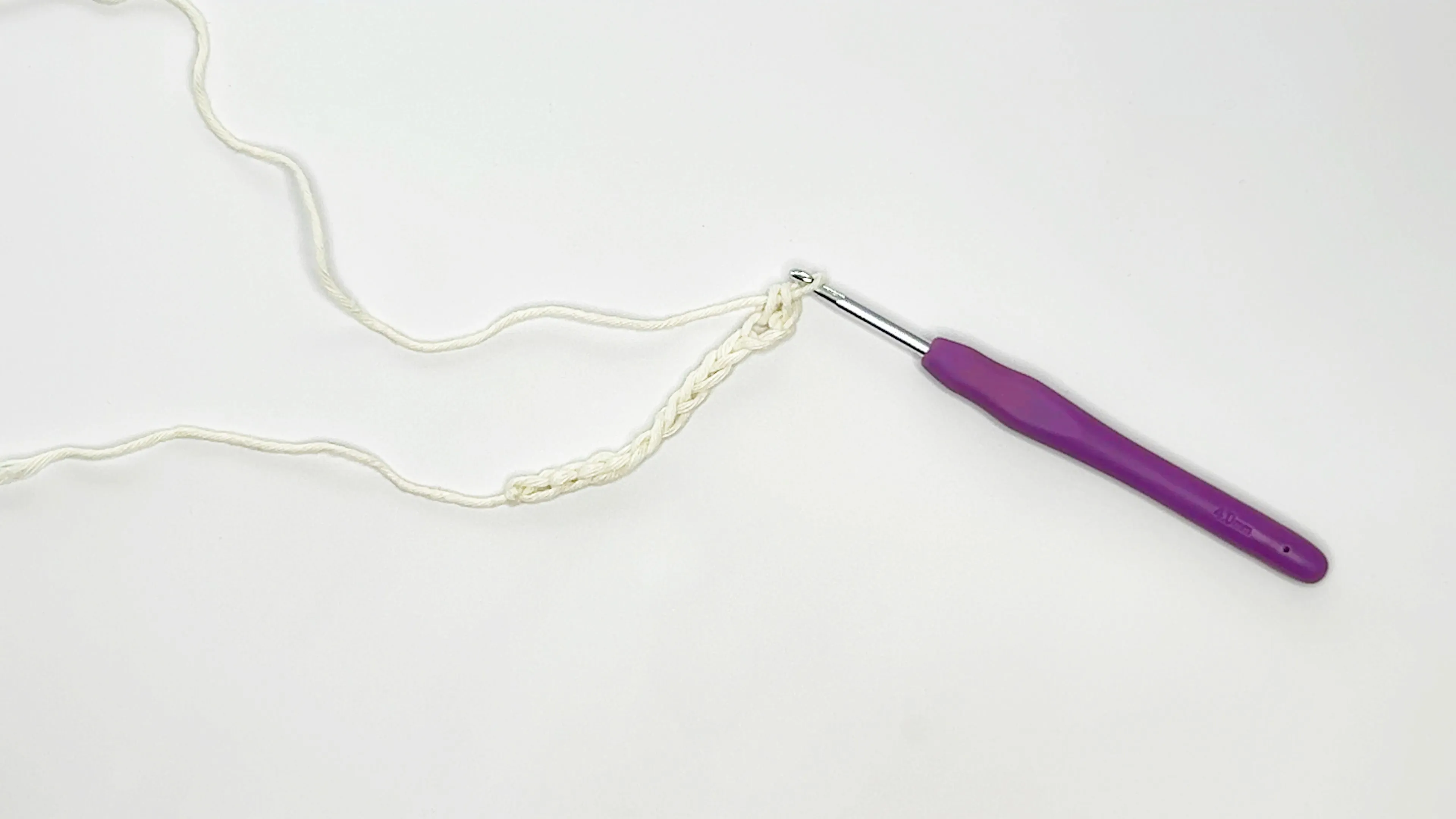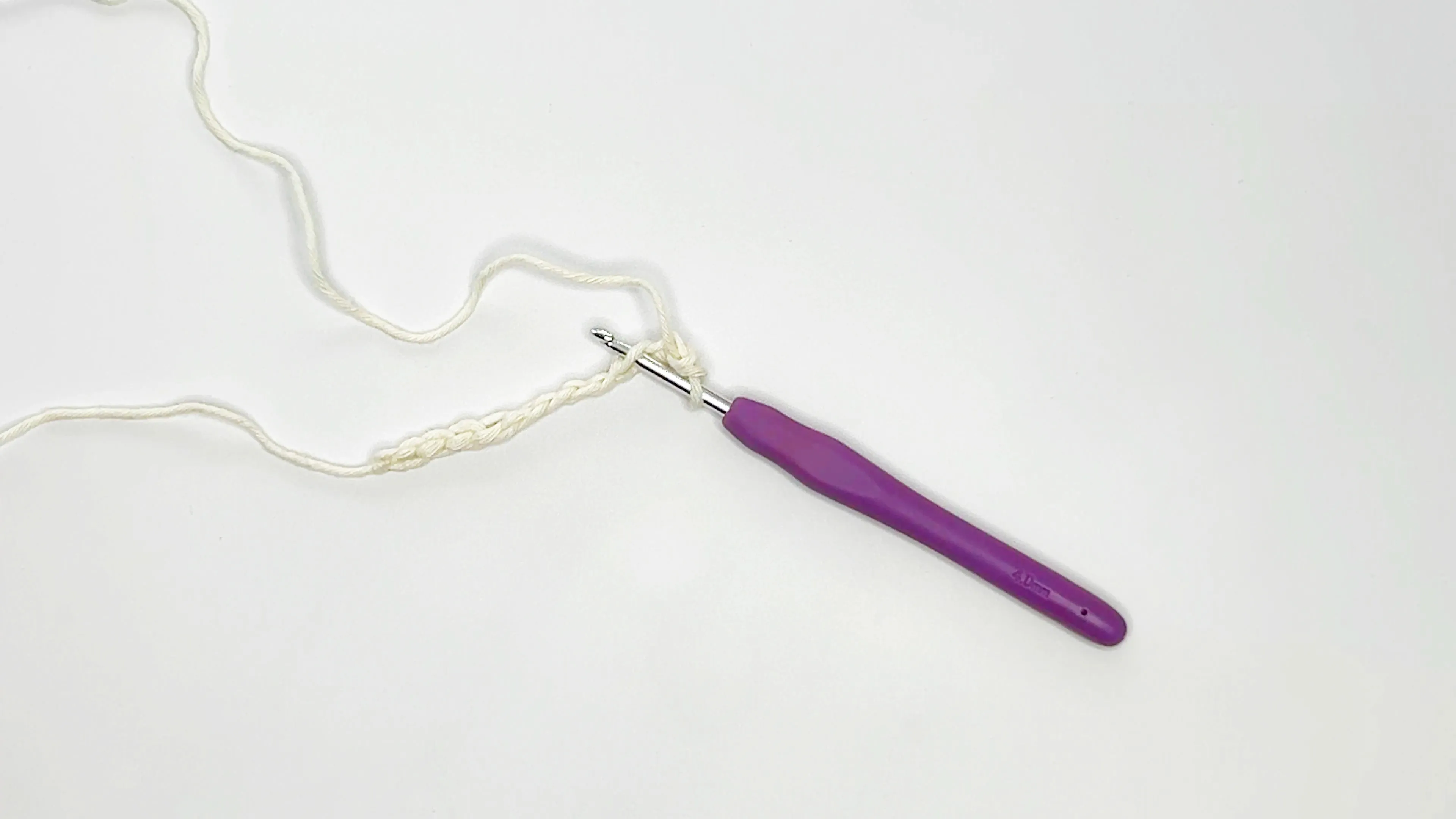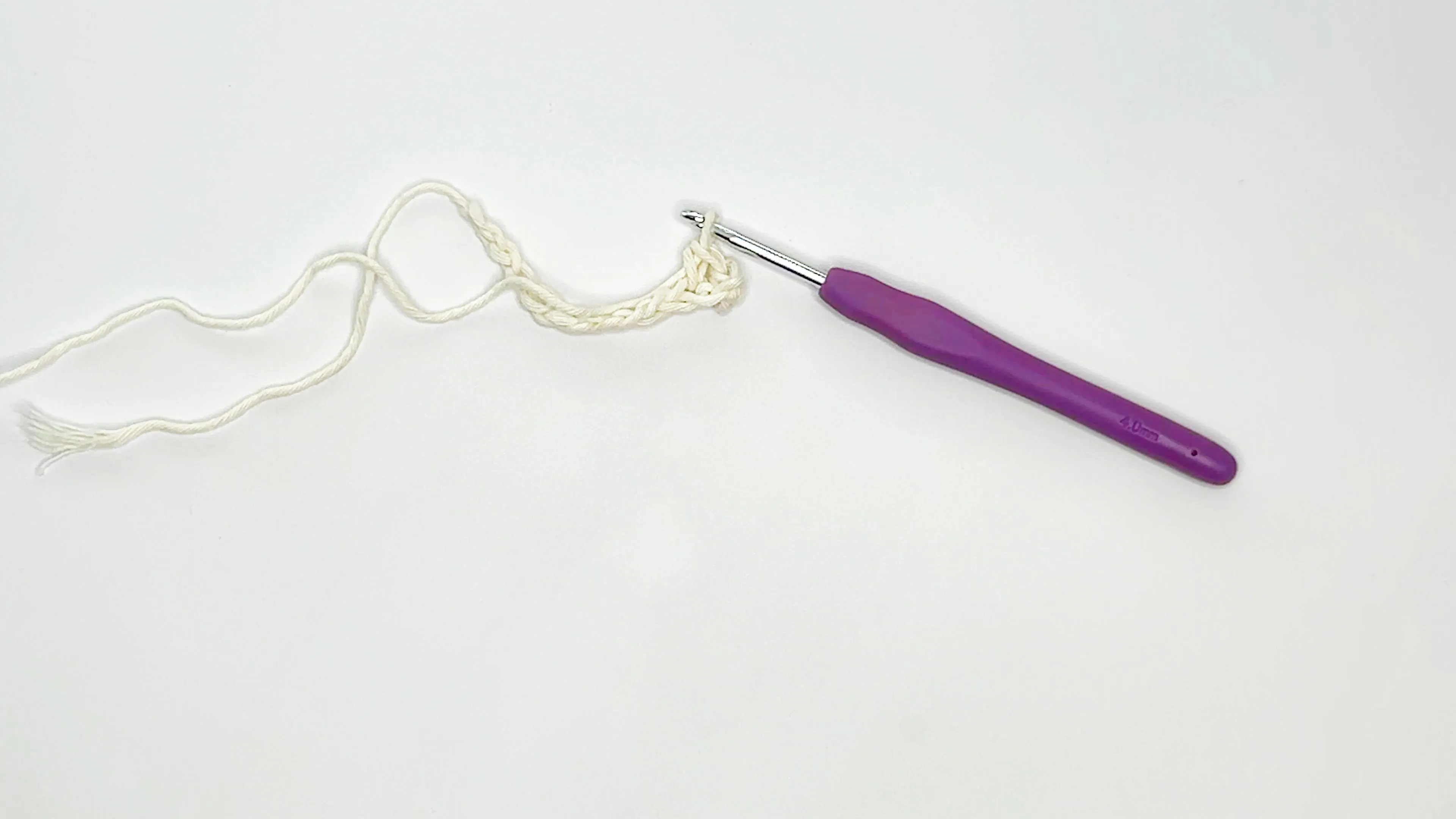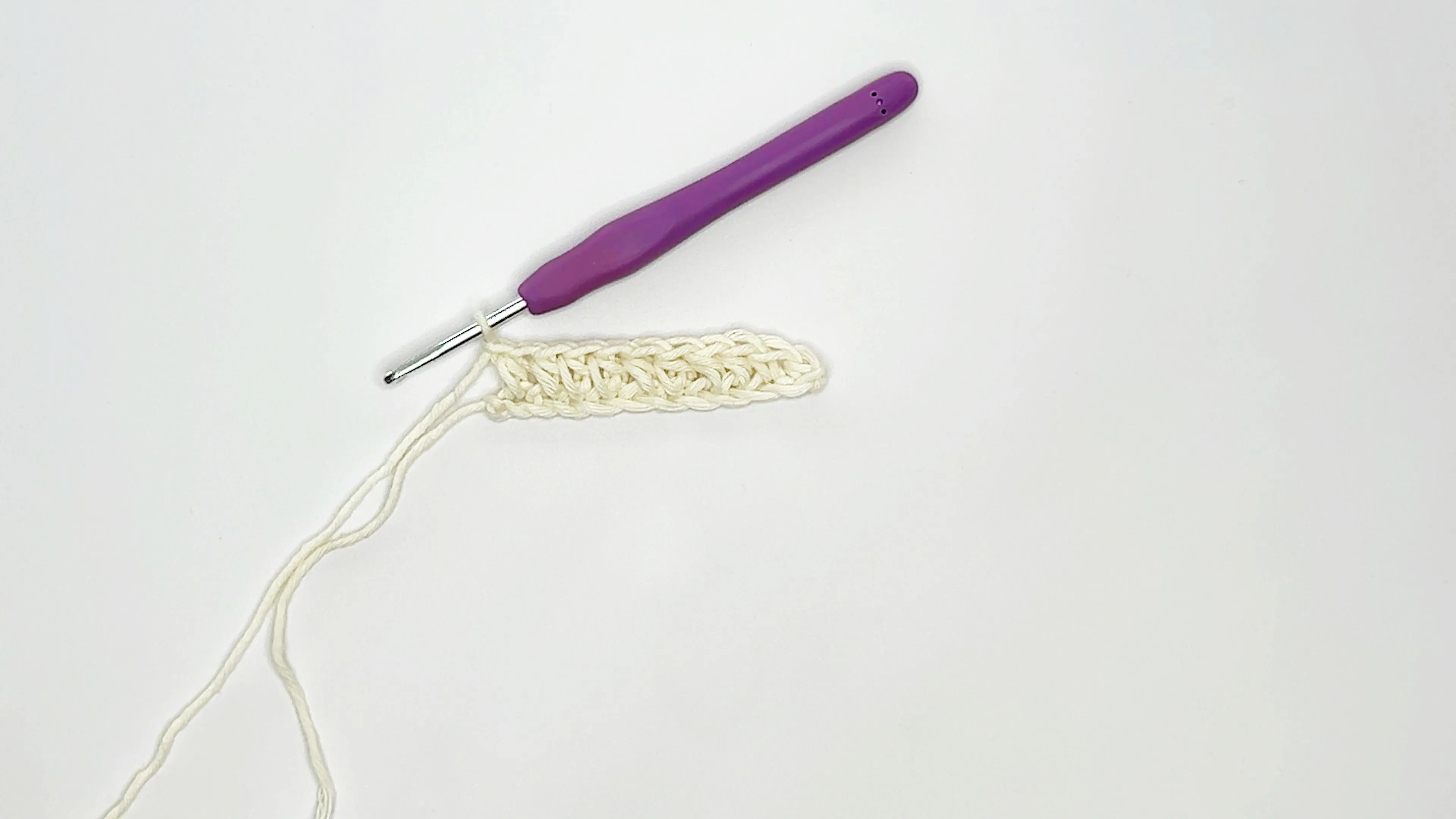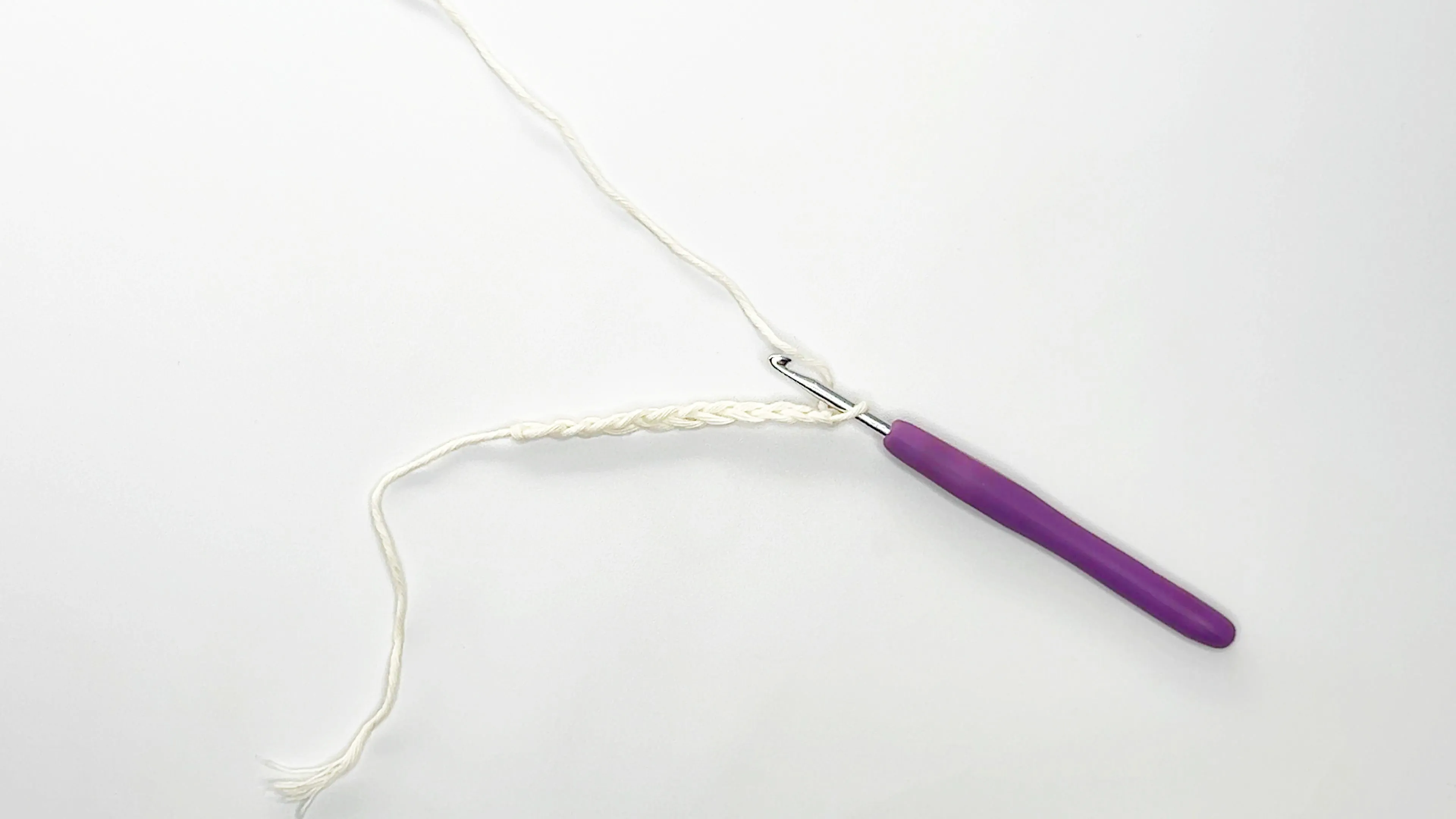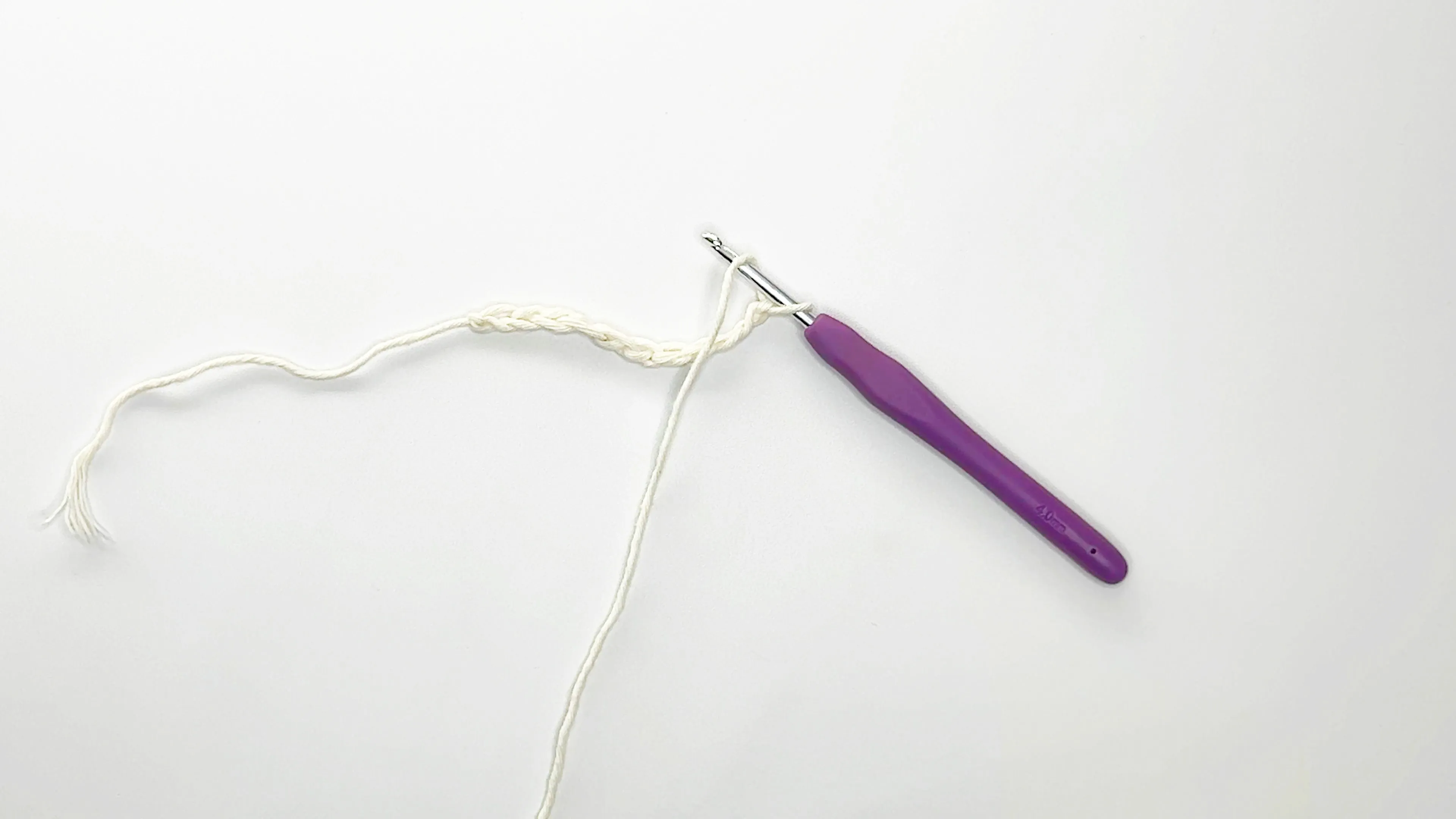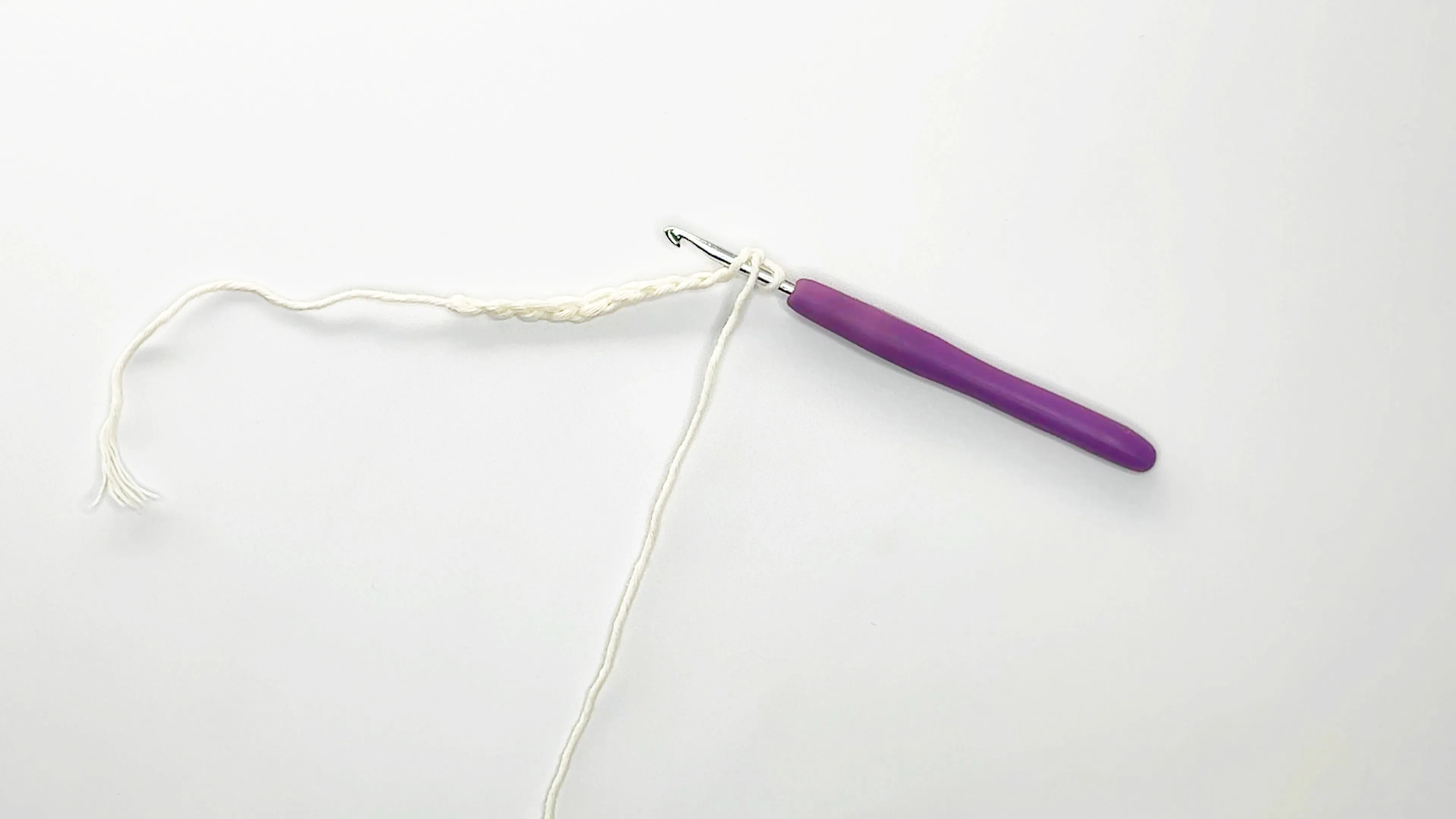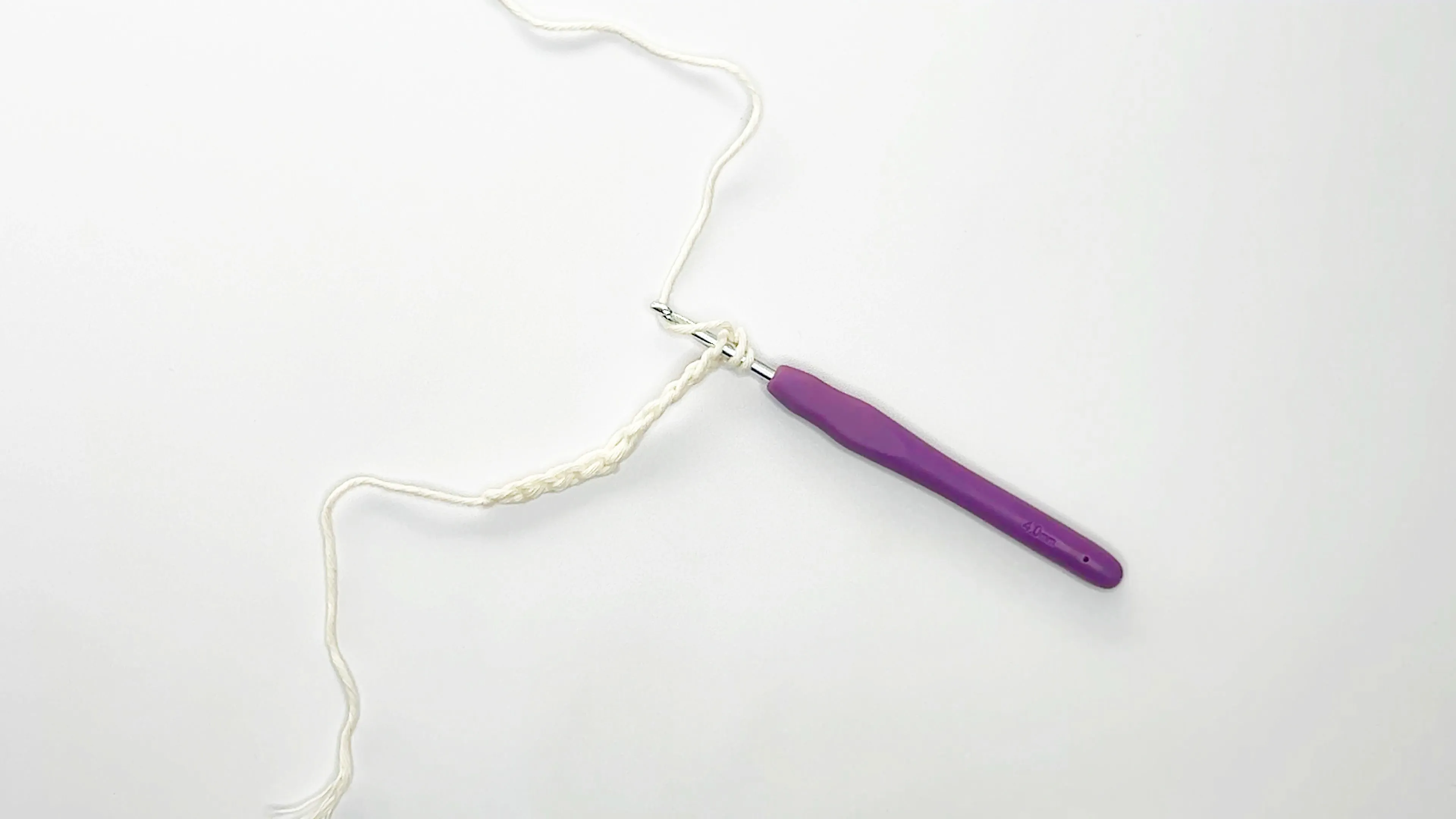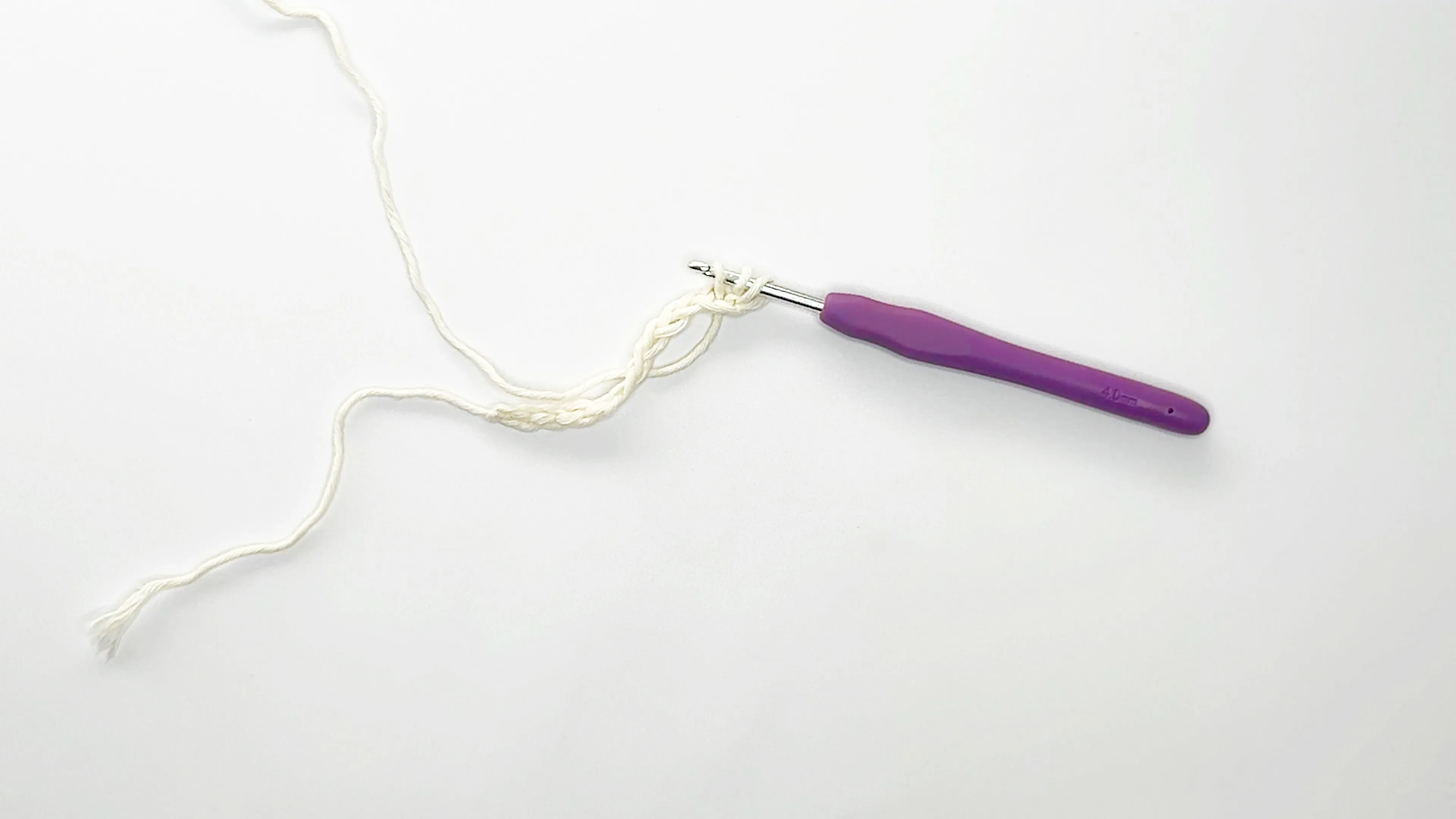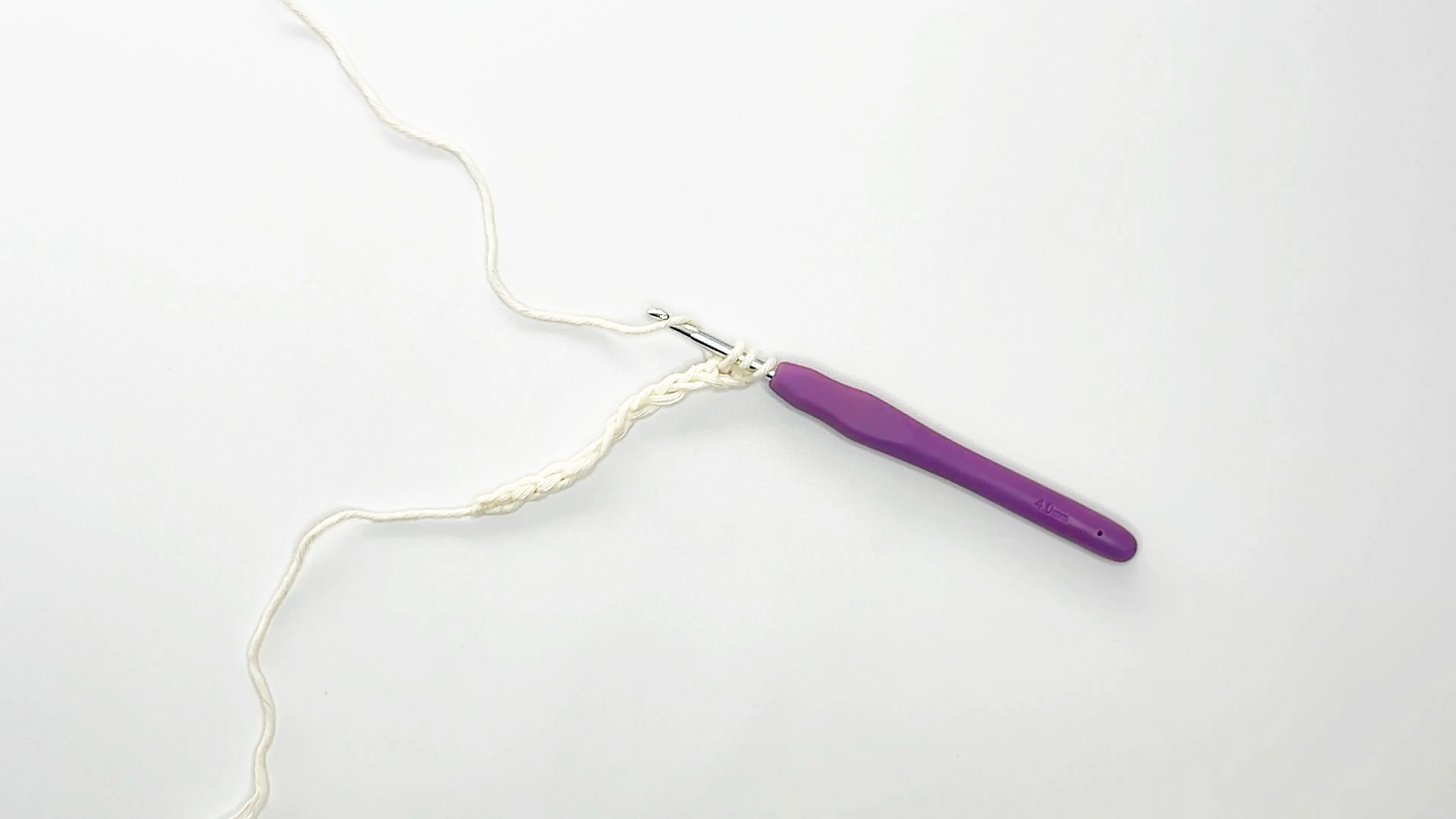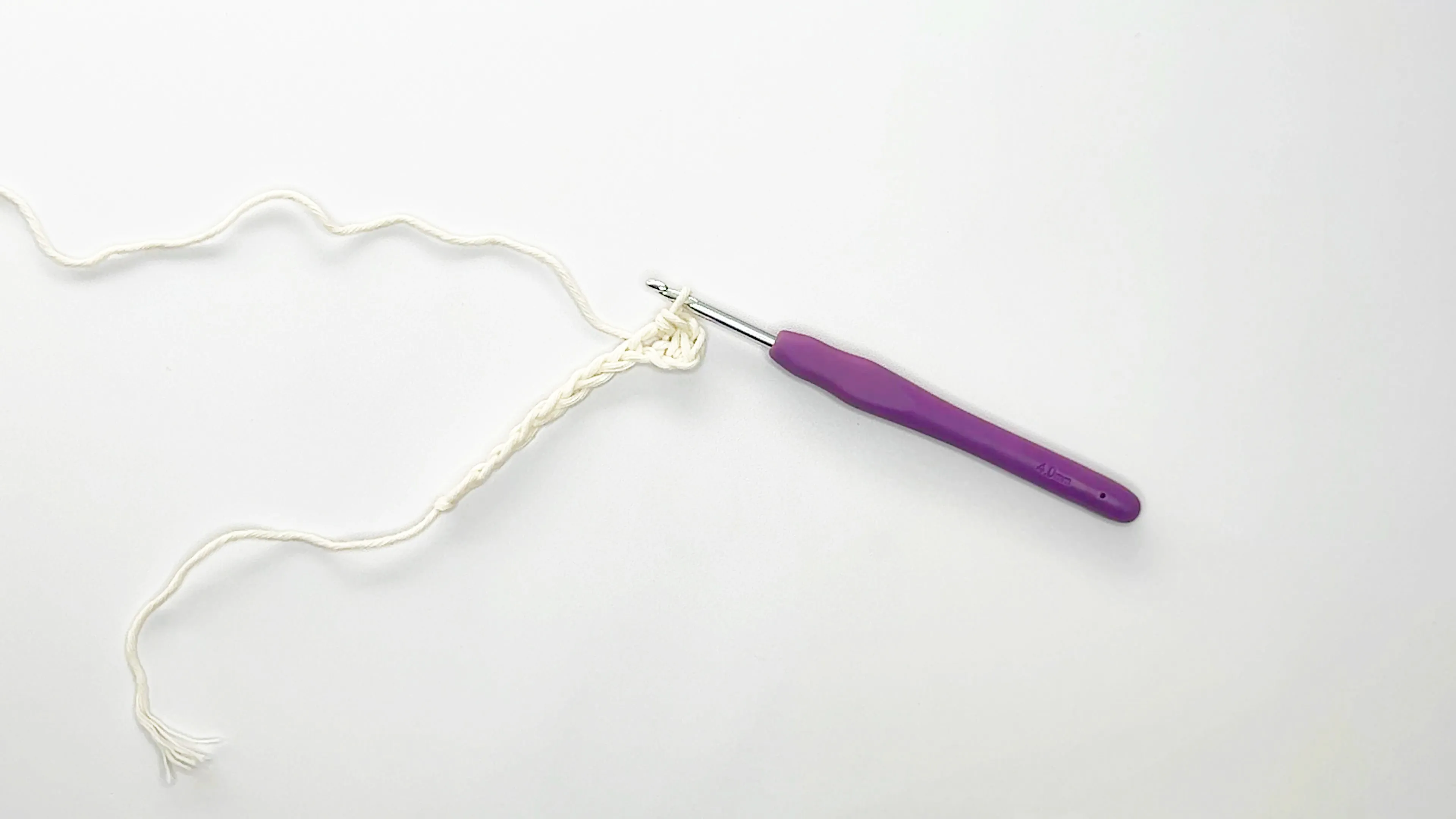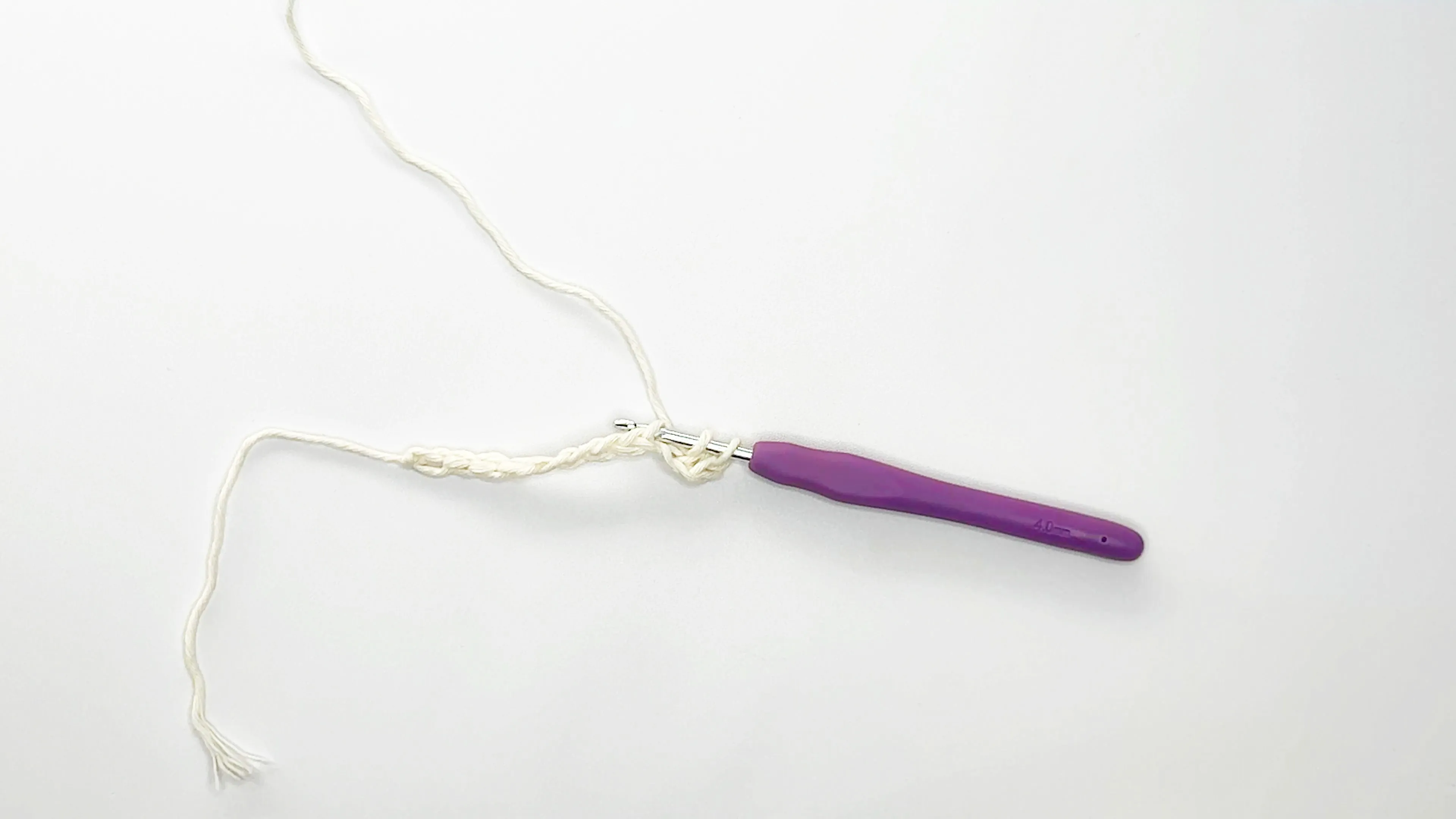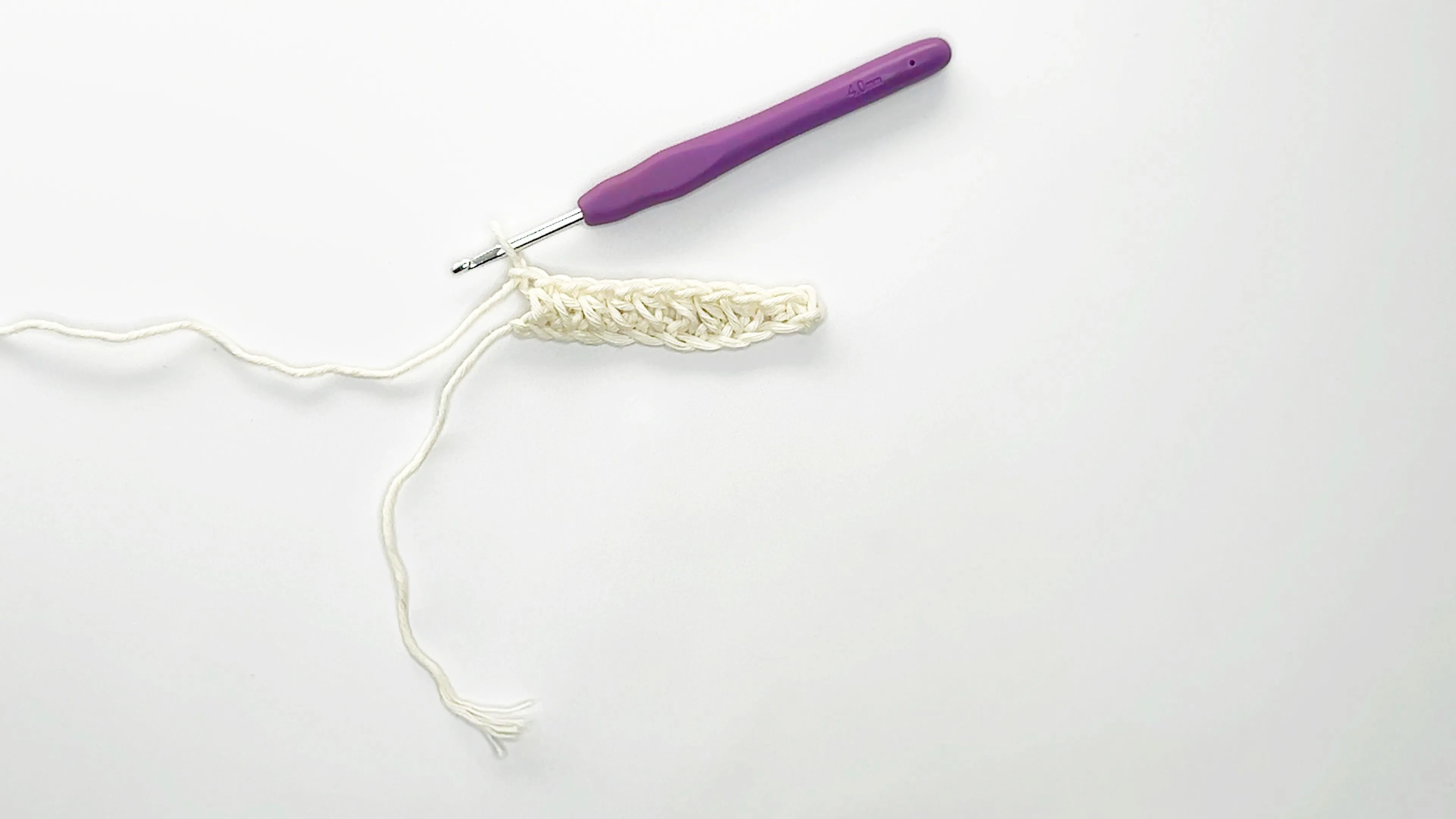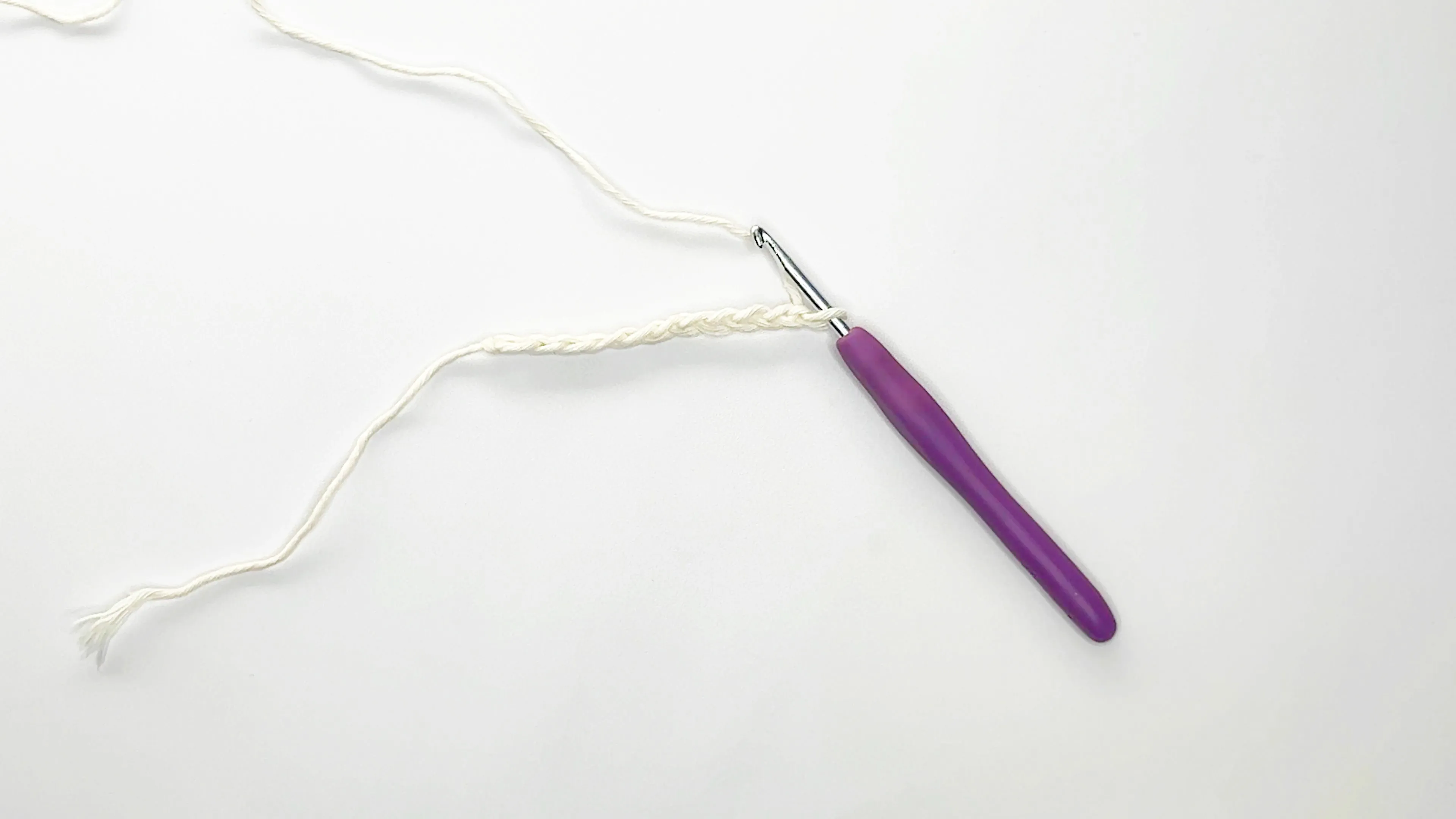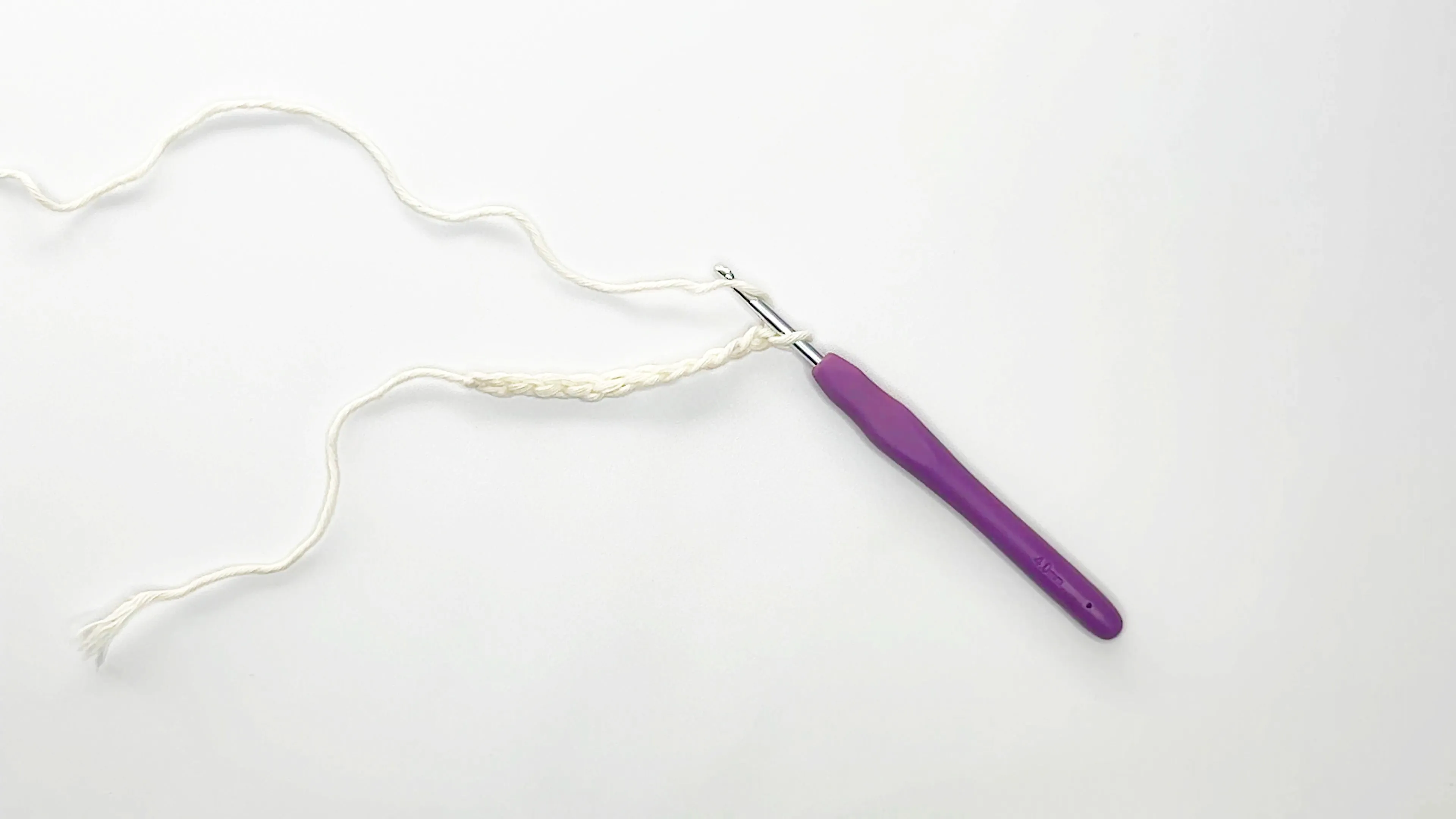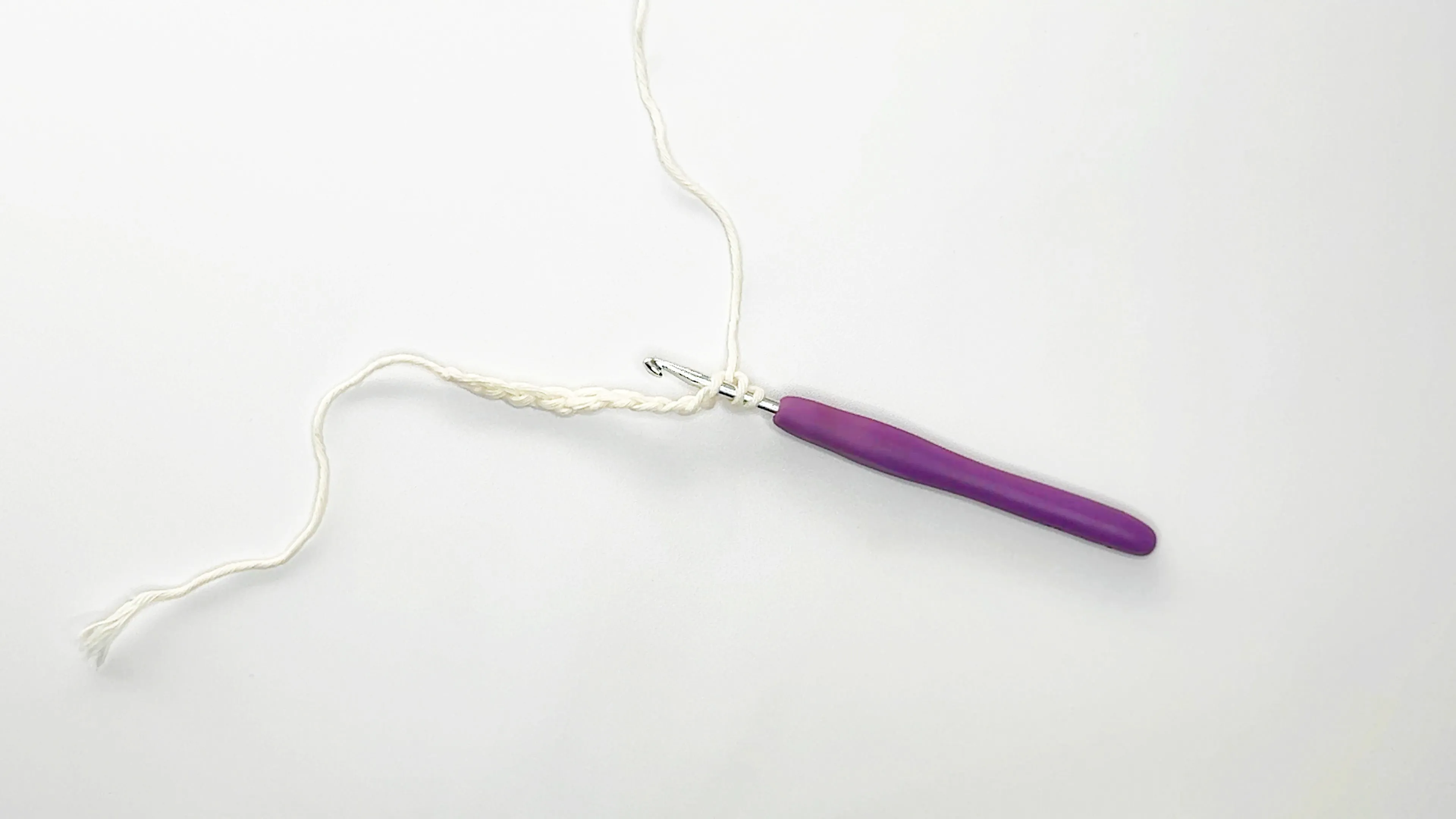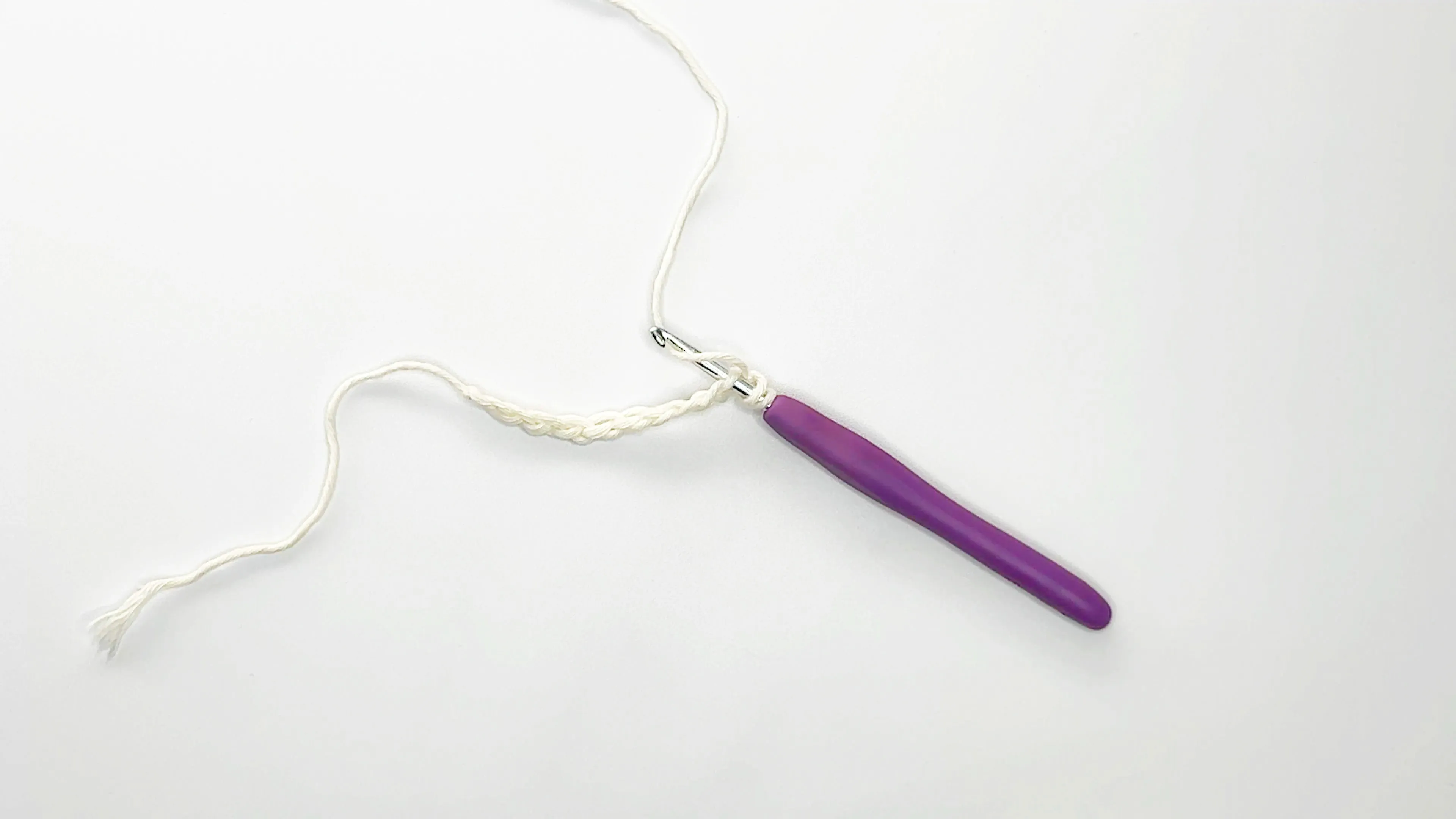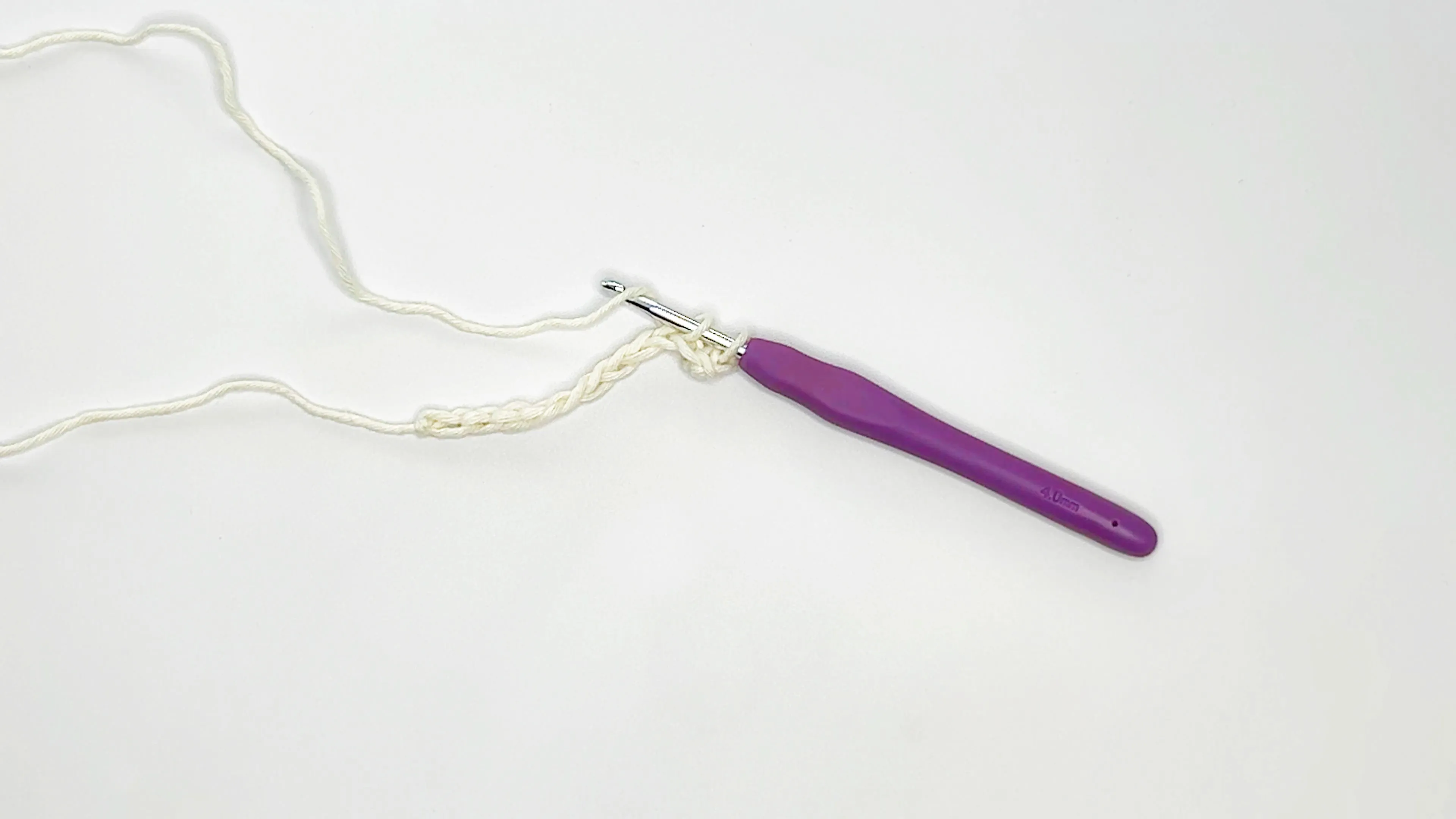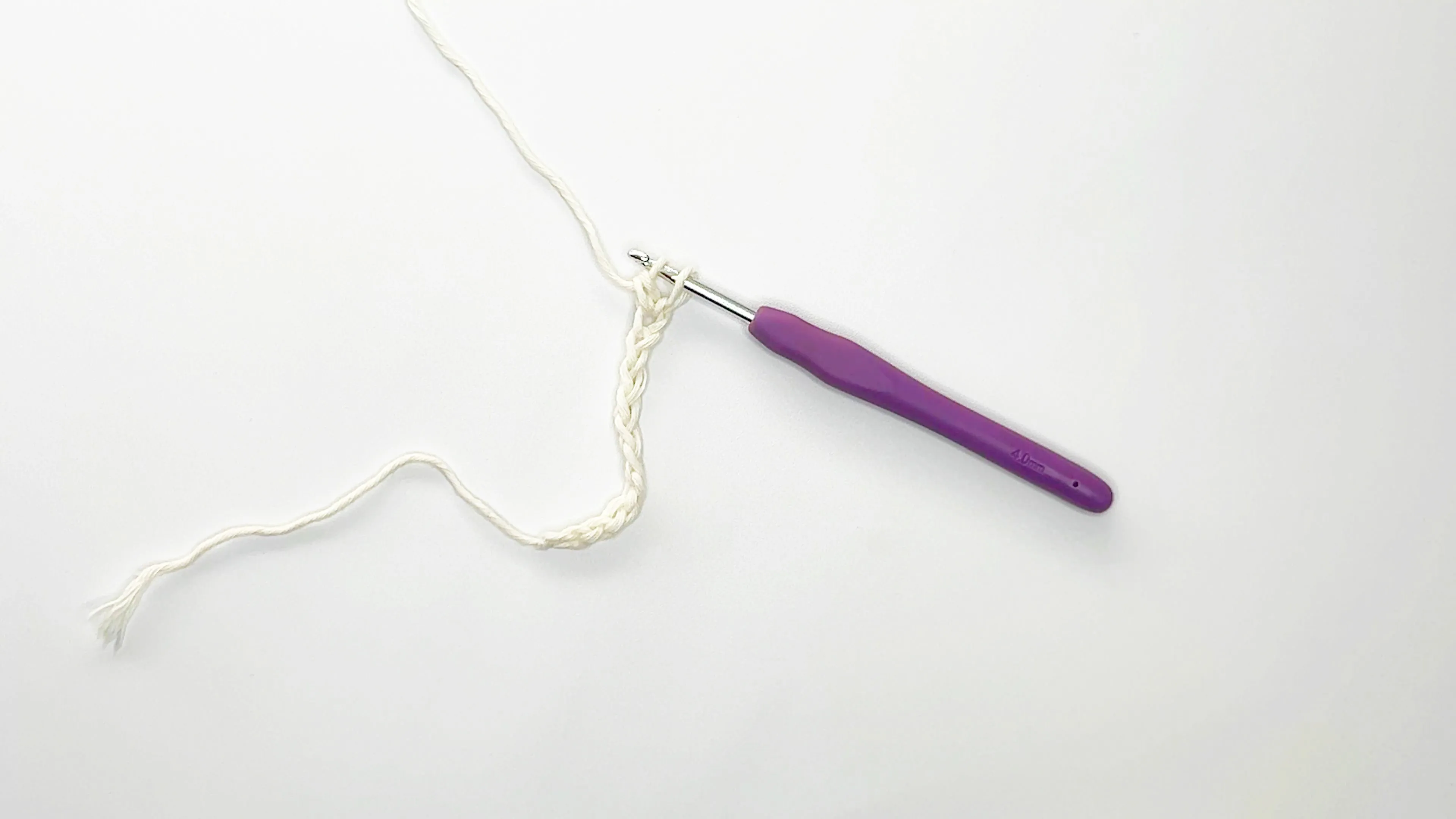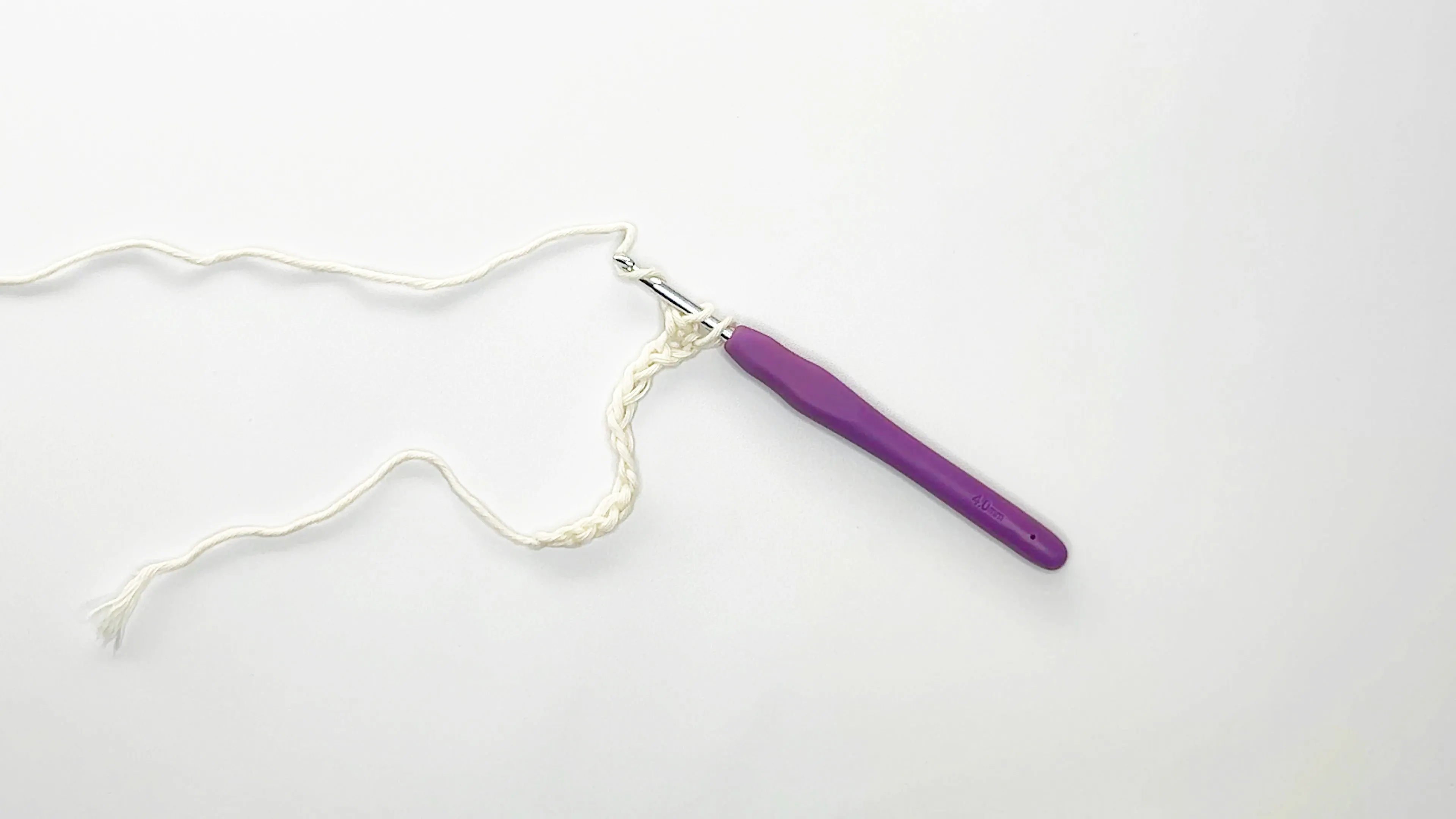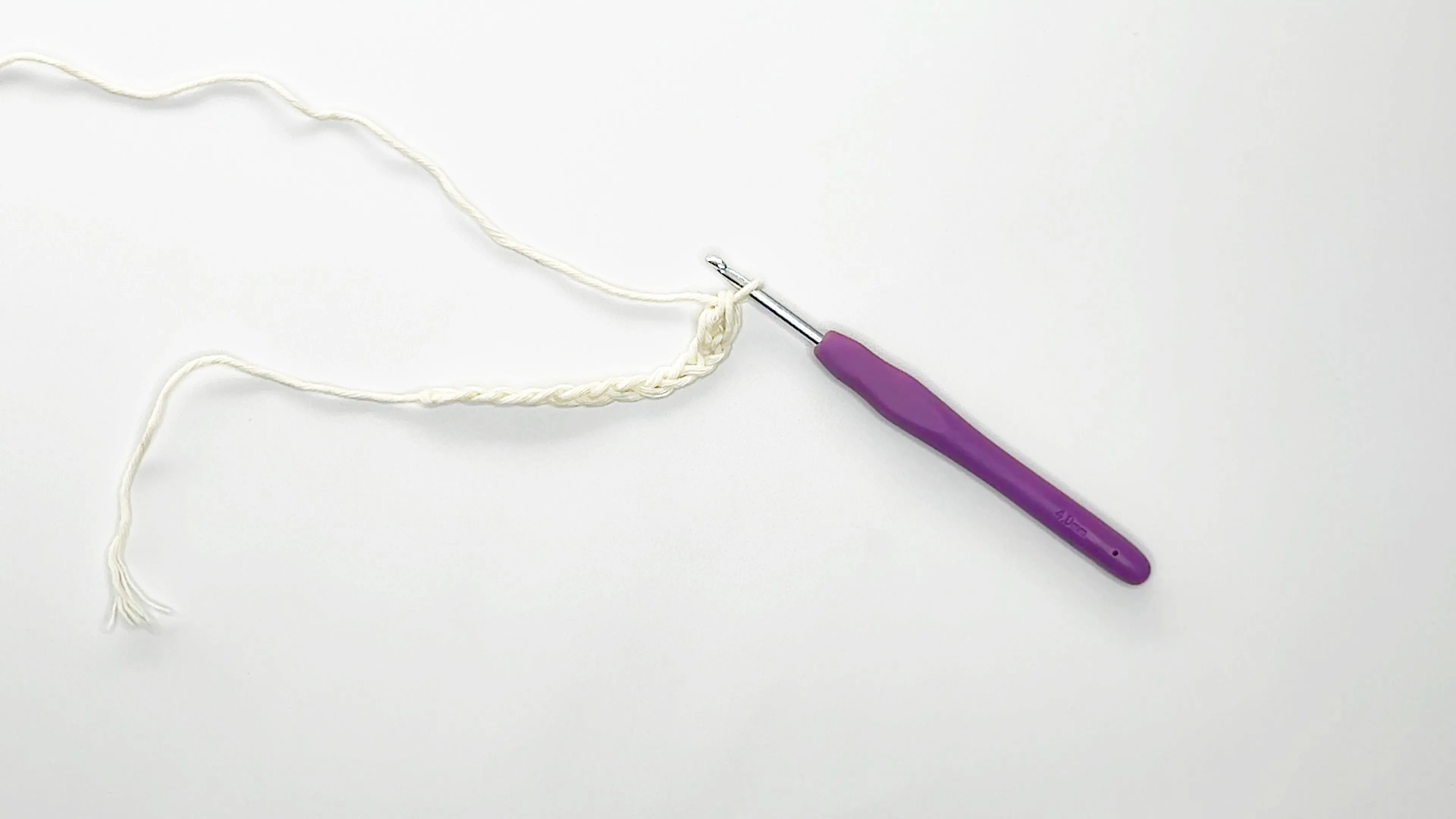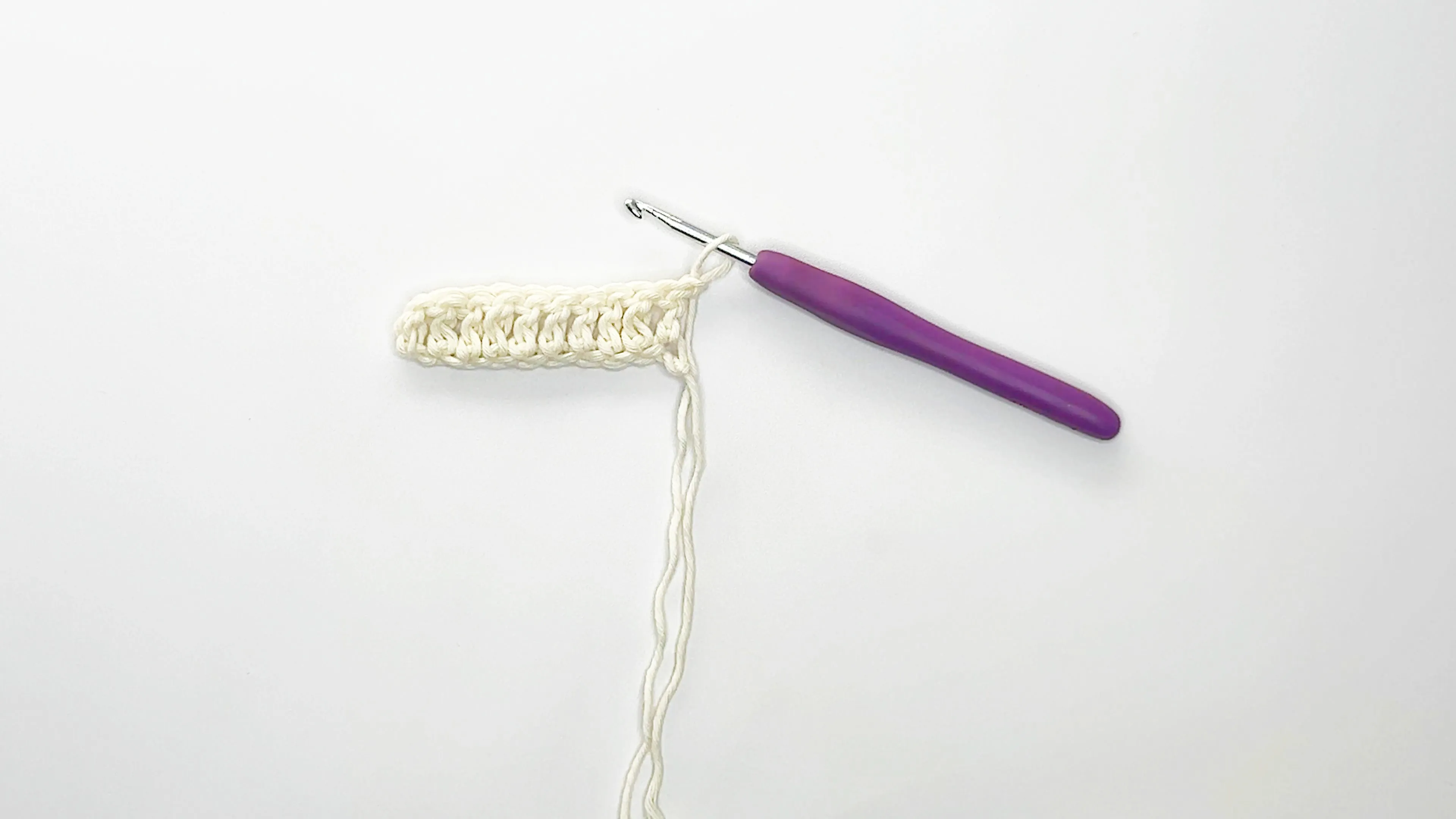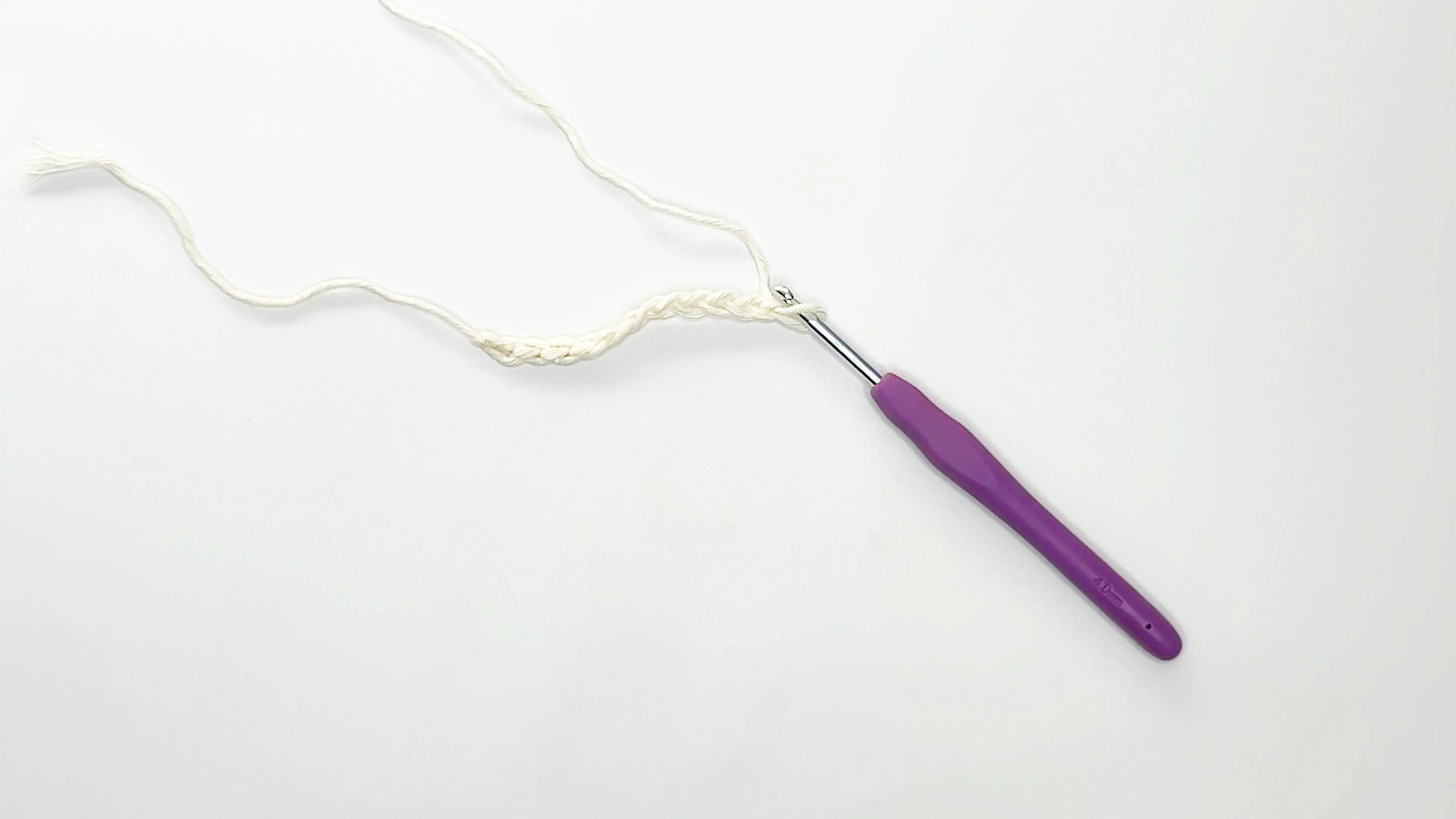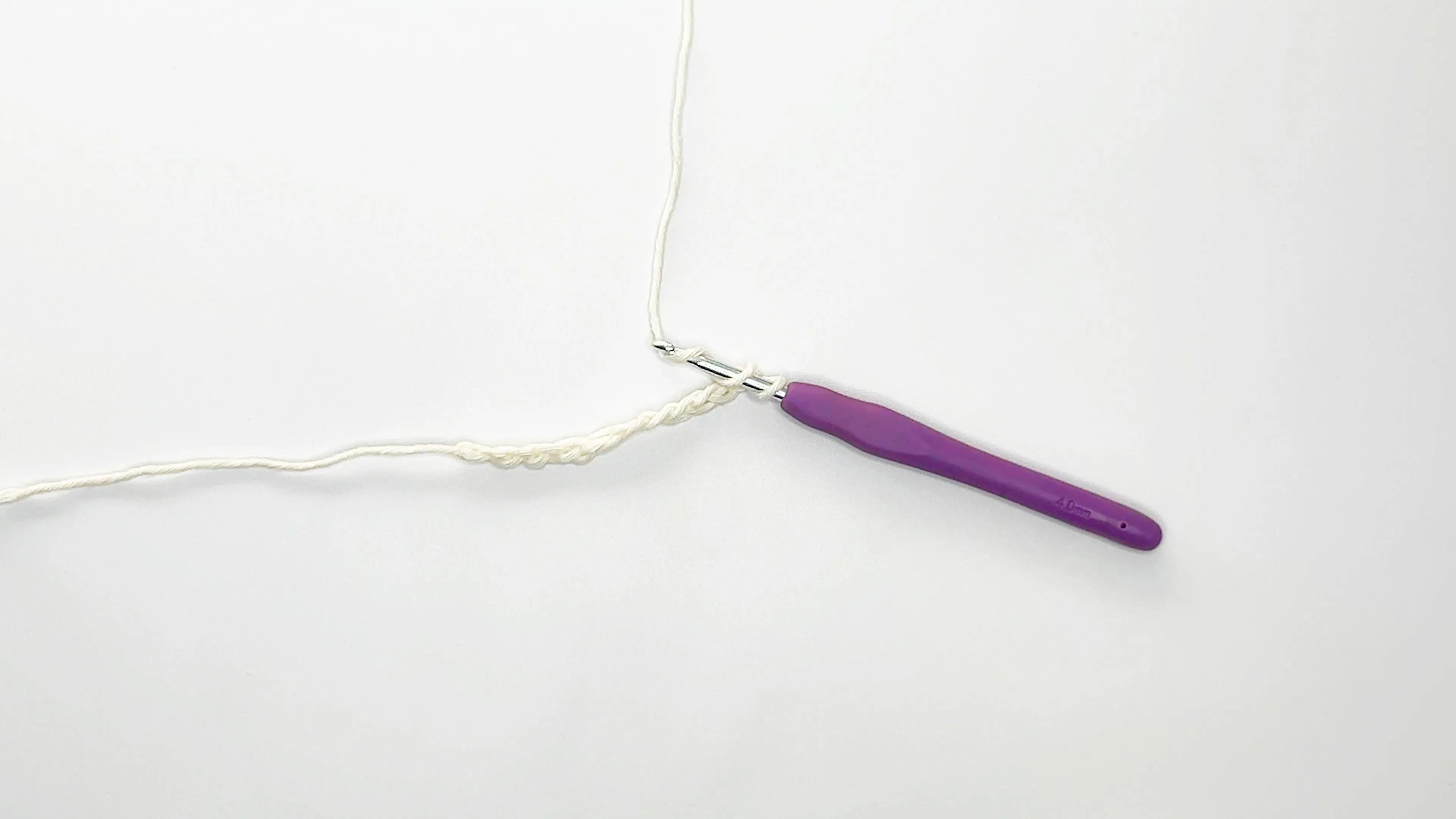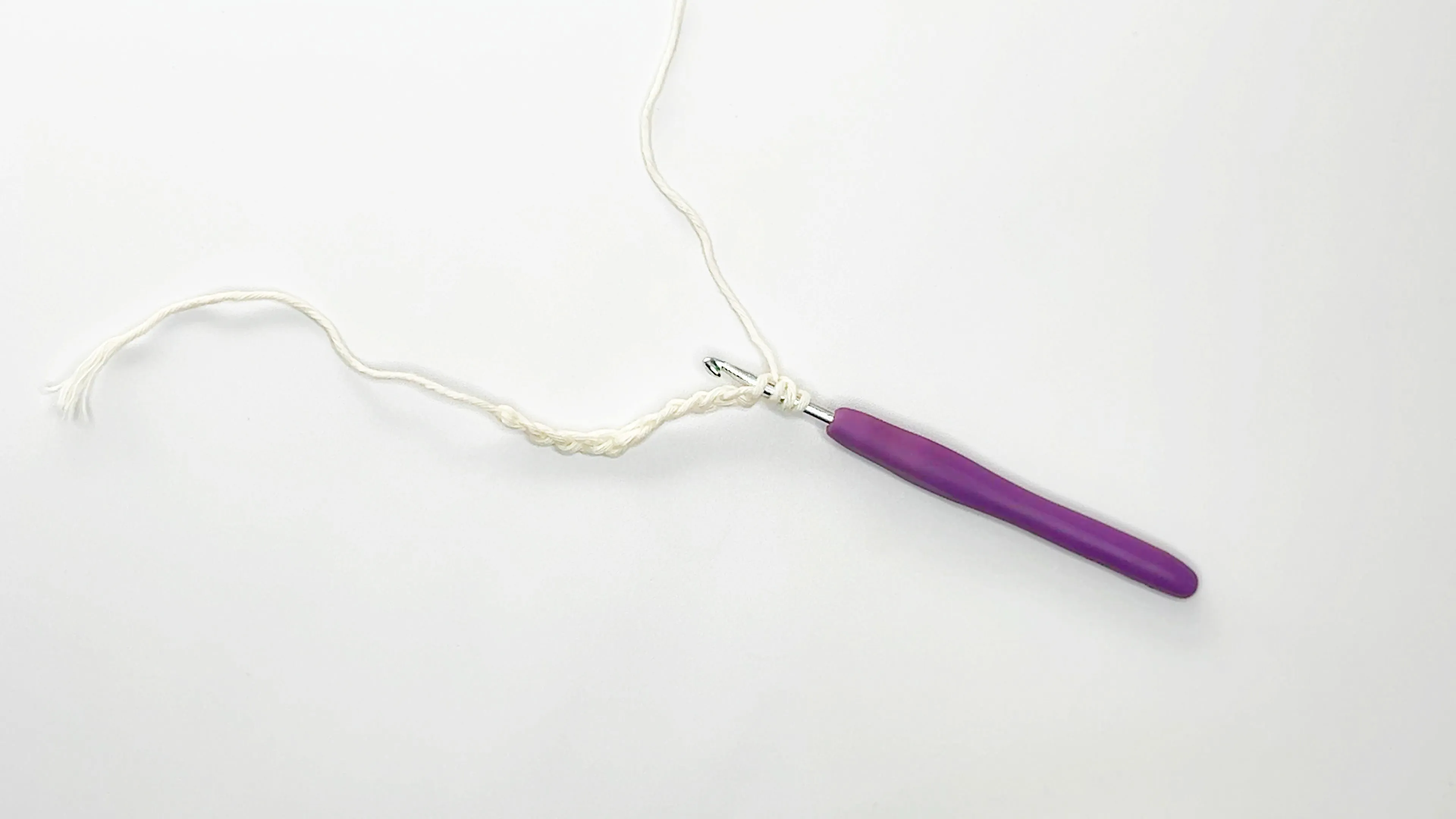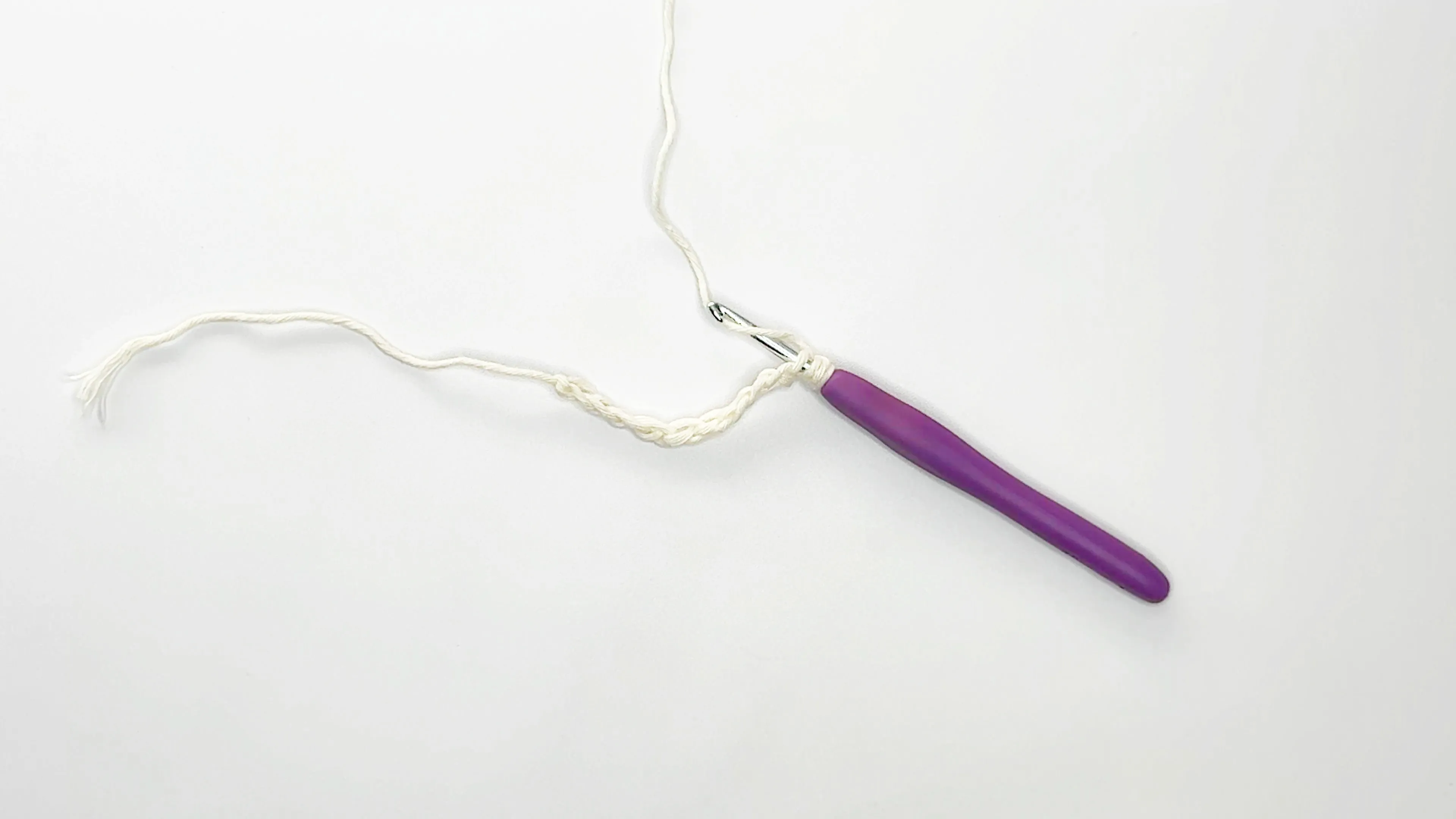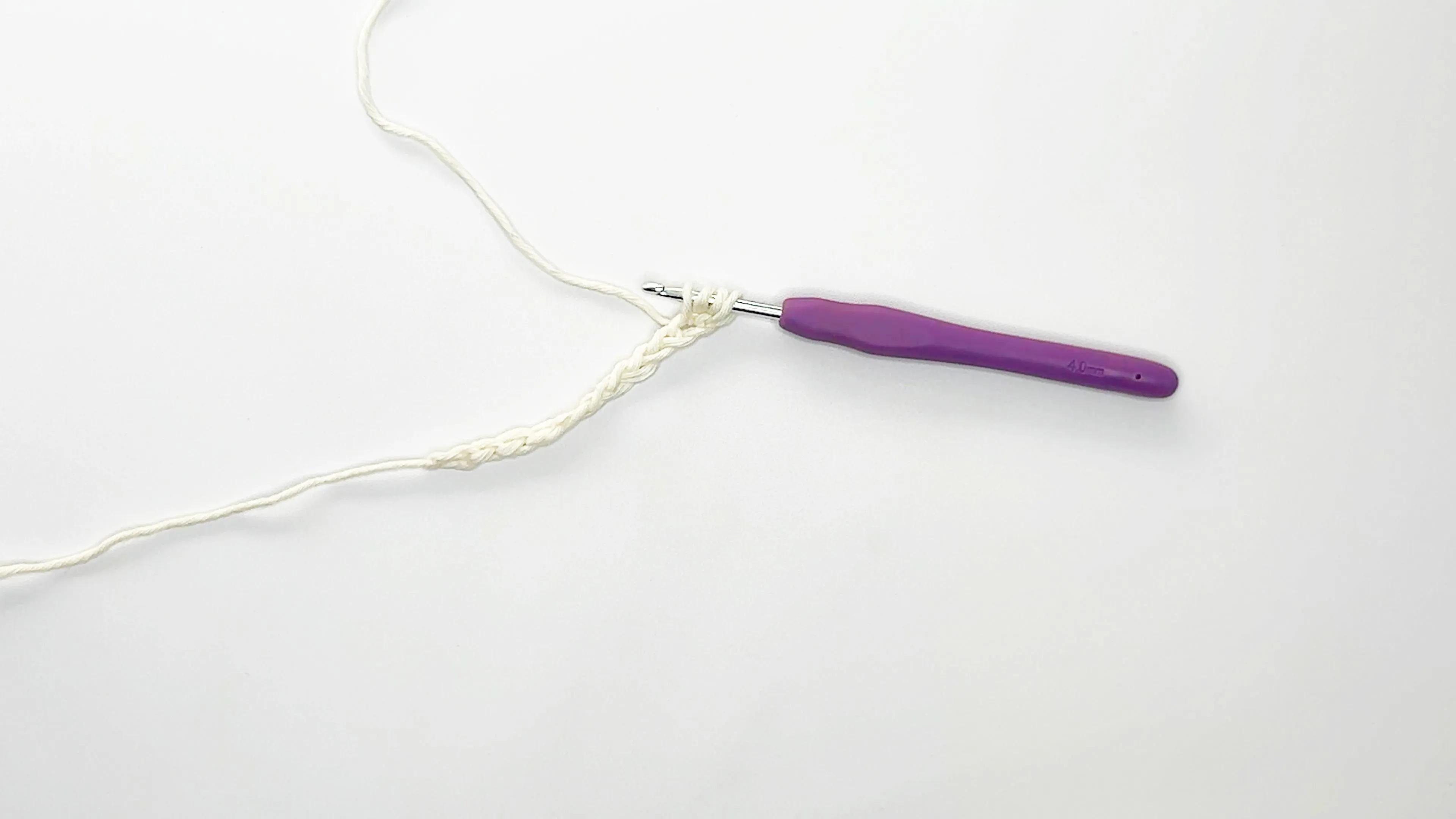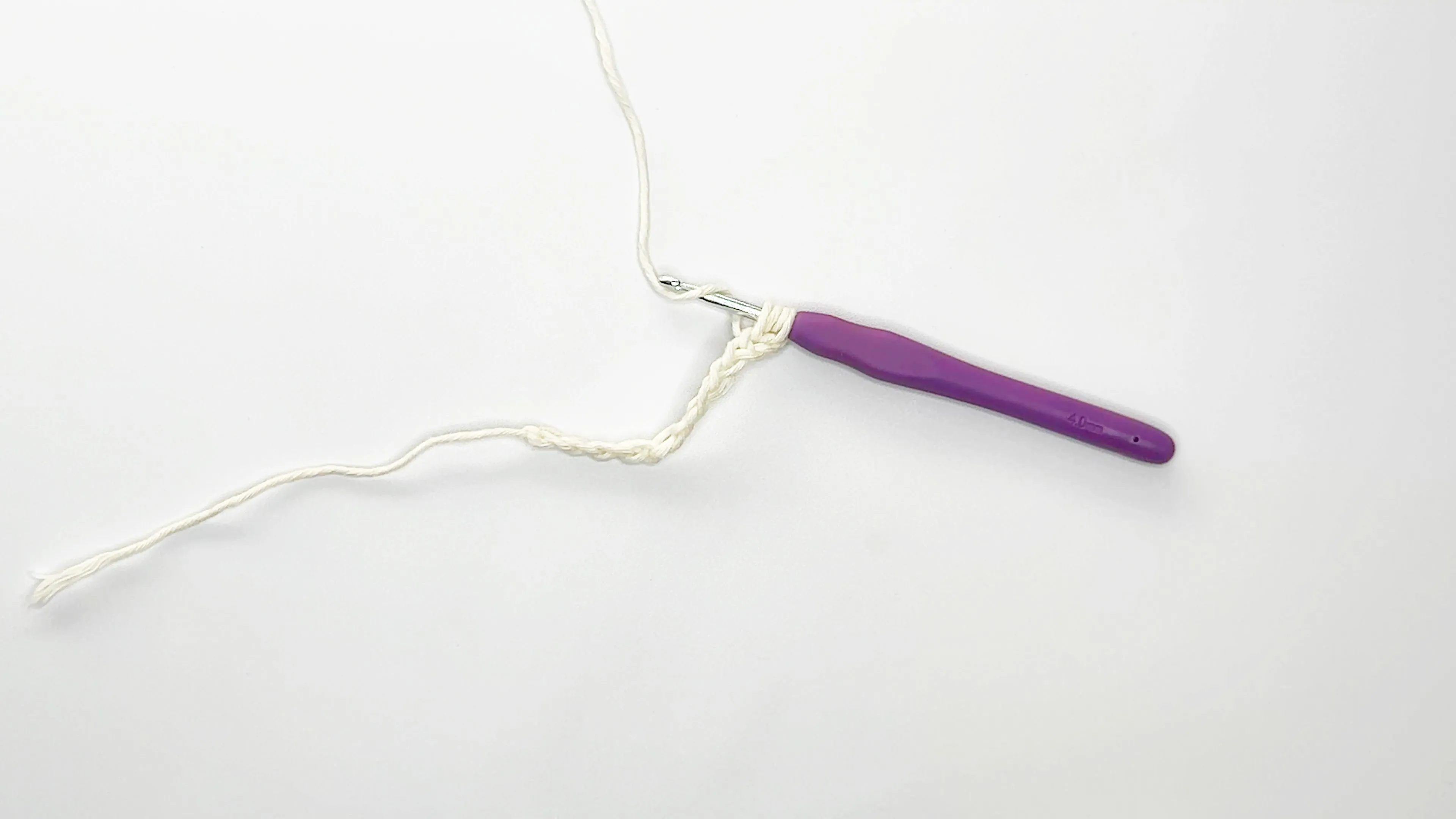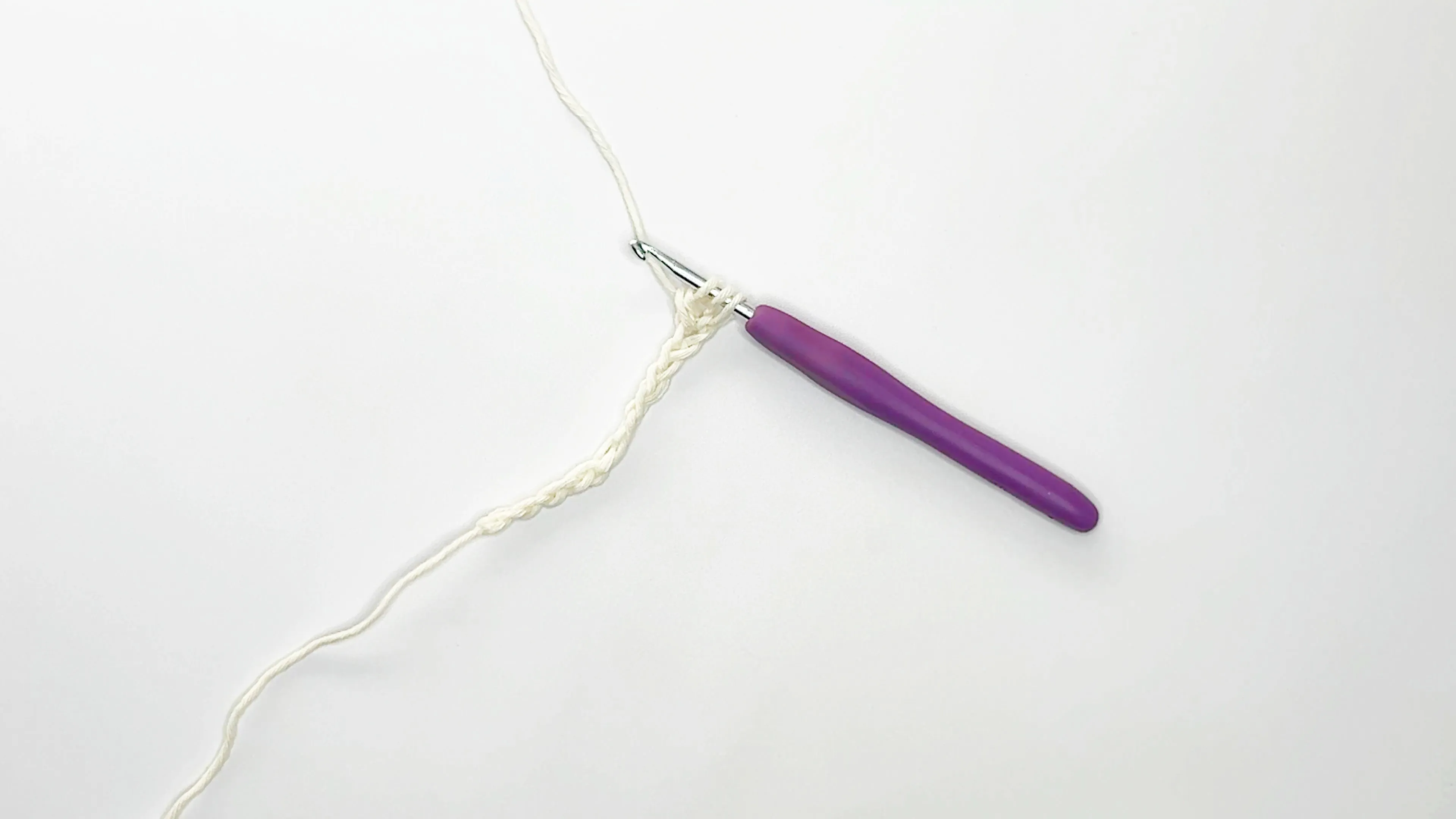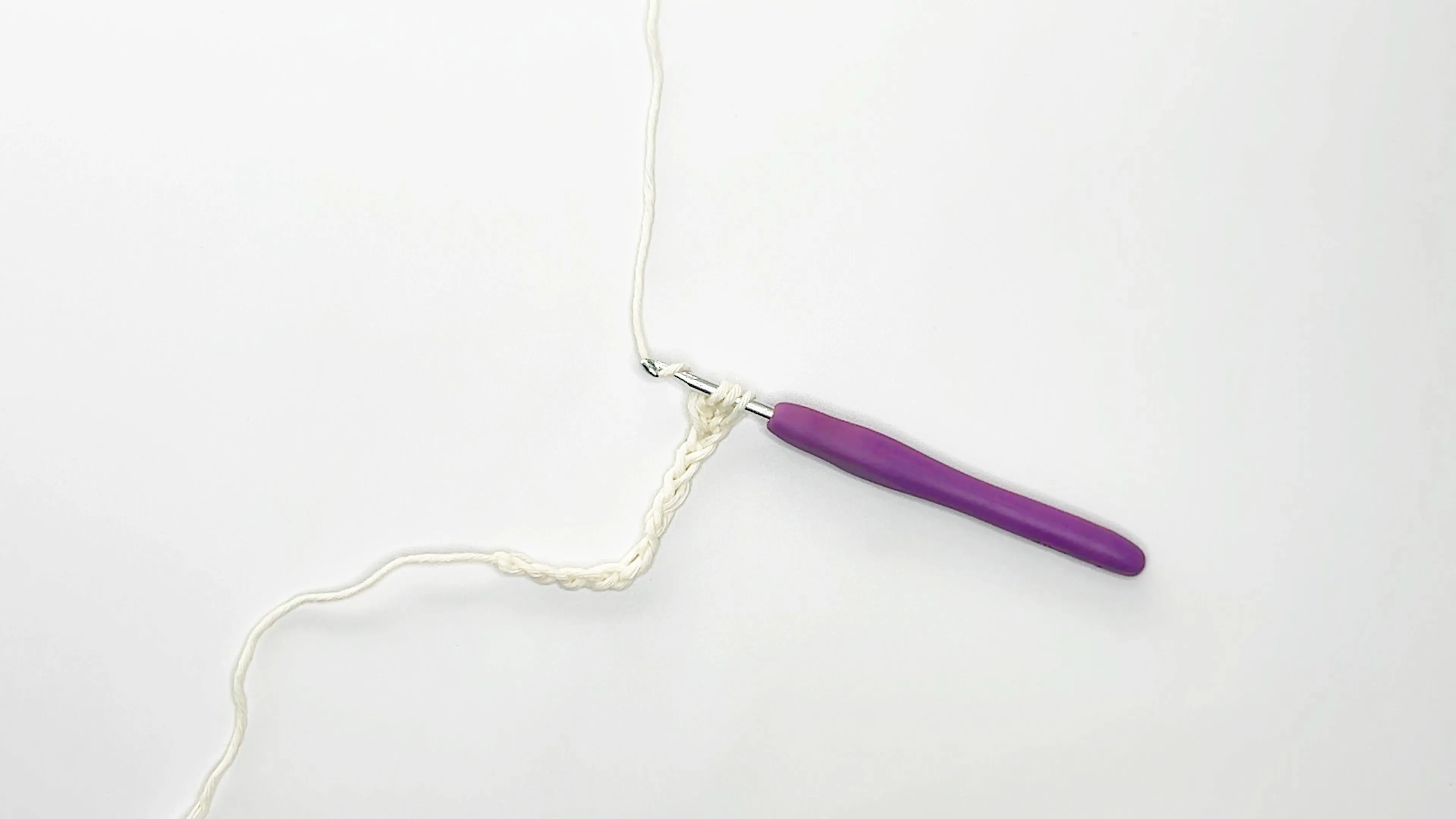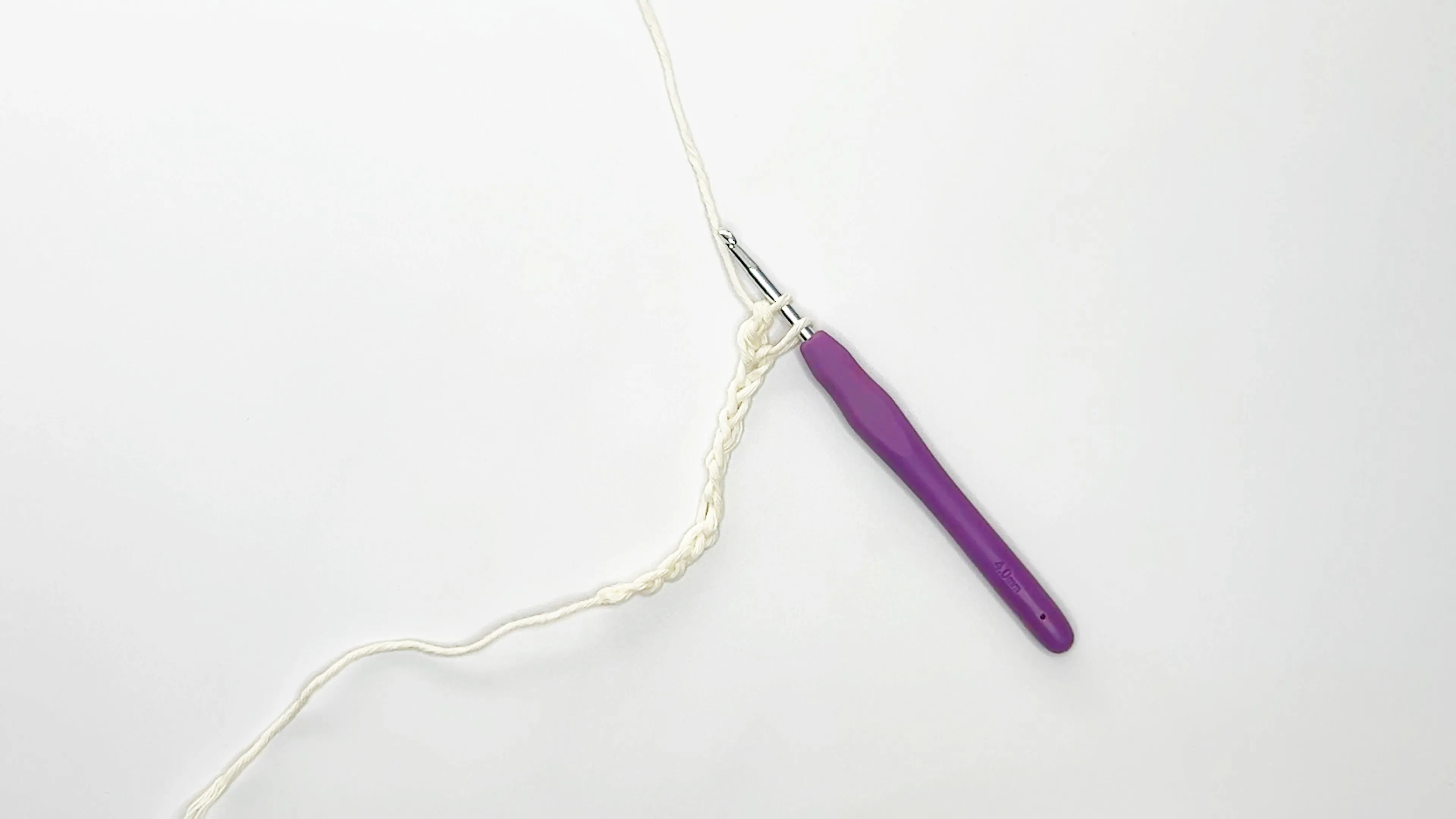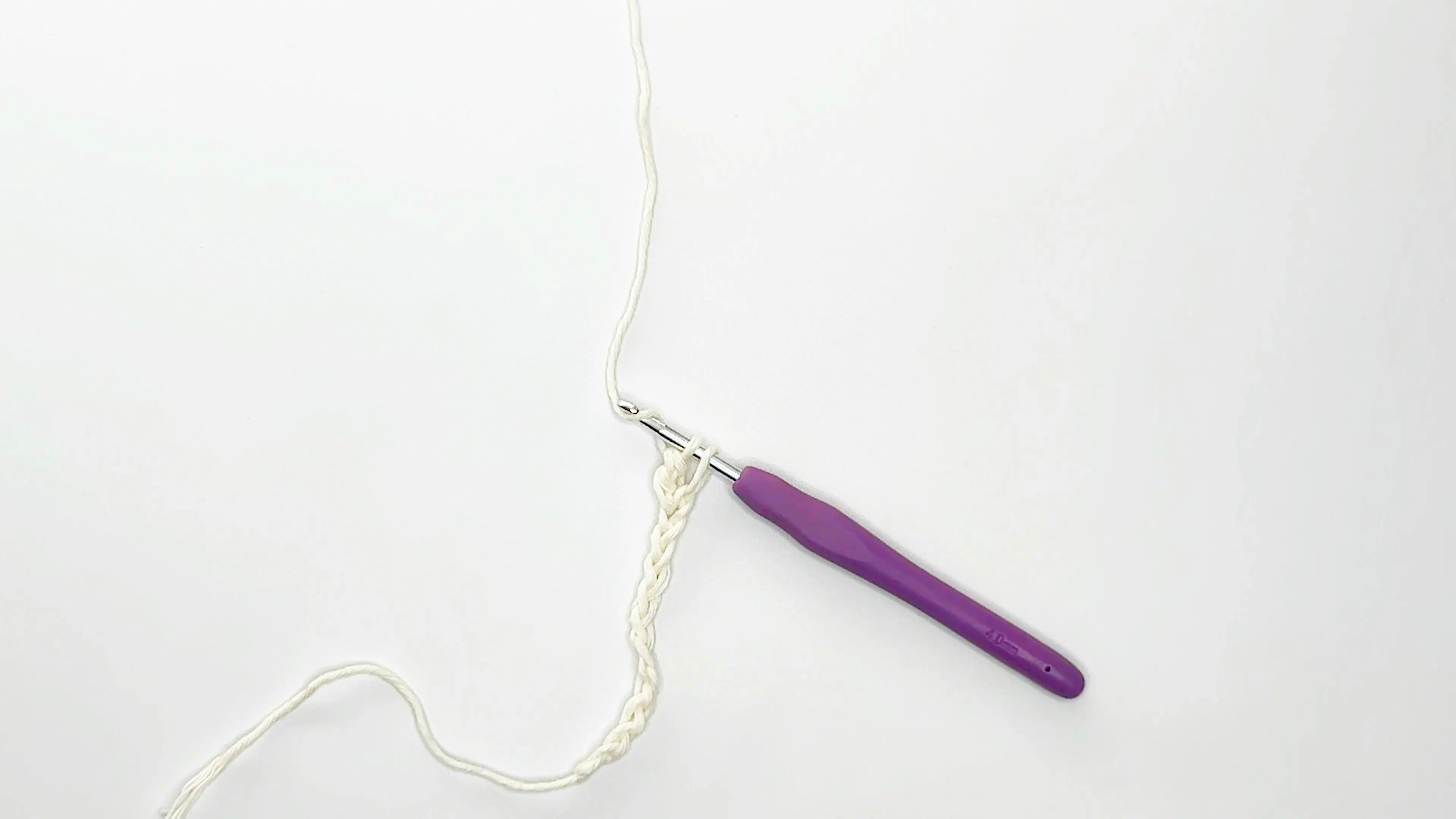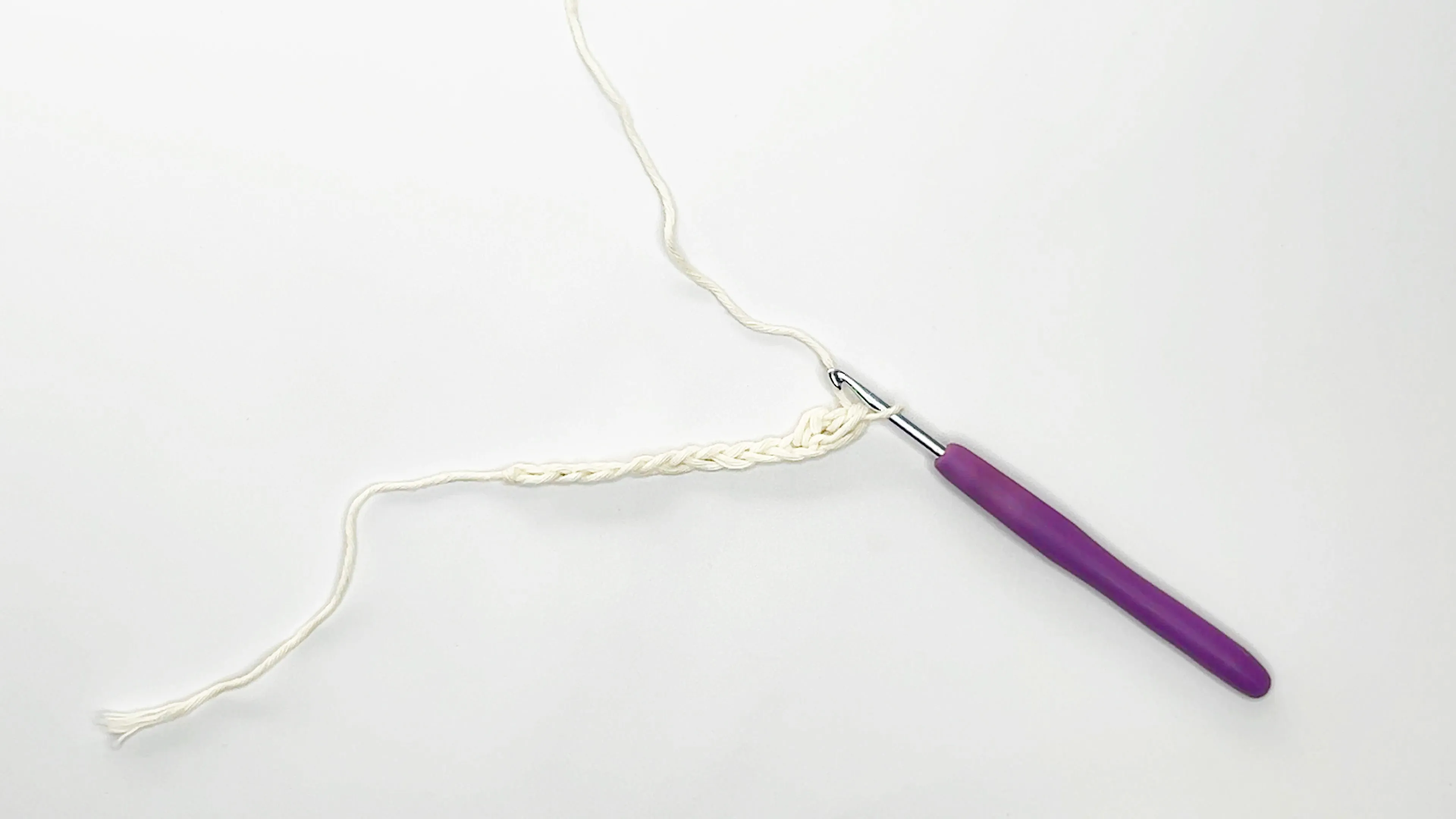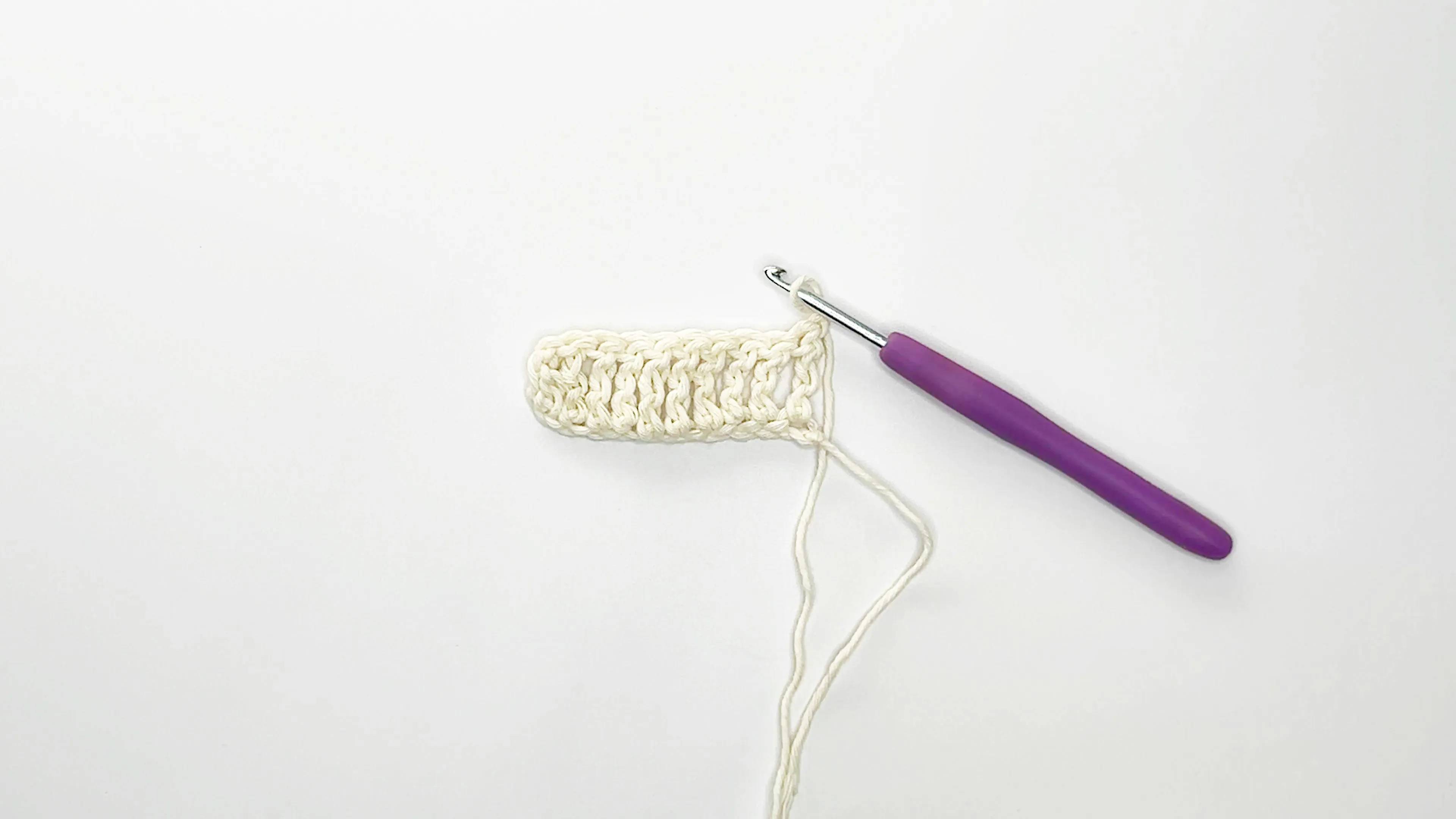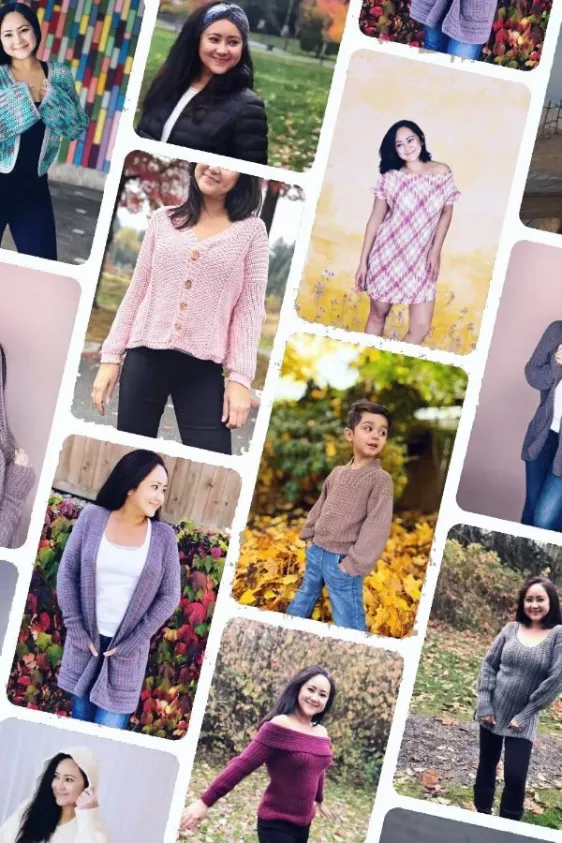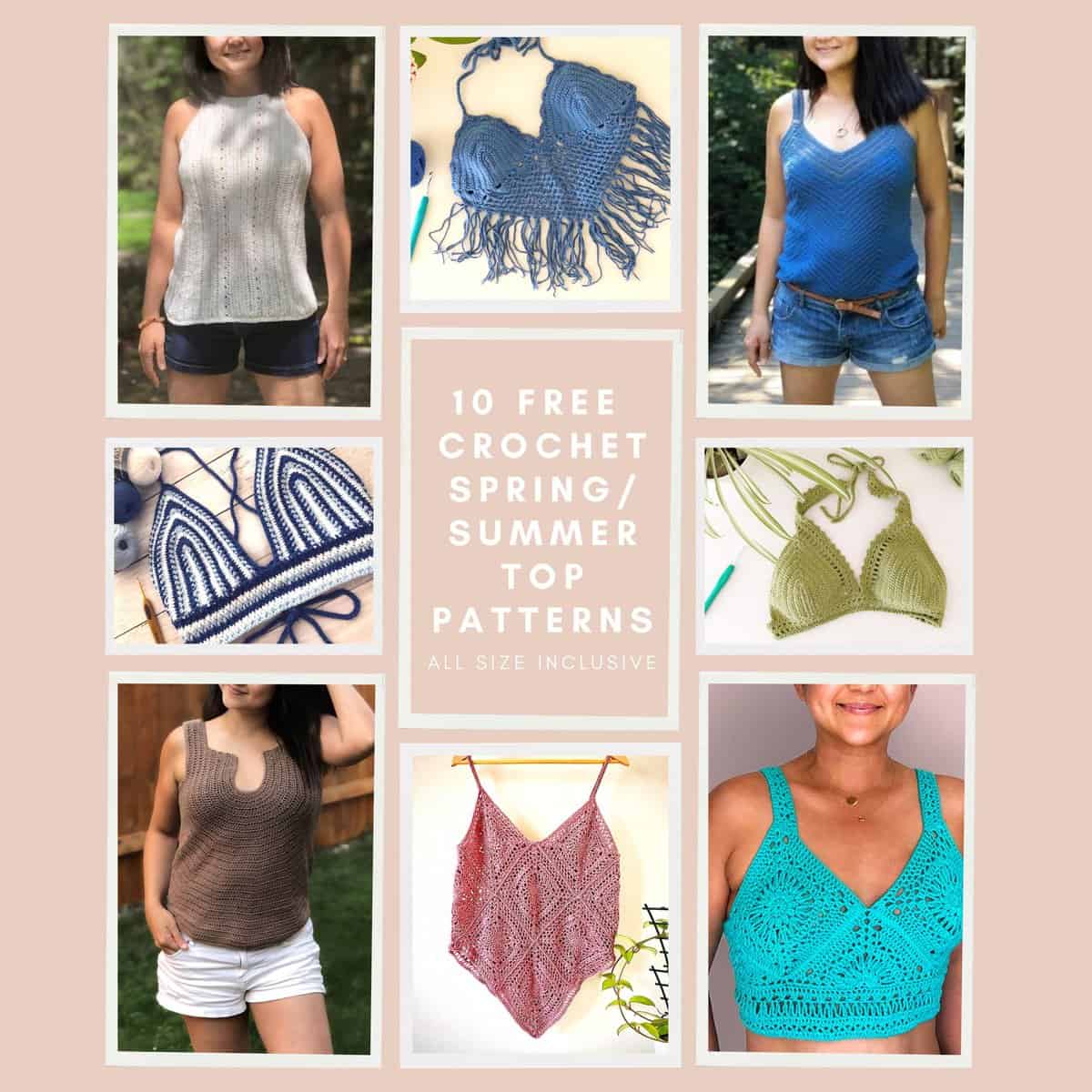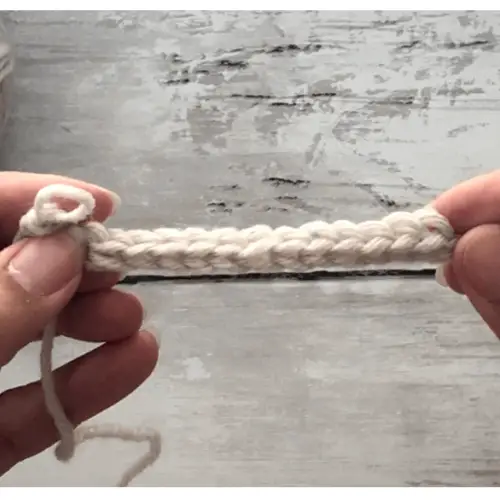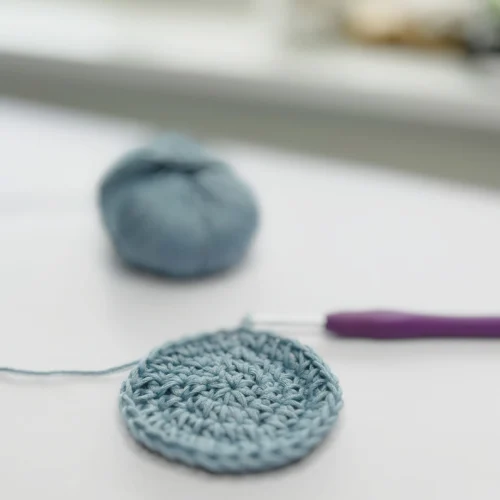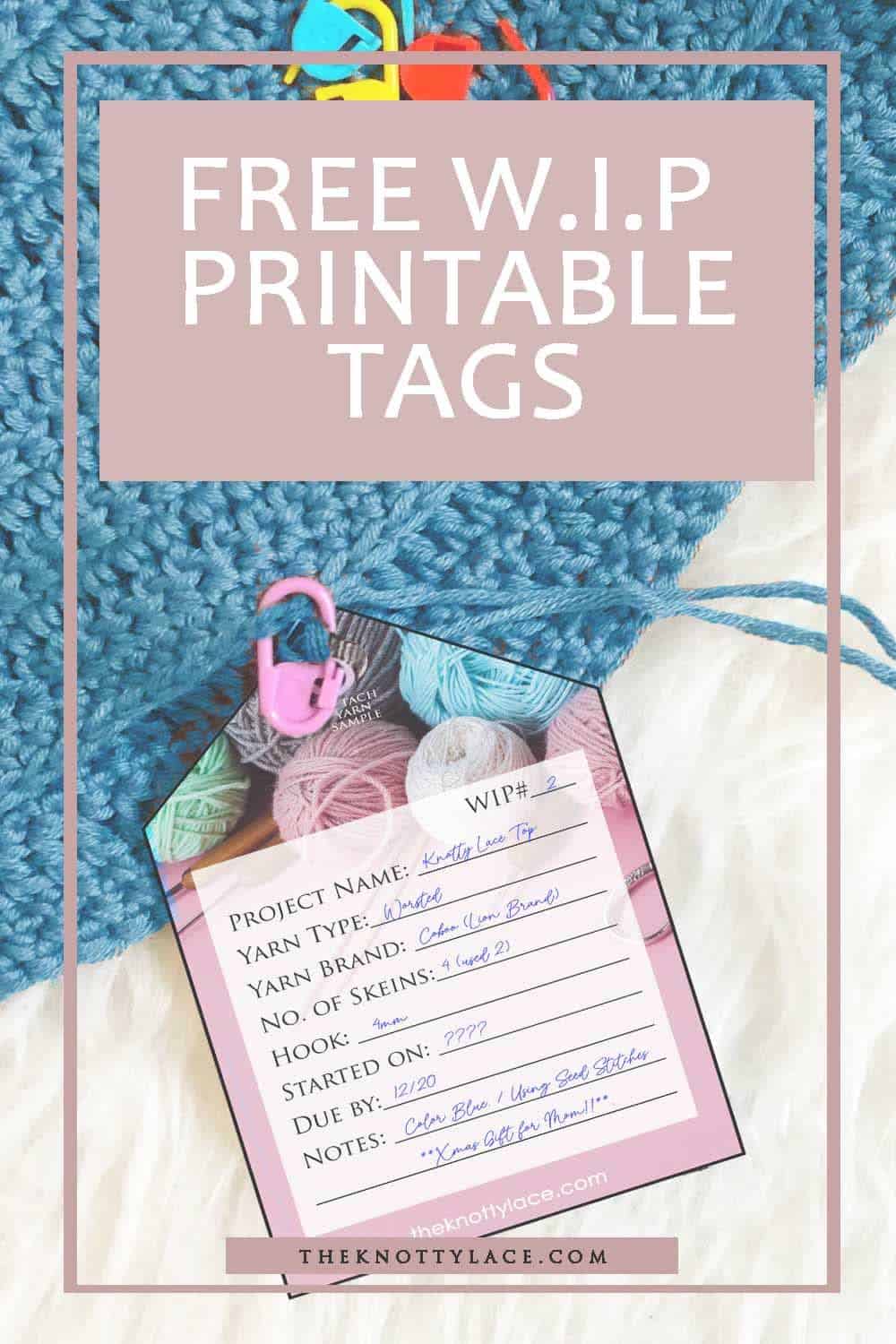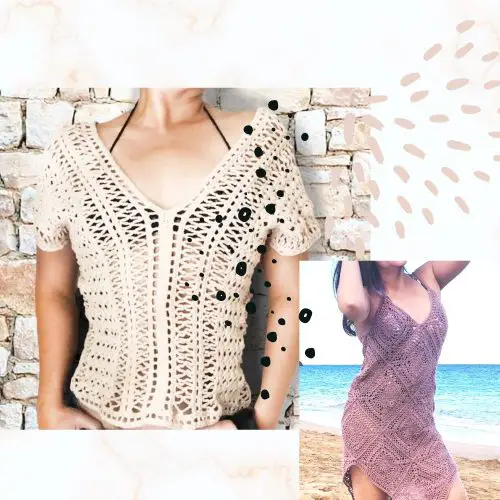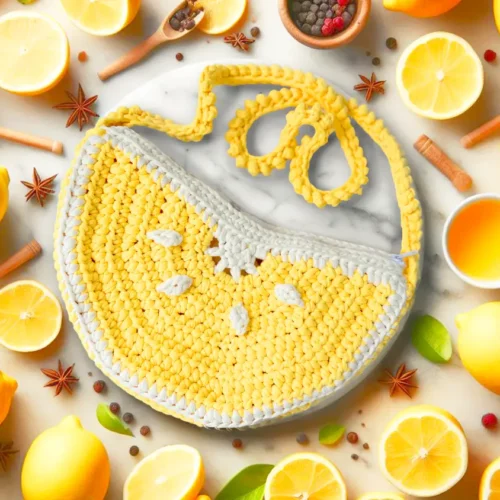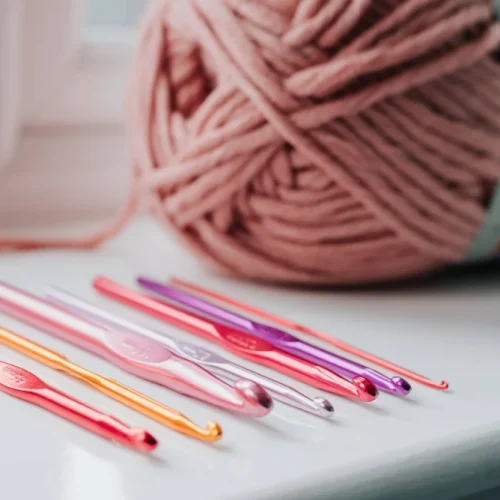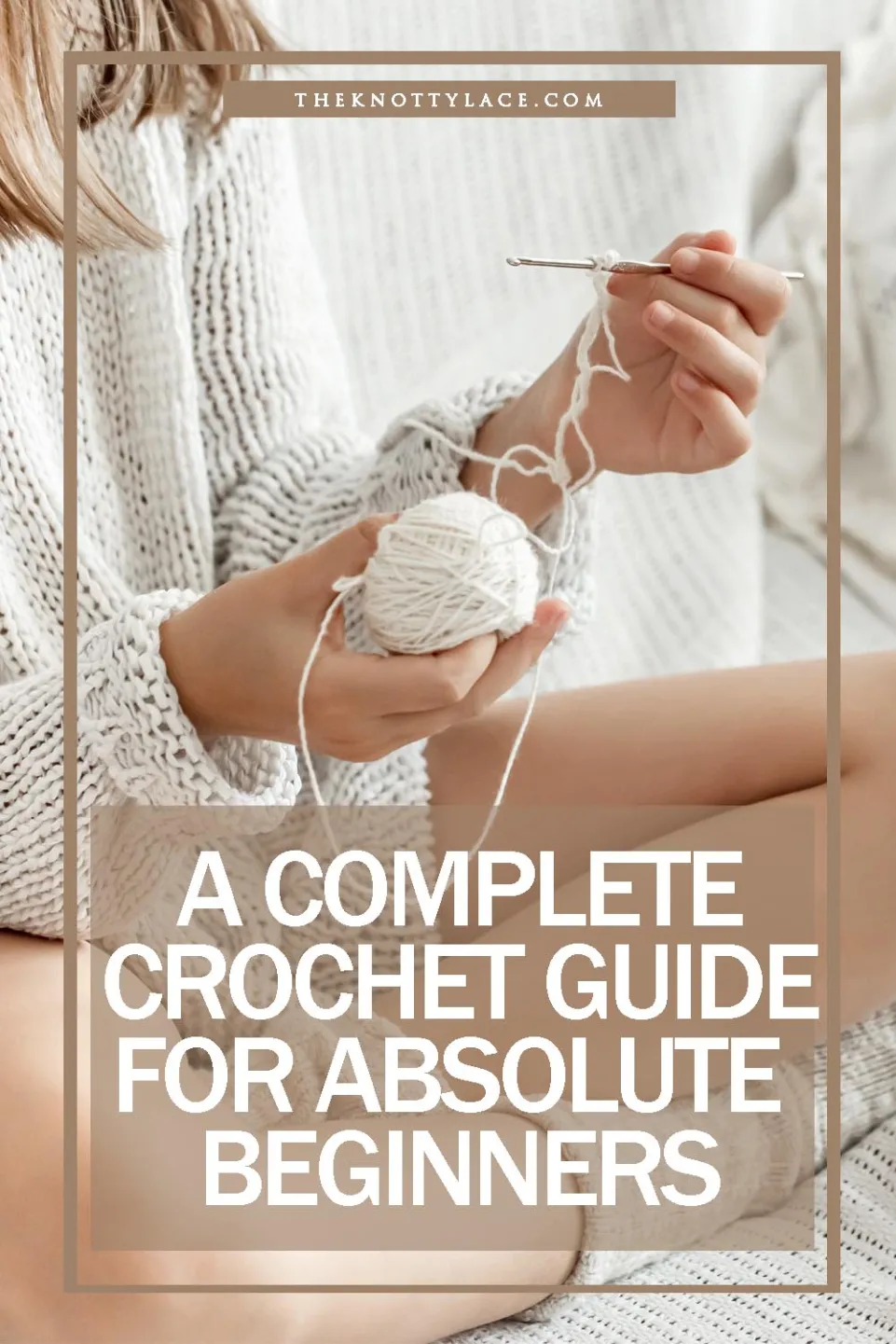
Crochet is a fun and rewarding craft that anyone can learn, and it’s a great way to make all sorts of things, from blankets and hats to toys and home décor.
In this beginner guide, I am going to share with you everything you need to know to get started with crochet. So grab your hook and yarn, and let’s get crocheting!
What is crochet?
Crochet is a French word meaning “hook” and in the craft world is known as an instrument with a hook at the end of the tip used to interlock loops of yarn together creating large textile projects such as garments, accessories, and amigurumi.
Why learn to crochet?
There are many reasons to learn to crochet. It is a fun and rewarding hobby that can be enjoyed by people of all ages.
Crochet is also a great way to relax and de-stress. The repetitive motions of crocheting can be very calming and therapeutic.
In addition, crochet is a very versatile craft and is also relatively inexpensive. You only need a few basic supplies to get started.
Here is a detailed list of the most important tools you will need before starting your crochet journey.
This post may contain affiliate links designed to provide a commission on purchases made at no cost to you. As an Amazon Associate, I earn from qualifying purchases that support my work in providing new content and information on this site.
Related post:
Learn how to crochet a magic ring / magic circle
Learn how to crochet straight edges
Learn how to join 2 yarn ends
5 Basic Steps to Know Before Crocheting
Here are some tips on the best way to learn how to crochet for absolute beginners:
1. Basic Crochet Stitches
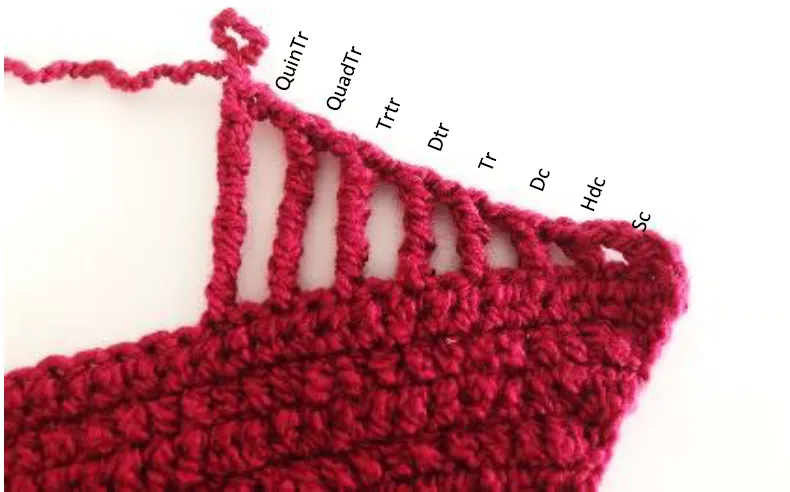
Start with the basics. Learning the foundation chain, and how to do a slip knot and chains is the first thing you would need to know.
Then get yourself familiar with the basic stitches such as the slip stitch, single crochet stitches, half double crochet stitches, double crochet stitches, and triple/treble crochet stitches.
Learning these different stitches will help you move on to more complicated stitch types and new techniques.
- How to start a foundation row – work a slip knot and start by working chains by yarning over and pulling through the loop. Repeat until you have your desired length.
- The single crochet stitch – insert your hook into loop, yarn over and pull through 2 loops.
- The half double crochet stitch – yarn over, insert your hook into loop, yarn over, pull through all remaining 3 loops on your hook.
- The double crochet stitch – yarn over, insert your hook into loop, yarn over, draw up a loop, yarn over, pull through 2 loops, yarn over, pull through remaining 2 loops on your hook.
- The triple or treble crochet stitch – yarn over twice, insert your hook through loop, yarn over, draw up a loop, yarn over, pull through 2 loops, yarn over, pull through 2 loops, yarn over, pull through the remaining 2 loops on your hook.
2. Learn how to read crochet abbreviations
Learning how to read pattern instructions comes next. Once you know what each short code means you are ready to start a swatch.
Commonly Used Abbreviations:
YO – yarn over
Sl St – slip stitch
Sc – single crochet
Hdc – half double crochet
Dc – double crochet
2Hdc – work 2 half double crochet stitches in the same stitch
inc – increase
SM – stitch markers
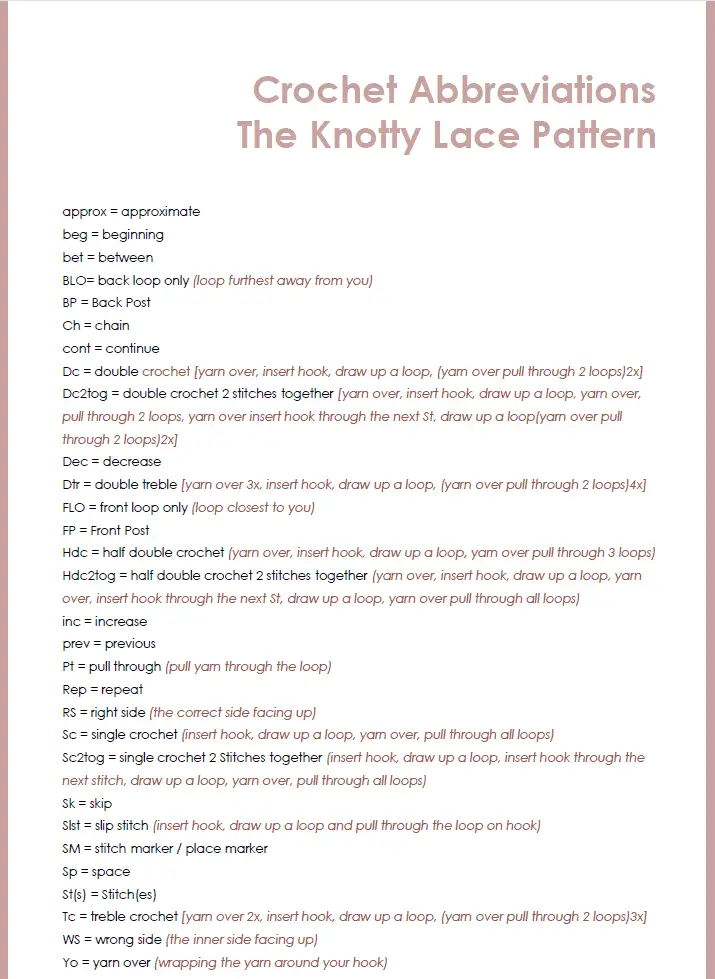
3. Swatch Gauge Samples
Start by making small crochet swatches with the stitch type that you plan to use. It is always a good idea to ensure your hook size and tension are good. To learn more, here is an easy way to learn how to correctly make a swatch gauge.
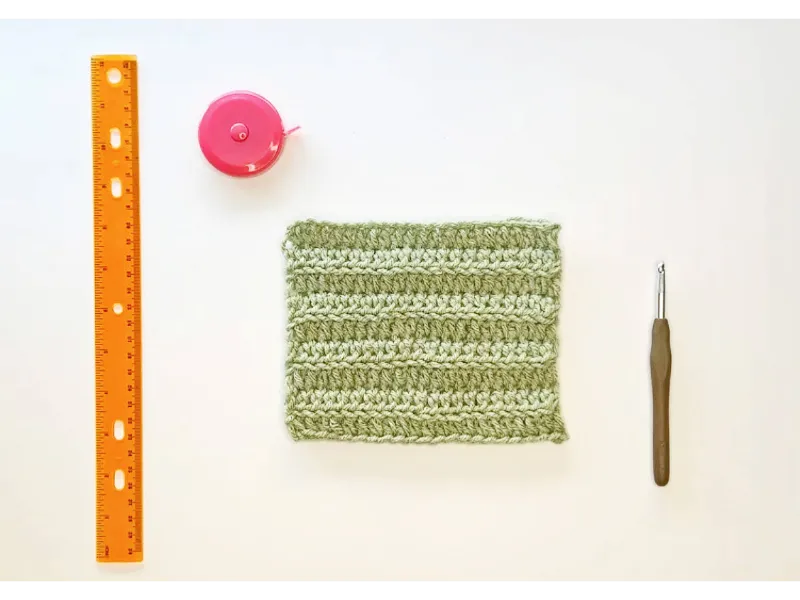
4. Find a good crochet pattern
Once you have learned the basic crochet stitches, you can start crocheting a simple project. Look for beginner-friendly crochet patterns that are easy to follow. Here are some free crochet patterns for you to choose from.
5. Practice, practice, practice!
The more you crochet, the better you will become at it. Don’t be afraid to make mistakes. Everyone makes mistakes when they are first learning to crochet.
The Various Materials You Will Need
To get started with crochet, you will need the following materials:
If you would like to check out all the basic tools needed, here is a list of great basic supplies for beginners.
How to choose the right crochet hook and yarn
When choosing a crochet hook, the most important thing to consider is the size of the hook and the type of yarn you will be using.
The size of the hook will determine the size of your stitches. Larger hooks will create larger stitches, and smaller hooks will create smaller stitches.
There are also different types of hooks available in the market such as ergonomic hooks and inline vs tapered hooks.
The tip of the hook is what sets them apart. You can learn more here.
Here is a list of different crochet hooks in US and UK sizes.
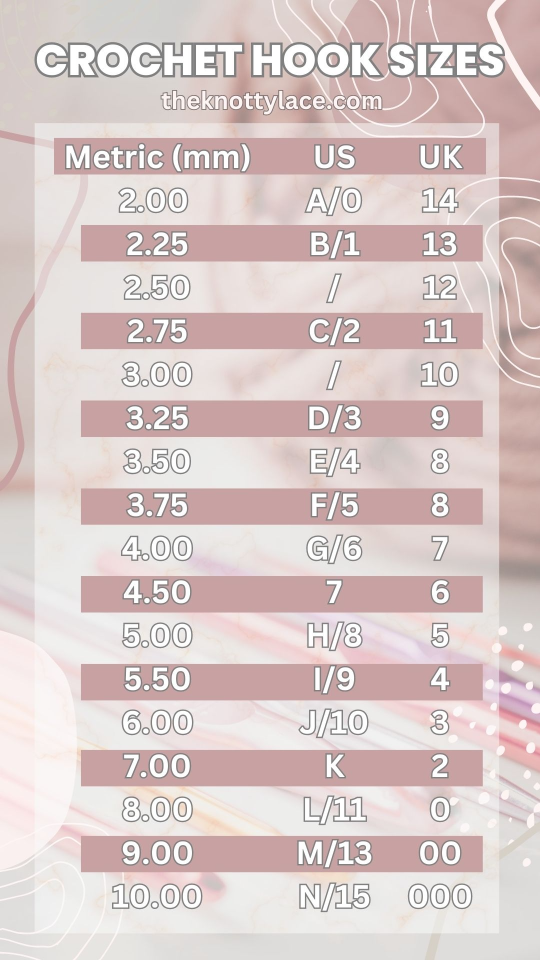
The type of yarn you use will also affect the size of your stitches. Acrylic yarn is fairly inexpensive and is a great choice to practice with.
A worsted-weight yarn is the most common type of yarn used for crochet. It is a medium-weight yarn usually in a Category 4 that is perfect for beginners.
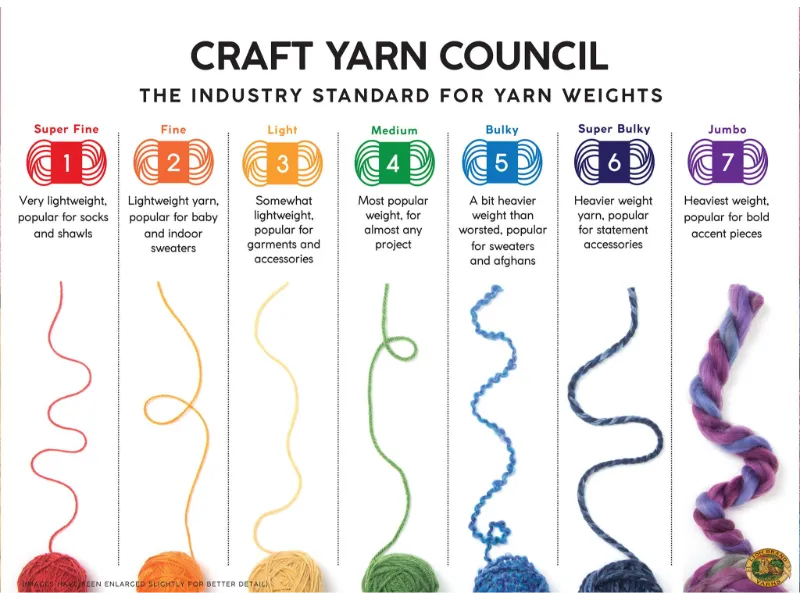
However, it is important to choose a crochet hook that is the appropriate size for the type of yarn you are using.
Another important thing to know is how to read yarn labels or also known as yarn sleeves:
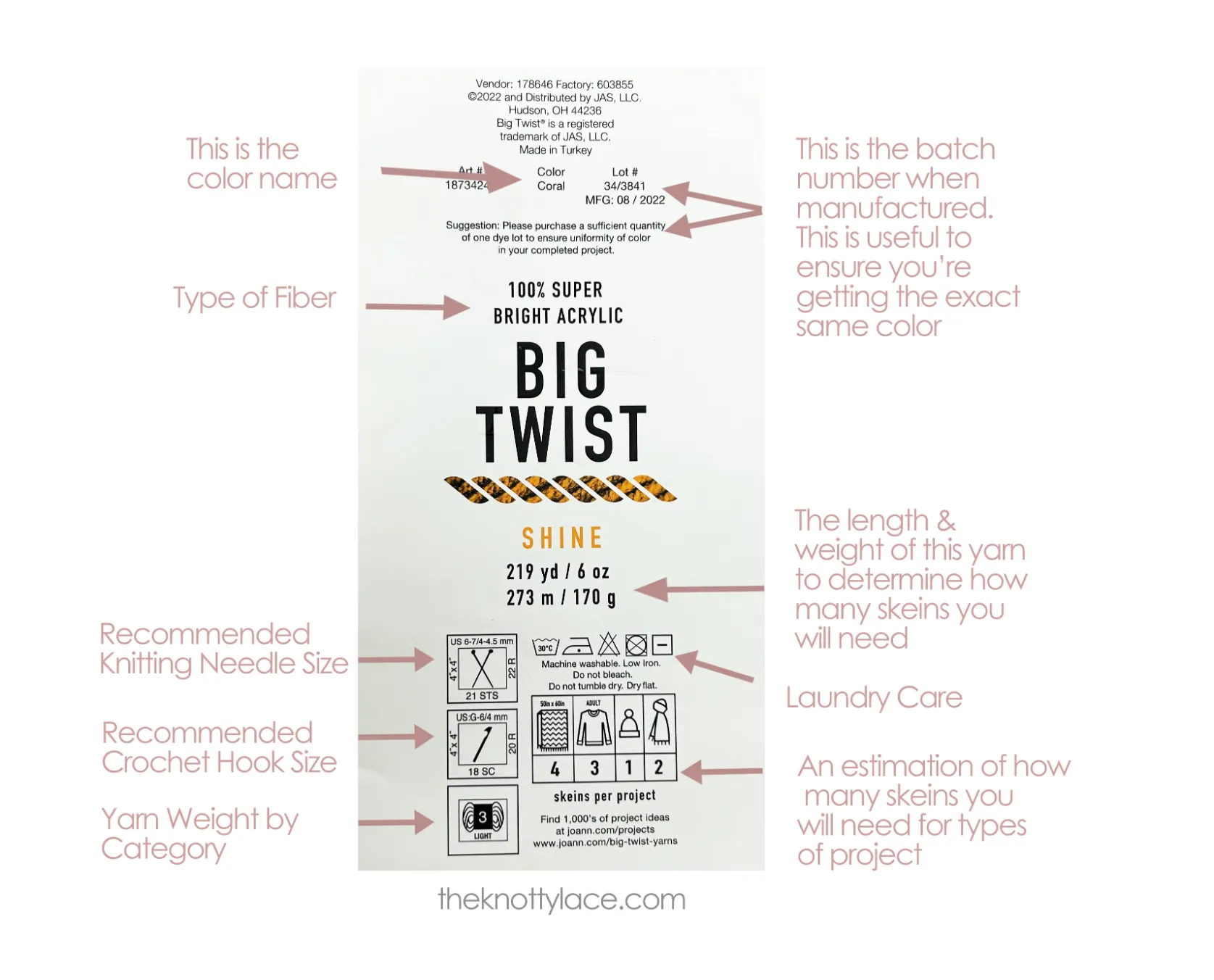
- If you are a complete beginner, it is recommended that you start with an acrylic worsted-weight yarn and a size H/8 (5 mm) crochet hook.
- If you are crocheting a garment, it is important to choose a yarn that is the appropriate weight for the garment. For example, you would use a lighter-weight yarn for a summer top and a heavier-weight yarn for a winter sweater.
Once you have chosen the right crochet hook and yarn, you are ready to start crocheting!
Join Our Mailing List
If you would like to receive more helpful articles like this, don’t forget to click Subscribe to get into our mailing list.
Step-by-Step Guide to Learn how to Crochet
- How to hold the crochet hook and yarn: Choose the grip that is most comfortable for you, either the pencil grip or the knife grip (more on this below).
- How to make a slip knot: Make a loop in the yarn and then insert the hook into the loop. Bring the yarn tail through the loop and pull tight. Here is a step-by-step instructions on how to work up a slip knot in 3 easy ways!
- How to crochet a foundation chain stitch: Make a slip knot and then yarn over (YO) and pull through the slip knot. Repeat this step until you have the desired number of chain stitches. (Learn the chainless foundation method here)
- How to crochet a single crochet stitch: Insert the hook into the second chain from the hook and yarn over. Draw up the yarn through the chain stitch and then yarn over again and pull through the first two loops on the hook. Repeat this step until you reach the end of the row.
- How to turn your work – turning chain: At the end of each row, chain one and then turn your work. This extra chain stitch acts as a turning chain and it helps to keep your edges even. Learn how to do this correctly here.
Different Ways to hold a crochet hook
Pencil grip
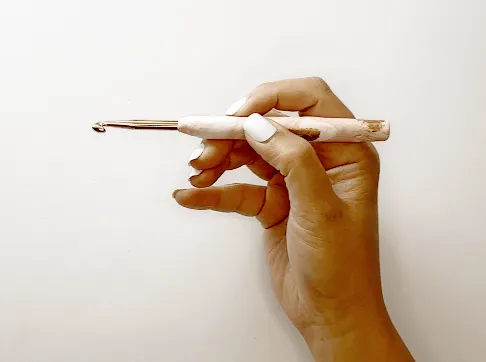
To hold the crochet hook in the pencil grip, place the hook in your dominant hand as if you were holding a pencil. Your thumb and index finger should be on the handle of the hook, and your other fingers should be curled around the back of the hook.
Knife grip
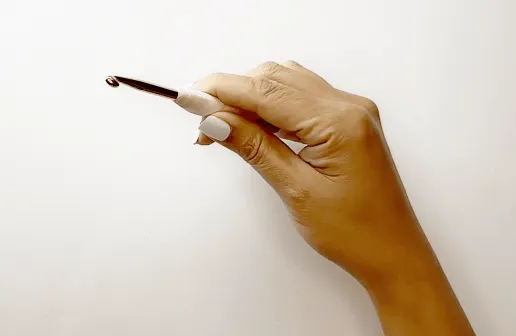
To hold the crochet hook in the knife grip, place the hook in your dominant hand with the handle resting in the palm of your hand. Your thumb should be on one side of the handle and your fingers should be on the other side.
To hold the yarn in the pencil grip, wrap the yarn around your other hand. Then, drape the yarn over your index finger.
Which grip is better?
There is no one “right” way to hold the crochet hook and yarn. The best grip is the one that is most comfortable for you. You may find that you prefer one grip for certain stitches and another grip for other stitches.
Learn more about the knife vs the pencil grip here.
Here are some tips for holding the crochet hook and yarn:
- Hold the hook and yarn loosely but firmly. You don’t want to grip the hook too tightly or your hand will get tired.
- Keep your wrist relaxed. Avoid tensing up your wrist as this can lead to pain and fatigue.
- Use your shoulder and arm muscles to move the hook, not your wrist muscles.
- Take breaks often to stretch your hands and wrists.
Experiment with different grips and find the one that works best for you. Learn how to correctly hold your crochet hook here.
Tips for Beginners
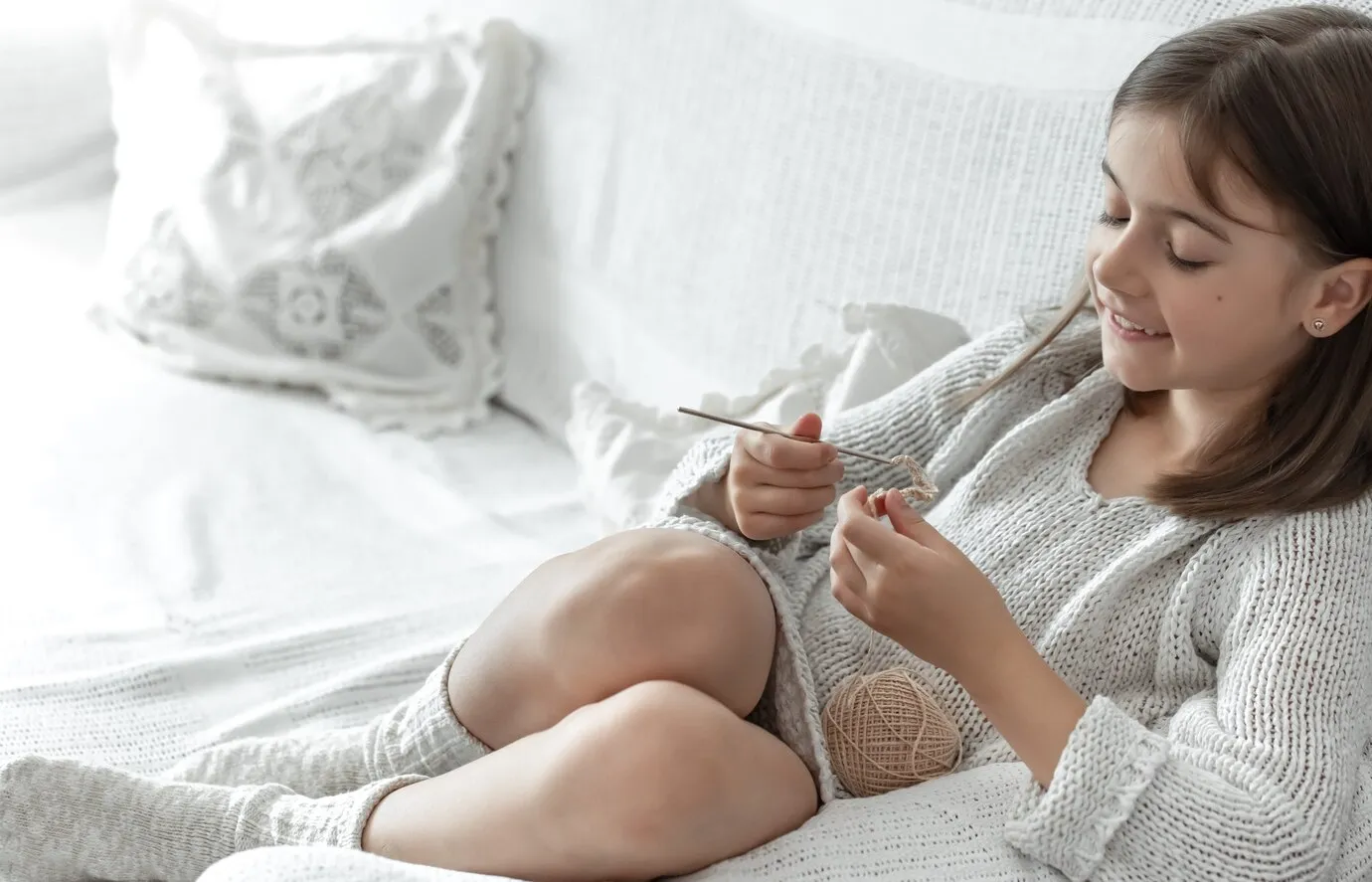
Don’t be afraid to make mistakes. Everyone makes mistakes when they’re first learning to crochet.
Your first project should be simple and easy before working your way up to more complex ones.
Don’t be afraid to ask for help from other crocheters. There is a large and supportive community of crocheters who are always happy to help beginners.
Common Crochet Mistakes
Here are some common crochet mistakes and how to avoid them:
- Tension: Tension is one of the most important aspects of crochet. If your tension is too tight, your work will be stiff and uneven. If your tension is too loose, your work will be floppy and gappy. To avoid tension problems, try to keep your tension consistent throughout your project.
- Counting: It is important to count your stitches and rows accurately. If you miss a stitch or row, your work will be incorrect. To avoid counting mistakes, mark the beginning of each row with a stitch marker. You can also count your stitches at the end of each row to make sure that you have the correct number.
- Turning chain: The turning chain is important for keeping your edges even. If you forget to make a chain at the end of each row, your edges will be uneven. Learn how to get straight edges every time.
- Incorrect hook size: Using the wrong hook size can cause a variety of problems, such as tension problems, gauge problems, and incorrect stitch size. To avoid using the wrong hook size, always check the gauge for your project before you start crocheting.
- Incorrect yarn: Using the wrong yarn type or weight can also cause problems. For example, if you use a worsted weight yarn for a project that calls for a fingering weight yarn, your work will be too large. To avoid using the wrong yarn, always check the yarn requirements for your project before you start crocheting.
- US vs UK Terminology: The main difference between US and UK crochet terminology is the starting point. US terms start with single crochet, while UK terms start with double crochet. This means that the next step up in US terms is half double crochet, while the next step up in UK terms is treble crochet.
Here is a table comparing the US and UK crochet terminology for the most common stitches:
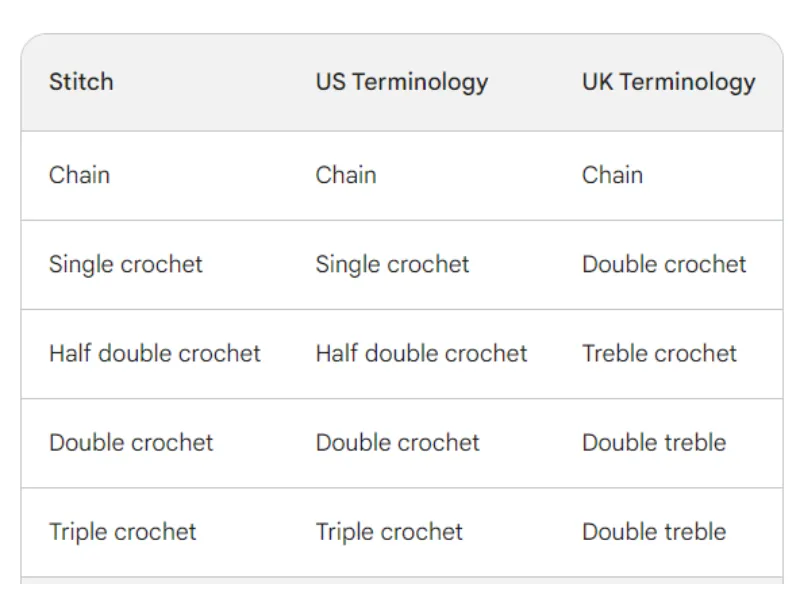
In addition to the different terminology for the basic stitches, there are also a few other differences between US and UK crochet terminology.
For example, in US terms, a slip stitch is a stitch that is used to join two pieces of work together, while in UK terms, a slip stitch is a synonym for single crochet.
Here is another example of differences between US and UK crochet terminology: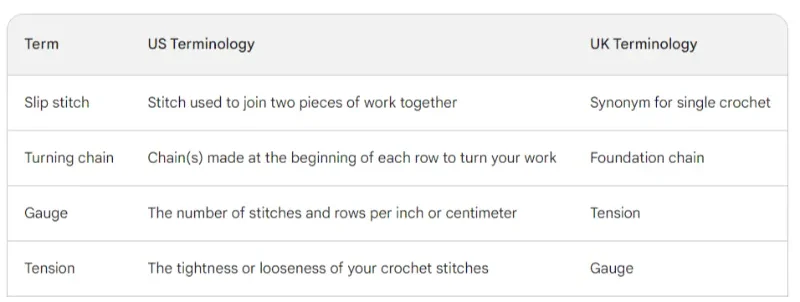
Troubleshooting Tips
If you are having trouble with a crochet stitch or technique, there are a few things you can do to troubleshoot the problem:
- Check your pattern: Make sure that you are following the pattern correctly. If you are not sure how to do a stitch, check the stitch abbreviations or glossary in your pattern.
- Watch a tutorial: There are many crochet tutorials available online. Watching a tutorial can be helpful for learning new stitches and techniques. This is our Youtube Channel.
- Ask for help: If you are still having trouble, don’t be afraid to ask for help from a more experienced crocheter. There are many online and in-person crochet groups where you can ask questions and get help from other crocheters.
Crochet Resources
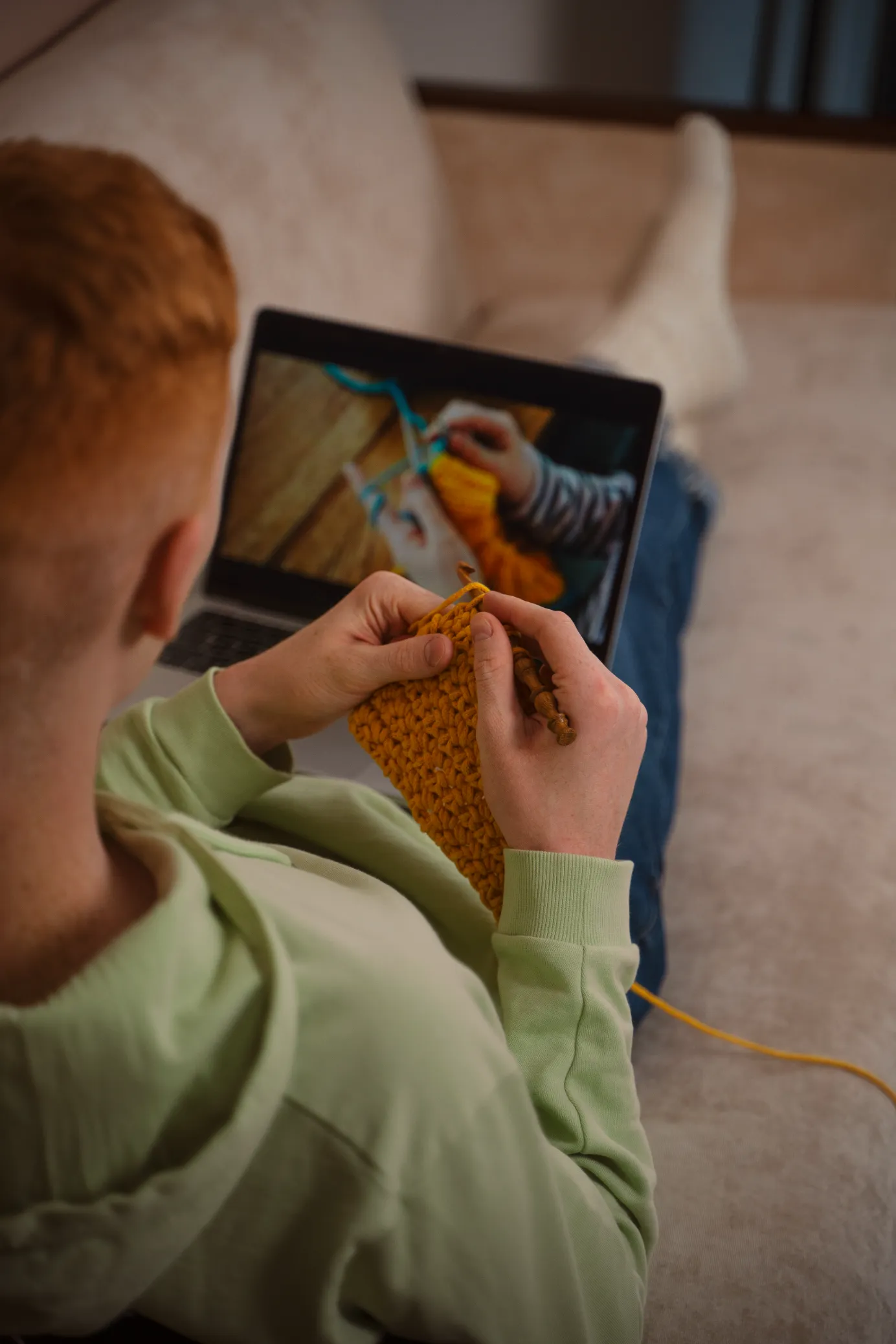
There are many crochet resources available to help you learn and improve your crocheting skills. Here are a few resources that you may find helpful:
- Crochet books: There are many crochet books available that can teach you the basics of crochet, as well as more advanced stitches and techniques. This one is my favorite.
- Crochet magazines: Crochet magazines are a great way to stay up-to-date on the latest crochet trends and patterns.
- Crochet websites: There are many crochet websites that offer a variety of resources, such as free crochet patterns, tutorials, and articles such as The Knotty Lace! :).
- Crochet groups: There are many online and in-person crochet groups where you can connect with other crocheters, share tips and ideas, and get help with your projects.
I hope this beginner’s guide was helpful and informative. Crocheting is a fun and rewarding hobby that can be enjoyed by people of all ages.
Just keep practicing and you will eventually get the hang of it and be on your way to learning more advanced techniques with a variety of crochet stitches.
***
If you are looking for more crochet tutorials and ideas, here are some great links to free patterns and helpful crochet tips:
If you would like to receive more beginner-friendly tips like this, don’t forget to join our mailing list here. And if you would like to share any feedback or comments, please feel free to leave me a comment below.
Don’t forget to follow me on Instagram and Facebook @theknottylace, I would love to connect!
Happy hooking,
Shaz 🧶

